Treasury backed ETS over HWEN

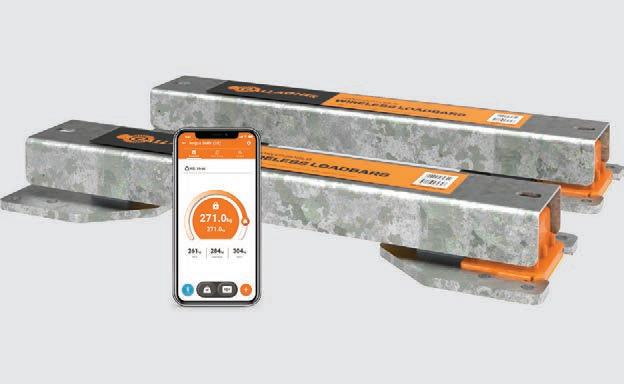
we see the NZ ETS as most closely aligning with our recommended approach.”
TREASURY officials repeatedly advised the government against introducing a levy and split-gas system for costing agricultural greenhouse gas emissions, arguing the sector be included in the Emissions Trading Scheme, documents reveal.

The documents – released to Farmers Weekly under the Official Information Act – reveal that it wasn’t until September that officials accepted politicians were following the He Waka Eke Noa (HWEN) process instead of their advice.
The documents also reveal that Climate Change Minister James Shaw floated the idea of a methane quota system (MQS) to price agricultural emissions and that the Treasury questioned the science behind classes of sequestering vegetation promoted by HWEN.
The Treasury argued that including agriculture in the ETS was simple, would deliver strong price signals and incentivise emission reductions.

“From an economic perspective, our preferred approach is one that prices all emissions in a single market that recognises the relative externalities of these emissions and supports whole-of-economy trade-offs,” the Treasury advised.
“As a whole-of-economy scheme,





Farming groups have long opposed being included in the ETS, saying taxing farmers without them having the tools available to reduce on-farm emissions would simply result in a drop in production and export returns.




Officials noted Landcare Research modelling that found if included in the ETS, 2030 methane reductions targets would be exceeded as sheep and beef farms reverted to scrub and the adoption of technology.
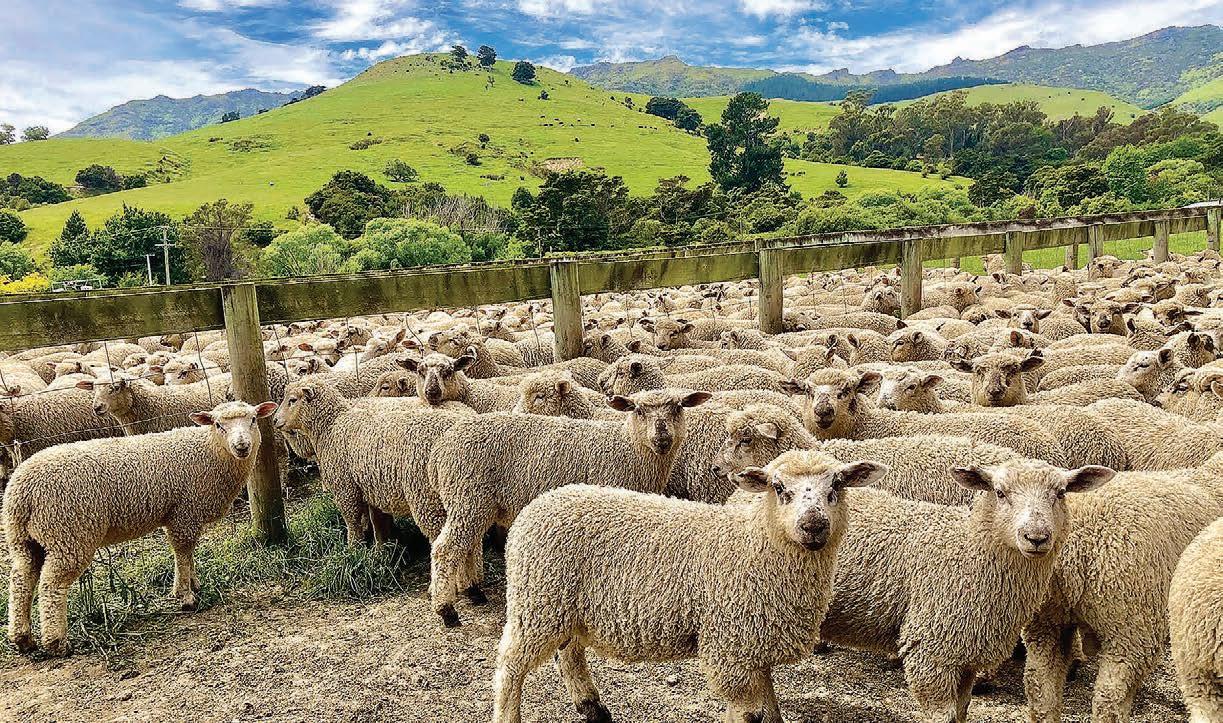
If a levy was adopted, the Treasury advised in July, it must generate a “salient price signal” to drive emission reductions, which it believed HWEN’s levy and split-gas approach and incentives scheme would not achieve.
“We see significant risk in this proposal as written and do not consider it to meet the minimum requirements outlined above.”
In the documents, officials “strongly recommend” and deem it “essential” that HWEN’s sequestration proposal be channelled through the ETS to avoid undermining the scheme, saying it “generates significant equity concerns and carries a high risk of rewarding sequestration that will not contribute towards our targets”.
They also deem it essential that

Regular buyers key to on-farm lamb sales
High country life through a bird’s eyes
New Zealand needs to get back to the basics of looking after people, Cameron Bagrie says.
OPINION 23
Animals bred for less climate impact produce meat just as good, if not better, says new research.
DISCOV E R MORE VOCSID E R EROM 1
The Suftex-Romney lambs offered at the 17th annual Annandale Lamb Sale were a credit to the vendors and sold under blue skies on Banks Peninsula.
Photo: Stewart Uren, PGG Wrightson
MARKETS 5
Award-winning novelist Catherine Chidgey chose the Central Otago high country as the setting for her latest book, The Axeman’s Carnival.
PEOPLE 24
Waikato Feds say there’s no simple solution to the problem of unwanted calves in the dairy industry.
NEWS 11
Vol 20 No 45, November 21, 2022 View online at farmersweekly.co.nz $4.95 Incl GST
ts
186% 7
TECHNOLOGY 25
Alliance grows pro
by
Continued page 3
Neal Wallace POLITICS Emissions
EDITORIAL
Bryan Gibson | 06 323 1519
Managing Editor
bryan.gibson@agrihq.co.nz
Craig Page
Deputy Editor craig.page@agrihq.co.nz
Claire Robertson
Sub-Editor
claire.robertson@agrihq.co.nz
Neal Wallace | 03 474 9240

Journalist neal.wallace@agrihq.co.nz
Gerald Piddock | 027 486 8346 Journalist gerald.piddock@agrihq.co.nz
Annette Scott | 021 908 400


Journalist annette.scott@agrihq.co.nz
Hugh Stringleman | 09 432 8594


Journalist hugh.stringleman@agrihq.co.nz
Richard Rennie | 027 475 4256 Journalist richard.rennie@agrihq.co.nz
Nigel Stirling | 021 136 5570 Journalist nigel.g.stirling@gmail.com PRODUCTION
Lana Kieselbach | 027 739 4295 production@agrihq.co.nz
SALES CONTACTS
Andy Whitson | 027 626 2269 Sales & Marketing Manager andy.whitson@agrihq.co.nz
Steve McLaren | 027 205 1456 Auckland/Northland Partnership Manager steve.mclaren@agrihq.co.nz
Jody Anderson | 027 474 6094 Waikato/Bay of Plenty Partnership Manager jody.anderson@agrihq.co.nz
Donna Hirst | 027 474 6095
Lower North Island/International Partnership Manager donna.hirst@agrihq.co.nz
Andy Whitson | 027 626 2269
South Island Partnership Manager andy.whitson@agrihq.co.nz
Debbie Brown | 06 323 0765
Marketplace Partnership Manager classifieds@agrihq.co.nz
Grant Marshall | 027 887 5568
Real Estate Partnership Manager realestate@agrihq.co.nz
Andrea Mansfield | 027 602 4925
National Livestock Manager livestock@agrihq.co.nz
PUBLISHERS
Dean and Cushla Williamson Phone: 0800 85 25 80 dean.williamson@agrihq.co.nz cushla.williamson@agrihq.co.nz

Farmers Weekly is Published by AgriHQ PO Box 529, Feilding 4740, New Zealand Phone: 0800 85 25 80 Website: www.farmersweekly.co.nz


ISSN
Contents
News in brief GST relief
Proposed changes to tax rules could provide relief for farmers working from their homes. The rule affects those who are GST-registered in their own name and previously left some liable for a significant amount of GST when they sold that home. The proposed change will allow them to elect to keep an asset private.
They would not be able to claim a GST deduction on the purchase of a house, but they would also not have to return GST on the sale.
Fagan wins
Te Kuiti’s Jack Fagan came from behind to win the New Zealand Corriedale Championships at the NZ Agricultural Show in Christchurch earlier this month, the first shearing event in the new Southern Series.
Fagan finished 18 seconds behind Scotsman Gavin Mutch but took the title with fewer penalty points. Fagan finished just ahead of Southland shearer Nathan Stratford with Mutch third.
EastPack expansion
Post-harvest kiwifruit operator and cooperative EastPack has announced a $30 million issue of five-year subordinated notes at a minimum annual interest rate of 8.5%. It will use the money to expand kiwifruit processing and packing capacity and efficiency. Lead underwriter and specialist primary sector investment company MyFarm has underwritten $15m of the capital raising.
Free trade upgrade
An agreement has been reached to upgrade New Zealand’s free trade deal with the Association of South East Asian Nations. It is intended to further boost two-way trade, worth $20 billion a year, and has led ASEAN nations to take 10% of all New Zealand exports. The agreement aims to improve that further by upgrading the 14-year-old ASEAN-Australia-New Zealand Free Trade Area.
Back in 1860, exporting meat to the other side of the world seemed about as easy as nailing gravy to the ceiling. But a few determined kiwis took the bull by the horns and now our grass-fed beef and lamb is sought-after all around the globe.
At AFFCO, we see the same pioneering spirit alive and well in farmers today. We’re playing our part too – exploring every opportunity to take New Zealand’s finest farm-raised products to the world.
WWW.AFFCO.CO.NZ 0800 233 2669
pioneering spirit
us
of reach WAVE200472 AFFJ200472 NZ Farmers Weekly Strip Ad FA.indd 1 24/08/22 3:22 PM 2
our
tells
nothing’s out
New Zealand’s most trusted source of agricultural news and information
2463-6002 (Print) ISSN 2463-6010 (Online)
ADVERTISING MATERIAL
SUBSCRIPTIONS
PRINTER Printed by Stuff Ltd Delivered by Reach Media Ltd Advertise Get in touch BROADSIDES: Outgoing Fonterra Shareholders’ Fund management company chair John Shewan says Fonterra should have bought out the fund. STORY P13 News � � � � � � � � � � � � � 1-19 Opinion � � � � � � � � � 20-23 People � � � � � � � � � � � � � � 24 Technology � � � � � � � � � 25 World � � � � � � � � � � � � � � � 26 Ag&Ed � � � � � � � � � � � � � � 27 Fieldays � � � � � � � � � 28-32 Real Estate 33-52 Marketplace � � � � 53-54 Livestock � � � � � � � 55-57 Markets � � � � � � � � � 58-63 Weather � � � � � � � � � � � � 64
Supply to: adcopy@agrihq.co.nz
0800 85 25 80 subs@agrihq.co.nz
GDT lifts a little, against the trend
Stringleman MARKETS Dairy
GLOBAL Dairy Trade prices registered a surprise 2.4% increase in the second fortnightly November auction after three consecutive sizeable falls since the beginning of October.
Both whole milk powder and skim milk powder prices rose by 3.1% in the GDT auction, and anhydrous milk fat was up 2.7%.
Dairy market analysts differed on what they thought was the underlying cause of the market lift – in particular, whether Chinese demand was rebuilding after the easing of covid-19 restrictions.
NZX dairy insights manager Stu Davison said it is possible the lift was a technical bounce before prices keep easing.
Chinese importers bought only
half of the whole milk powder volumes they bought at this time in 2021.
“We expect this weak trend to continue during China’s zerocovid policy timeframe,” he said.
But by contrast, Chinese buyers stood out in skim milk powder trading.
this auction as an opportunity to secure product at a bargain price, potentially allowing them to step away again for a few auctions.”
Westpac senior agri economist Nathan Penny said some easing of the covid restrictions in China may be a pragmatic move that will contribute to demand for dairy products.

But the NZ dollar had risen in value to US61c after being as low as 55c during the past month.
Penny stuck with his farm gate milk price forecast of $8.75/kg for the current season and $10 for next season, as the Chinese recovery took hold.
“This auction was a positive result, and it will most likely buoy the market for a session or two.
“However, there is also the real possibility that buyers saw
ASB economist Nat Keall said the lift in the GDT index was a surprise considering that demand from China is still weak, with that market currently taking only half the volumes it did a year ago.
“We don’t expect prices to make a more sustained recovery until
that Chinese demand comes back – and that doesn’t look imminent.
“Alongside ultra-tight global supply, aggressive purchases by China helped fuel the massive
gains in dairy prices we saw over early 2021, and then largely kept them high over the first part of this year, so the subsequent absence of strong Chinese demand has been sorely missed.”
Treasury questioned HWEN’s sequestration plan
governance and price-setting of a levy be independent to ensure it incentivised the scale of change needed to meet emission targets.
“Independence would be achieved by removing industry representation from the governance board (and instead fostering sector inclusion using an advisory board or equivalent mechanism).”
The proposal to not include sector representation in governance mechanisms has since been flagged by industry leaders as one of the key problems it has with the government approach.
Fertiliser pricing should be at processor level and set through
the ETS, the Treasury advised.
In later documents the Treasury questioned the credibility of some vegetation HWEN was promoting for sequestration, saying it may compromise emission pricing and put methane targets at risk.


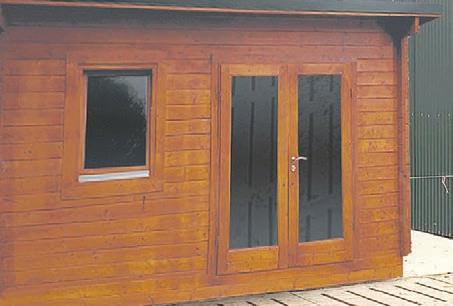




Shaw’s proposed MQS would establish an annual capped quota of methane emissions units which farmers would acquire as needed through an auction or trade on a secondary market.
This was later dismissed due to feasibility risks and the time taken to implement.
By September, when the government had settled on a split-gas farm level levy, Treasury officials advised that the methane
price be either tethered to the ETS or based on advice from the Climate Change Commission. They also advised the scheme include an output-based form of

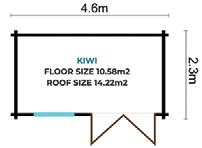
In some places there are likely to be existing land uses that are no longer viable when facing the full costs of their production ... There may also be categories of land use that become less viable overall.
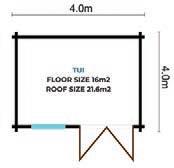
Treasury advice
financial assistance to manage adverse effects, that vegetation sequestration be decoupled from pricing and channelled through the ETS, and that the scheme be cost neutral.
Officials acknowledged the pricing emissions will result in structural change.
“In some places there are likely to be existing land uses that are no longer viable when facing the full costs of their production (i.e. including externalities).
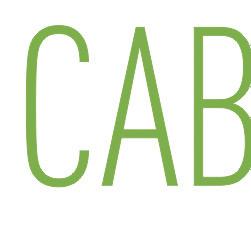



“There may also be categories of land use that become less viable overall.”
Preliminary modelling showed rapid structural change by 2030 and changes to the mix of primary sector commodities.
“For instance, red meat subsectors experienced large decreases in production and net revenue. Dairy had more moderate decreases.

“Conversely, forestry and scrub land increased (based on area), which could have implications for employment as permanent forest typically has less employment per hectare than livestock farming.”
“Lastly, horticultural and arable farming also increased (based on area), although to a lesser extent than forestry.”
While structural change was necessary, officials acknowledged the pace would “cause significant disruption for the sector, supply chains and impact communities”.
Your farm office / extra accommodation sorted – Easy-to-build cabins
Assemble
you
Weekly
and your
To
European Premium
www.eucabins.co.nz FANTAIL KIWI KEA TUI LK113886© 3 FARMERS WEEKLY – farmersweekly.co.nz – November 21, 2022 News 3
Flat pack kitsets come complete with everything you need – from the piles to the roof. • 8.5m2 - 25m2 • Priced from $11,350
yourself or we can build it for
Farmers
Special – Order your cabin prior to December 31, 2022
order will be freight free to the city nearest to you.
find out how easy it is to have your own
cabin call James on 027 269 9498
Continued from page 1
Hugh
We don’t expect prices to make a more sustained recovery until that Chinese demand comes back – and that doesn’t look imminent.
Nat Keall ASB
EASING: Westpac senior agri economist Nathan Penny says some easing of the covid restrictions in China will contribute to demand for dairy products.
Feds take issue with proposed RMA system


 Neal Wallace & BusinessDesk NEWS Environment
Neal Wallace & BusinessDesk NEWS Environment
PROPOSED changes to the Resource Management Act will shift environmental consent applications from being assessed on effects to being based on outcomes.
Environment Minister David Parker last week introduced a new resource management system he said will better protect the environment, reduce red tape, lower costs and shorten the time for applications to be considered.
But Federated Farmers board member Mark Hooper said he fears the proposed changes shift the focus from sustainable management to a purpose statement that is singularly focused on environmental protection.

This means that not only must resource use avoid impacts on the environment, but it must promote outcomes that benefit the environment and he said this will mean more red tape and bureaucracy.

“Under the proposed new law it will be harder, not easier, for farmers to obtain resource consents,” Hooper said.
Parker proposes replacing the RMA with Natural and Built

Environment (NBE) and Spatial Planning documents, which will see more than 100 RMA Plans replaced by 15 regional-level plans across New Zealand.
These will be created by regional planning committees to guide land and resource use at a strategic level.
They will have a minimum of six members, of whom two must represent iwi and one central government.
Local councils will then produce and administer operative plans for areas within each region in a manner similar to RMA consenting.
This will allow more permitted activities and faster consenting. Operative plans will be produced in four rather than the current 10 years.
Parker said the most significant change to environment protection will be a shift from an effectsbased approach to one based on outcomes.
“Put simply, an effects-based approach often saw many small adverse effects accumulate into significant environmental degradation – most notably with water quality and loss of biodiversity and topsoil.”
The build environments law will set limits to maintain current environmental levels and targets where degradation needs to be


restored, he said.
Allocations will be determined on the basis of economic efficiency, fairness, sustainability and value of improvements, but not land value.

Water right renewals will be easier, but renewal periods will be shorter than the current 35 years.
Water passing through hydro schemes will be exempt from allocation.
The built environments law would be more akin to the RMA, in that it deals with the localised
assessment and decision-making on individual resource consent applications.
Because these applications will need to be for activities that are allowed for in a particular place by the regional spatial strategy, more activities will be permitted and not need a consent, and others should be easier to consent.
All existing national policy statements and national environmental standards created under the RMA will be carried forward.
Agriculture Minister Damien O’Connor said the current system takes too long, costs too much and does not adequately provide for development nor manage cumulative environmental effects.
“The new system aims to reduce reliance on consenting and have clearer directions in plans for different parts of New Zealand on
what is permitted and prohibited.”
He urged those in rural communities to make submissions to the Select Committee on the proposed changes.

National’s spokesperson on housing and infrastructure and acting environment spokesperson Chris Bishop said the new bills add more bureaucracy, complexity and introduce significant legal uncertainty.

“More centralisation, bureaucracy and control is not the answer.
“We need to make it easier for Kiwis to get things done,” Bishop said.
“That means giving New Zealanders the certainty as to what they can and can’t do on their land and reducing the need for the bureaucratic rigmarole we have at the moment and the ability for planners to hold up legitimate development.”
Regular buyers keep on-farm lamb sales aloft
Suz Bremner MARKETS Lamb
REGULAR buyers are keeping onfarm lamb sales alive in uncertain times this year, as the South Island farms start their rounds.
PGG Wrightson agent Stewart
Uren was on Banks Peninsula last Wednesday at the Annandale sale and said while the sun shone there was a shadow over the auctioneering.
“The established sales like Annandale have benefitted from the buyers who come back each year and they were active on
the top-end lines, but there was limited interest on anything too longer term, due to the uncertainty in the current climate.”
This sale has been running for 17 years and one buyer from Sheffield has been there from the start, while others have been buying for at least four or five years.
The lambs offered were SuftexRomney and had been sex-drafted.
The top prime lambs made $133.50 compared with last year and stores traded at $84-$121 with the smaller lambs retained to sell at a later date.
Hazlett also sold on farm throughout the week, starting in
North Canterbury on Tuesday and Banks Peninsula on Wednesday.
At Northcote Farming Limited, a top lineup of 2700 Suffolk and Suftex-cross mixed-sex sold for $95-$180.
Ian Campbell 021 271 5963 ian.campbell@omya.com Nevan Ofsoski 021 935 379 nevan.ofsoski@omya.com Calciprill leaves all other limes for dust! A 2-6mm lime granule made in Waikato from finely ground high purity limestone. • Cost effective • Low in dust, easy to spread • Breaks down rapidly in moisture • Can be applied using your own equipment • 95% < 75 microns www.omya.com/nz-en Application rate guide (kg/ha)* Soil type Topdressed 0.5 pH increase Direct drilled or air seeded Sand/loamy sand 300 75 Sandy/silt loam 500 125 Clay/loamy clay 625 150 10-15% organic matter 750 175 +25% organic matter 1000 200 *Omya recommends you soil test recularly and seek advice from independent agricultural professionals Look for Calciprill on LK0112858© 4 FARMERS WEEKLY – farmersweekly.co.nz – November 21, 2022 News 4
Cranford Downs
Continued next page
DIGGING DOWN: Environment Minister David Parker last week introduced a new resource management system he said will better protect the environment, reduce red tape, lower costs and shorten the time for applications to be considered.
Under the proposed new law it will be harder, not easier, for farmers to obtain resource consents.
Mark Hooper Federated Farmers
Even as it slows, China key to NZ sales
Neal Wallace NEWS Markets
ARESET of the Chinese economy currently underway is expected to permanently change a key trading partner, but one of New Zealand’s biggest meat companies said it will remain a valuable market.
Exporters are experiencing softer prices out of China, and Alliance Group sales manager Shane Kingston said the market is very different to what it was three or four years ago, but he is confident China will remain one of NZ’s most important and financially significant red meat markets.

The World Bank reports that for the first time in 30 years China’s economic growth could be surpassed by that of other Asian countries.
A Ministry for Foreign Affairs and Trade (MFAT) analysis said despite some improvement during the second quarter of this year, economic headwinds remain, with forecast annual economic growth of 2.8% up to September.
In 2021 China accounted for 32% of NZ’s total exports, and Stats NZ data shows the importance of the market was even more pronounced for dairy, accounting for 44% of NZ’s exports, 90% of logs and 41% of meat.
Kingston said multiple factors are affecting the Chinese market.
The government’s zero covid policy has kept about 200 million
people in lockdown at any one time for much of the past year, reducing their earning ability, and curbing travel and demand for restaurant or food service.
Since April the Chinese renminbi has depreciated 14% against the US dollar, and economic growth has also eased.
Meanwhile stocks of domestically produced sheepmeat, beef and pork are growing.
Kingston said there is no single fix but Alliance is working with customers to get product in front of consumers and is looking at innovation.
passed on, SFF hopes it could lead to greater consumption and demand.
Venison sales into China are tracking well with prices and demand stabilising and the outlook settled.

SFF has revised its indicative pricing for the coming months: prime beef $6.50-$6.10/kg, bull beef $6.20-$5.80, cow $4.70-$4.40, lamb $7.20-$6.80, mutton $5.60$4.50 and venison $8.90-$9.10.
The MFAT analysis on China warns of a risk to economic growth from weak domestic consumption, outside of vehicle purchases, decelerating export growth and the prolonged impact of a depressed property market.
followed with a younger offering of down-cross mixed-sex, which made $89-$136, and Romney wethers at $60-$102. Two properties sold lambs with PGG Wrightson on Banks Peninsula on Wednesday – Putiki Farm sold 2300 Poll Dorset-Suffolk mixed-

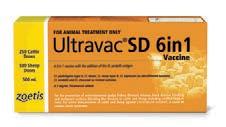

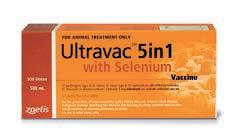

“Definitely in the medium term, the trend is for China to be more self-sufficient in protein,” he said.

A Silver Fern Farms (SFF) market report states that China and the United States are oversupplied with South American beef, and mutton, for which China is a key market, is oversupplied with Australian exports.

Sales over the Chinese New Year in late January will be a crucial market indicator, but with mutton consumption traditionally increasing in cooler months and if those cheaper prices are being
sex at $80-$169 and Romney ram lambs for $66-$115.
Howden Farming offered up 2100 undrafted terminal-cross lambs, which made $63-$160.
The Te Whanga Station onfarm sale followed 1800 lambs sold at the Masterton saleyards in Wairarapa last Wednesday.
PGG Wrightson regional
Added to this was an unprecedented heatwave and drought over large parts of southern China in July and August, while covid lockdowns in the economic hubs of Chengdu and Shenzhen in early September disrupted supply chains, industrial production and services, and domestic consumption.

The Chinese government has come to the rescue of a deepening property recession on which sales fell 50% in the year to August.
It is offering credit support for debt-laden housing developers and assistance for deferred-payment loans for homebuyers.

“Economic commentators highlight the continued financial distress of real estate developers as a significant risk to mediumterm economic growth,” the report warned.
China-based NZ businessman
manager Steve Wilkinson said a market is still trying to be established.
“There were a lot of calculators out and numbers being tapped in as there haven’t been enough lambs through the system to really establish where prices are at.”
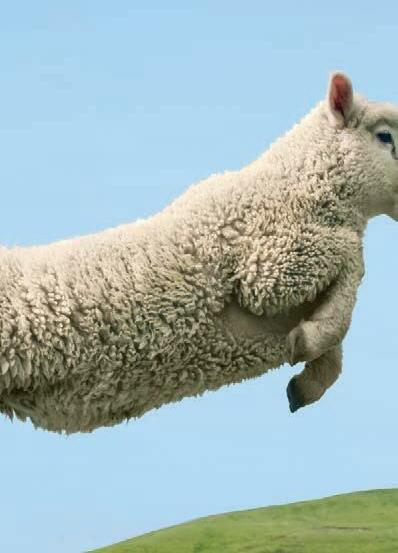
Five thousand lambs sold at Te
and investment consultant David Mahon wrote that the core direction of the Chinese government was unchanged by the recent National Congress of the Chinese Communist Party.
“Contrary to the views expressed by leading Western observers, most of those appointed to key positions in the politburo and the ministries are even more marketforces orientated than their predecessors,” Mahon wrote.
“They are also more openminded than their predecessors, having come of age in times of unprecedented growth and national prestige rather than
Whanga and over the two sales most were terminal mixed-sex with a quarter of the day taken up with Romney cryptorchid.
The better end of both classes sold to expectations but limited feed and concerns around schedules and demand impacted the longer term types.
Wilkinson estimated the better
revolution and want.”
The current easing in China’s economic growth is temporary and the potential of the market remains, said the NZ China Council.
Chief executive Alistair Crozier said China is the last major country still grappling with covid.
He said the days of year-on-year double-digit economic activity are unlikely to return, but the growth between what it is now and what it was is still exceptional.
“All the projections we see point to further expansion of the middle class in the medium and long term.”
types were selling for $3.60-$3.70/ kg with prices dropping to $3.30$3.40/kg for the lighter types.
The top lambs on farm made $133.50 for 115 blackface while medium types traded at $98-$110.
Across the on-farm sales held so far, prices for 2022 are around $20$25 per head back on last year’s results.
1. Usach, I. Martinez, R. Festini, T. Peris, J. E. (2019) Subcutaneous Injection of Drugs: Literature Review of Factors Influencing Pain Sensation at the Injection Site. Adv Ther 36:2986–2996. 2. Bingham, C. M. & Hodge, A. (2022) Lamb mortality and clostridial disease. New Zealand veterinary Journal 70 (1) 49-54. Zoetis New Zealand Limited Tel: 0800 963 847, www.zoetis.co.nz. ULTRAVAC is a registered trade mark of Zoetis. ACVM No.A3585, A6926, A10191, A11606 and A11607. Ultravac clostridial vaccines are concentrated into a 1ml dose for sheep. Research shows smaller dose volumes are less painful when injected1. With fewer pack changes needed, it’s also much less of a pain for you. Ultravac vaccines protect ewes and lambs against the key clostridial diseases. New Zealand trialwork showed vaccination reduced lamb deaths from docking to pre-lamb by 23%2 Choose Ultravac. Proven in the paddock. A little Ultravac®
a long way. Find out more at sheepsolutions.co.nz Only available from your vet. 5 FARMERS WEEKLY – farmersweekly.co.nz – November 21, 2022 News 5
goes
All the projections we see point to further expansion of the middle class in the medium and long term.
Alistair Crozier NZ China Council
ON THE MENU: Alliance Group sales manager Shane Kingston says the co-operative is working with customers to get product in front of consumers in China.
Continued from previous page
A MATCH MADE IN CLEVEDON
With current strains on global supply chains there’s something to be said for keeping them as short as possible. Just south of Auckland two producers have done just that and built a wonderfully symbiotic relationship.
Clevedon Buffalo Co. is run by Richard and Helen Dorresteyn, true pioneers and the first to farm buffalo in New Zealand in 2007. Helen describes her unique livestock as “akin to a hippo with legs.”

“15 years ago, when we first conceived of the project, I didn’t realise that I would be able to look at a buffalo in my fifties and go ‘Wow that is a nicely bred buffalo!’.”
Their research led them to a Buffalo Bull show in Italy which was followed by a few vinos with a local buffalo farmer.
“He kept saying ‘It must be Medica grass, Medica grass’ and that’s about as far as the conversation went. We worked out Medica grass is Lucerne, which is a big part of the protein in their diet, so it’s important.”
And it just so happened that just down the road in Pukekawa, Hinemoa Quality Producers had also discovered the wonders of the Medicago sativa plant.

Chris and Vikki Nicholson own and run the operation that’s blessed with beautiful Pukekohe volcanic soil.

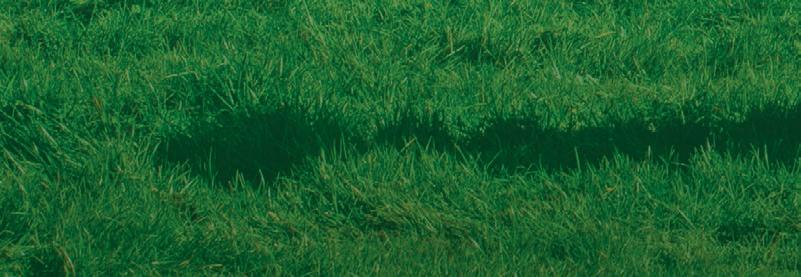

Vikki says that initially the Lucerne was a rotational crop put in in between resting paddocks as part of their vegetable growing operation.

“We couldn’t believe how many cuts you could get off a Lucerne crop,” says Vikki. “We can get about eight cuts a year as opposed to other grasses that just don’t perform like that.”
“We initially planted it to improve our soil health as we had some disease from our onion paddocks. So, you put the Lucerne in for three to four years and it’s got such deep roots it goes down and improves the soil condition of the farm.”
A vet made the introduction between the two producers and the relationship blossomed.
“It’s been great” says Helen. “At the moment the Buffalo eat a bale a day and when the grass is growing it will be half, but it just keeps the condition up, keeps the protein going to the animals, and keeps the milk flowing.”
“It’s good to know who’s supplying you when you’ve got to feed your animals. 150 hungry mouths looking at you and if you don’t feed them, they’ll eat the neighbour’s lawn!”
“I love that our food chain is so short!” says Helen. “The Lucerne is not far, and the milk’s going to the factory which is not far, and then it’s going out – so shortening up the whole supply chain. There’s nothing coming in from overseas going into our animals. It’s very sustainable.”
Helen and Vikki both agree that having good insurance cover means they can get on with the important stuff like investing their valuable time in their business.
At the moment the Buffalo eat a bale a day and when the grass is growing it will be half, but it just keeps the condition up, keeps the protein going to the animals, and keeps the milk flowing.

“If we’re in the middle of harvest and an important piece of machinery breaks down, we need it fixed ASAP” says Vikki. “The way that FMG works is we just go and get it fixed and worry about that paperwork later.
The claims system is really easy and we’re all so time poor we don’t have time to sit down and fill out screeds of paper.”
“You’ve got the peace of mind knowing you’ve got that cover. You just have to have it. We’ve got millions of dollars’ worth of plant and machinery and when something breaks down its expensive. It’s really important to be covered so we can get on with it,” says Vikki.
Helen agrees and says insurance is critical to keep your production schedule going. “If you have a breakdown, you can carry on.
Likewise, if you didn’t have it, it would have a flow on effect and the whole relationship would break down.”
“Whatever process was interrupted if we can’t make cheese at any given time the bills are still going to come in,” says Helen. “We’ve still got to run the factory with staff and managers. It’s too big an undertaking that you wouldn’t sleep at night if you didn’t have good insurance cover.”
Two FMG clients are working together for mutual benefit, producing healthy rich soil and award-winning fresh buffalo cheese and yoghurt.
Shortening the food chain by working together has been mutually beneficial for Clevedon Buffalo Co. and Hinemoa Quality Producers. Pictured left to right: Richard and Helen Dorresteyn (Clevedon Buffalo Co.), Vikki and Chris Nicholson (Hinemoa Quality Producers).
ADVERTISEMENT 6
Alliance grows profits by 186% in a year
Wallace NEWS Business
THE Alliance Group has announced a record profit before distribution and tax of $117.2 million for the last financial year, a massive 186% improvement on the 2021 year.
Chair Murray Taggart said the result for the year to September 30 came from record turnover of $2.2 billion ($1.8b in 2021) and was generated from strong global demand, capturing greater value from markets and hard work and dedication from staff and farmers.
The co-operative will be making an $11.3m profit distribution to its farmer shareholders and an additional $10m bonus share issue of one share per qualifying stock unit.
“Like many businesses, the cooperative faced significant volatility including from the ongoing impact of covid-19, global supply chain disruption, labour constraints and inflationary pressures,” Taggart said.
“However, our strategy and investment programme meant we were able to successfully navigate the challenges.”
He said Alliance ended the year with a sound balance sheet and acceptable inventory levels compared to the previous year.
Given the current volatility of global markets and the uncertain economic outlook, Taggart said it is being cautious.
“The profit distribution allows Alliance Group to return value to our shareholders whilst at the same time continue to invest in the future of the company and retain sufficient funds to manage through any potential future economic uncertainty.”
Chief executive David Surveyor said weathering the year under review had meant being agile, rebalancing the product mix, forms and distribution channels to satisfy customer demands.
“We have continued our investment in developing our brands globally.

“Alliance recently added Pure South Handpicked Venison to our premium portfolio and this will be exported to Alliance’s traditional markets such as Europe, but also to burgeoning markets such as North America where the demand for venison is increasing.

“That means every Alliance farmer now has the chance to partner with us on our premium range and be rewarded for producing quality animals aligned to the needs of our customers across the globe,” Surveyor said.
In the year under review, Alliance invested $47.7m in its business.
“We’re already seeing gains from the new generation primal cutter and middles machine installed at our largest plant at Lorneville near Invercargill and our product quality and yield have improved across the board.”

Surveyor said the injury rate for the financial year was 14.8 injuries per million hours worked, making Alliance the safest red meat company in New Zealand.
The gross profit was $199m ($106m for 2021) and its net profit after distribution and tax was $73m ($23m).
Retained earnings and increased share capital saw total equity grow from $370m in 2021 to $447m in
2022, and total assets from $703m to $796m.
Total interest bearing debt was $120m ($166m).
Taggart said Alliance attracted a record number of new shareholders, with the number of shares issued at the year-end 92 million (88.6 million)
Growing demand from markets in the Asia-Pacific region underpinned Alliance’s performance. Sales to the region grew from $1b in 2021 to $1.388b. Sales to Europe, the Middle East and Africa grew from $453m to $499m and sales to the Americas were steady $352m.
Wanted: workers who make the cut
Staff reporter NEWS Labour
ALLIANCE is on the lookout for up to 400 seasonal workers for its two Southland processing plants.
The co-operative’s manufacturing manager, Willie Wiese, said with low unemployment in regions where its plants are located, it needs to recruit from outside those areas to fill a shortfall of local workers.


“Without sufficient labour, we cannot run our plants at the desired capacity nor provide our customers with the required cut. This is particularly important for our chilled lamb programme,” Wiese said.
Alliance is planning to have six of its seven lamb processing chains at Lorneville operative
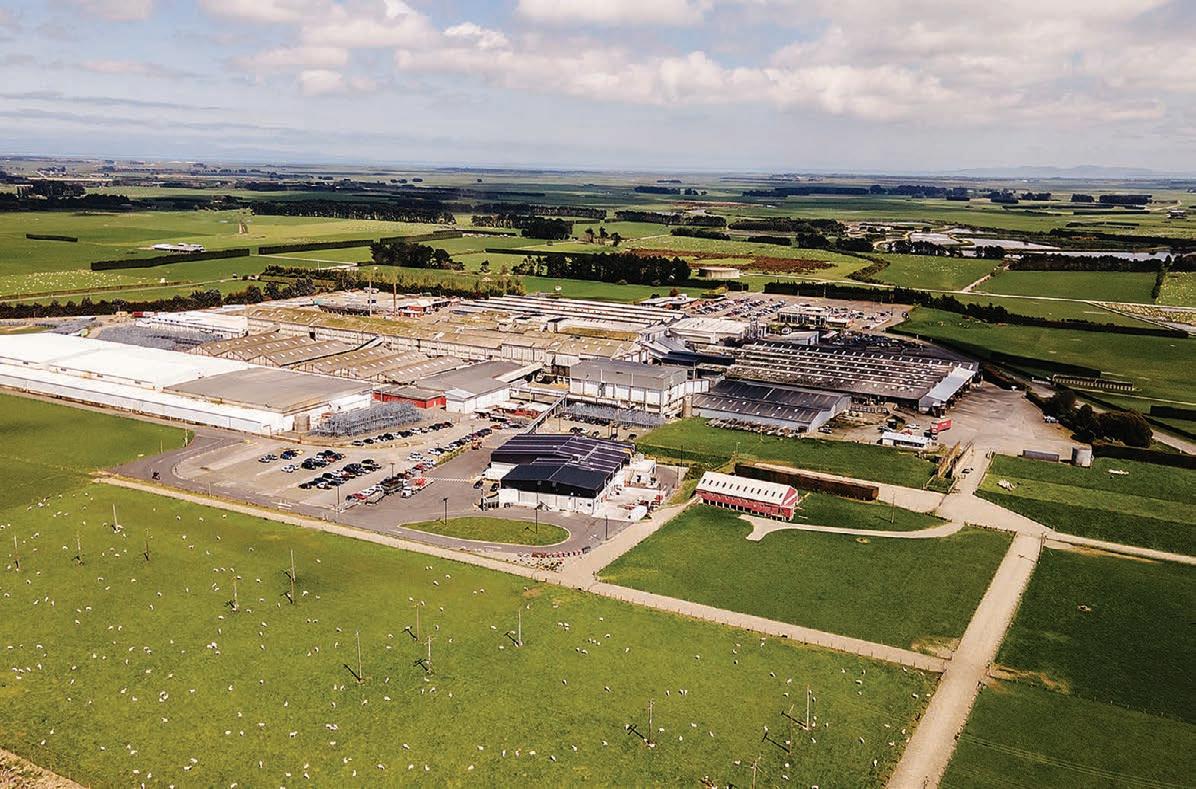
by next month.
Wiese said NZ’s meat processing and exporting sector has a chronic labour shortage and companies are already planning for staff shortages this season.
He said housing is workers from outside the region is an issue. “We recognise there is a shortage of housing in Southland, however we’re absolutely committed to looking after our seasonal workers, providing appropriate accommodation, pastoral care and a programme that welcomes and introduces them to the local community.”
Wiese said some workers will be accommodated in homes at its Lorneville plant and others will be staying in the community or in accommodation leased by Alliance Group.
Dung is a free gold mine of fertiliser and carbon, if buried. There is only one way to do that rapidly and sustainably. AVAILABLE NOW Boost Your Profits. Improve Water Quality. Contact us Dung Beetle Innovations Shaun 021 040 8685 shaun@dungbeetles.co.nz For more information or to order online go to www.dungbeetles.co.nz LK0113016© Farming For Our Future Generations 7 FARMERS WEEKLY – farmersweekly.co.nz – November 21, 2022 News 7
Neal
VOLATILE: Alliance chair Murray Taggart says the group’s strategy and investment programme helped it successfully navigate a significantly volatile trading environment.
Every Alliance farmer now has the chance to partner with us on our premium range and be rewarded for producing quality animals aligned to the needs of our customers across the globe.
David Surveyor Alliance CEO
STAFF SHORTAGE: Alliance’s Lorneville processing plant is one of two in Southland which will struggle to operate if the company cannot find seasonal workers.
Passage of plant variety bill hailed
Annette Scott NEWS Arable
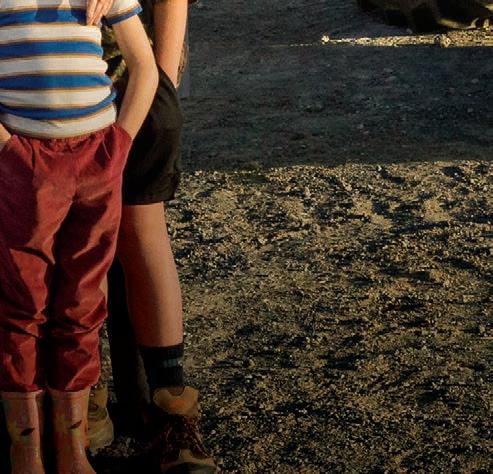





PLANT breeders have hailed new plant variety rights legislation as a game-changer for the industry.
The Plant Variety Rights (PVR) Bill, which will replace legislation first designed in 1987, was passed by Parliament on Wednesday.
It was welcomed by Plant Breeding and Research Association general manager Thomas Chin, particularly as it enables breeders to obtain royalties from farmers who save and reuse protected seed.
“After many years of lobbying our domestic plant laws have been finally brought into line with the International Union for the Protection of New Varieties of Plants convention (UPOV 91),” Chin said.

“Plant breeders are looking to take up the benefits under UPOV 91 as soon as possible as it gives rights holders’ strengthened protections to safeguard their intellectual property.”
This will open New Zealand growers’ access to a greater range of new varieties, with the potential to boost their competitive position in world agricultural markets.

The law clarifies the practice of farm-saved seed, and includes regulations to enable breeders to obtain royalties from farmers who save and replant seed of protected varieties.
It can take up to 10 years to develop a new variety for commercial release.
“Breeding new varieties with improved traits such as increased yield, more nutritional quality, or better resistance to disease and pests requires substantial investment of financial resources.”
Elsewhere, plant breeders continue their discussions with farmer representatives and government officials to design a royalty administration and collection system.

Federated Farmers arable chair Colin Hurst said growers, while welcoming the new legislation, have now to enter discussions with plant breeders to pave the way forward.
The use of non-proprietary varieties will not incur any royalty payment.
“Additional funding for breeding programmes from royalties would help incentivise the development of new and improved pasture and arable genetics for farmers and crop end users,” Chin said.

“The big key for us [growers] is we are able to retain the right to keep our seed from one year to the next.
“We have been lobbying the ministry and officials, it has been a long time coming but we are rapt with this outcome.
“Feds has always recognised the value in intellectual property, we just need now to talk with plant breeders and related industry
about how the new legislation will be managed. At the moment there’s been nothing. Now this opens the door enabling ability to have that discussion.”
Hurst said an outcome must be by mutual agreement.
“We will no doubt have some good robust discussion on how this may work into the future.
“We will talk to our growers to work through it with them to achieve an industry agreed outcome,” Hurst said.
Something’s
picture… 8 FARMERS WEEKLY – farmersweekly.co.nz – November 21, 2022 News 8
wrong with this
Additional funding from royalties would help incentivise the development of new arable genetics.
Thomas Chin Plant Breeding and Research Association
SEEDS OF GROWTH: Feds arable chair Colin Hurst says the key for growers is retaining the right to keep their own seed from one year to the next, albeit paying a royalty.
Avocados on the march over Northland
STATE-OWNED farming company Pāmu will begin to harvest commercial quantities of avocados next year from an orchard development that has grown to be 70 canopy hectares in the Bay of Islands.



Landcorp’s first venture into horticulture capitalises on irrigation and fertigation infrastructure from the Kerikeri Irrigation Scheme and a large contiguous area of suitable aspect, slope and soils, mainly old volcanic, on Kapiro Station.

The $8 million investment is spread over three years and will see nearly 30,000 trees planted at more than 400 trees/ha.
Following a 1ha trial planting
Sliper Pāmu

on Kapiro in 2018, subsequent annual plantings have been 17ha, then 22ha and finally 30ha with artificial shelter, pine shelter belts and irrigation.

The horticultural block has a western boundary on State Highway 10 and the central machinery shed, tanks and facilities are close to a farm storage lake to supplement the scheme water, if ever needed.
Kapiro Station is 2800ha in total, of which 1000ha is under plantation forestry or native bush, and the rest contains the Takou Bay dairy farm, 750 recorded Angus cows for bull breeding and 3000 ewes and hoggets.
Pāmu chief investment officer Andrew Sliper told a Beef + Lamb New Zealand field day on Kapiro that the avocado investment cost was between $108,000 and $110,000 a canopy hectare, all up.
“Kapiro is at the low end of the large-scale avocado plantings in Northland in recent years, but it is bigger than anything in Bay of Plenty.”



Packing competitors, including Seeka at nearby Waipapa, would come to arrangements with Pāmu when commercial fruit volumes were available through the picking season, Sliper said.
He said the operational costs and yields would exceed the industry
averages and generate 15% or 16% internal rates of return.

Kerikeri scheme water needs to be tanked on Kapiro before irrigation, to even out the allocation draw down and application rates.
Higher rainfall during the past year or so has created a need for dry fertiliser spreading rather than fertigation because of the swamping risk to young trees.
Possibilities existed for further horticultural trials and developments, such as citrus,
mangos, bananas, berryfruits and anything that looked promising from nearby Plant & Food Research at Kerikeri.
But Pāmu must be very conscious that it doesn’t plant a new crop and overwhelm an emerging industry, thereby damaging the returns of small growers.
Stringleman NEWS Horticulture MORE:
Like every other avocado grower, Pāmu is going to rely heavily on short-term labour during harvest. However, Kapiro has available housing to raise the attractiveness
of the employment package.
If other crops like citrus are planted, perhaps Pāmu could extend the jobs offering into fullyear employment in horticulture, with training and a career structure.
“With horticulture, we want the best land, which on Kapiro means taking it from the Takou Bay dairy unit,” Sliper said.
CARTOON P20
There’s no doubt it’s a wise move to insure the key assets on your farm. But have you insured your most important assets - yourself and your family? At FMG we’ve been providing affordable access to Life & Health insurance for more than half a century, giving farmers the assurance that their families and their business can be looked after should the worst happen. To find out more, go to fmg.co.nz/somethings-wrong-with-this-picture, or call us on 0800 366 466.
We’re here for the good of the country.
9 FARMERS WEEKLY – farmersweekly.co.nz – November 21, 2022 News 9
the tractor’s insured for more than they are.
Hugh
DEVELOPMENT: Pāmu’s rst horticultural development is planting 70ha of avocados on the best land on Kapiro Station, in the Bay of Islands.
Kapiro is at the low end of the largescale avocado plantings in Northland in recent years, but it is bigger than anything in Bay of Plenty.
Andrew
Co-op defends bobby calf rules at annual meeting
Gerald Piddock NEWS Dairy

FONTERRA’S decision to mandate that all nonreplacement calves enter a value stream by June next year is about managing risk, its directors told farmers at the co-operative’s annual meeting in Rotorua.
The move effectively bans onfarm euthanasia of calves without humane reasons, to make sure every calf born is accounted for.


The value streams are dairy-beef finishing, bobby calf collection for veal production and the petfood industry.


At the AGM, the board was challenged on the decision and whether farmers were consulted during the process.

A farmer told directors the change of policy is fine if farmers live near a petfood factory, but others have limited space to house and feed these calves.
“We already rear close to 800 calves but what are we going to do with the early [born] ones? When
you made this grand decision, what did you think we were going to do with these calves?
“I want to know how you reached that decision. Did it go through the shareholders’ council? Did they say, ‘Hey that’s a grand idea?’”
Chair Peter McBride told her it was a two-year process and farmers were consulted.
“It’s a complex issue, but at its heart is our public licence to operate.”
Farmers also questioned the board on the pace of regulation being pushed onto the sector and its social impact on farmers.
Waikato farmer Stuart King said he was concerned that it seemed to be taken for granted that farmers can just keep producing milk regardless of new regulations reducing the tools in the toolbox

available to farmers.
“As a farmer I have a real concern about burnout and declining milk supply.”

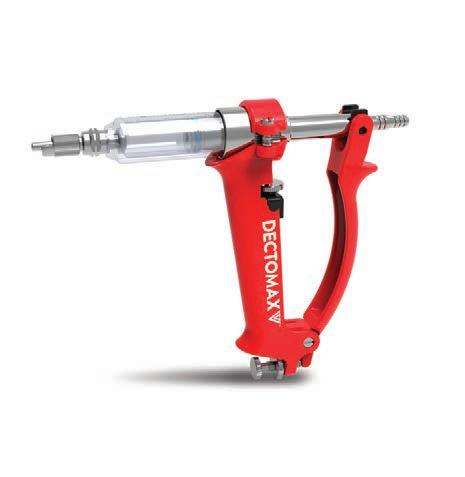


McBride told him they were fully aligned with him on that and empathised with him, and that the co-operative was losing 1% of dairy land to land-use change every year.
“We can’t control that and when we talk about declining milk, it’s about facing realities.

“It’s not about ambition. Our ambition is to maintain and


potentially increase productivity through technology and we are challenged by that, but we also have to be realistic about what’s coming at us,” McBride said.
Fonterra would also fail if it did hot have a consumer orientation and customer focus, he said.
“It’s tough, it’s hard to adapt and I think about that on my own farm, ‘What am I going to do differently?’
“Right now, it feels like there’s a lag of tools in the toolbox to
meet the targets and that’s why DairyNZ are incredibly focused on a research levy to help develop the tools to mitigate solutions.”
Taranaki farmer and former MP Shane Ardern said the industry had a major issue with young farmer burnout due in part to administration duplication as they try to remain compliant. He said Fonterra could play more of a leadership role in this space.
McBride told him it was not just young farmers struggling but older farmers as well.
Dectomax® is tough. New COMBINATION Dectomax V® is even tougher.
a new combination injectable drench to harness the trusted
AVAILABLE AT YOUR VET 17631FW Zoetis New Zealand Limited. Tel: 0800 963 847; www.zoetis.co.nz DECTOMAX and DECTOMAX V are registered trademarks of Zoetis. ACVM No. A6199 & A11893. MM-22177 10 FARMERS WEEKLY – farmersweekly.co.nz – November 21, 2022 News 10
Introducing
power of doramectin from DECTOMAX, with the added strength of levamisole. Proven performance in combination High efficacy, broad spectrum parasiticide Ideal drench for young cattle Visit www.zoetis.co.nz/dectomaxv today.
ON THE SPOT: Fonterra chief executive Miles Hurrell and chair Peter McBride take a question from a farmer during the co-operative’s annual meeting in Rotorua.
As a farmer I have a real concern about burnout and declining milk supply.
Stuart King Farmer
No easy solution to dairy’s calf conundrum
Gerald Piddock NEWS Dairy



































































































THERE’S no simple solution to the problem of unwanted calves in the dairy industry.






























































































































































Every remedy has a downside, as representatives from the dairy and beef industries found out when they met in Hamilton to come up with answers in time for autumn calving.

Organised by Waikato Federated Farmers, the meeting came after a tough spring calving where high milk and input prices and chronic labour shortages meant fewer non-replacement calves were reared, resulting in more animals classified as bobbies and fewer calves being sold at weaner fairs.








If you force the beef industry to rear all of those calves, you’ll drive down their efficiency – their feed conversion efficiency and their GHG efficiency.





Compounding the issue was the decline in services available to collect those calves as these companies tried to navigate high fuel prices and staffing issues.

Looming in the background was Fonterra’s requirement for its suppliers that all non-replacement calves enter a value stream from June 2023, effectively banning onfarm euthanasia of calves without humane reasons.











Waikato Federated Farmers dairy chair Andrew Reymer said it is not an easy one to fix.
One left-field solution could be for farmers to dedicate a portion of their milk payment towards the purchase or construction of processing facilities specifically set up for bobby calves, particularly in remote areas where there are limited options for farmers, he said.








“Maybe we have to grow up a little as an industry.
“The industry has to come up with a solution. You can’t just tell those guys, ‘Figure it out’. We have to think of a way to support these guys.

“We are going to have to solve this, not just as a dairy industry but as an ag industry.”




It was also why the meeting included a representative from Silver Fern Farms and the federation’s sheep and beef section chair, he said.
The solution has to ensure nonreplacement calves have a purpose and a value stream to counter public perceptions around the calves’ treatment.

“There’s 42 products that bobby calves go into. It’s not like they’re dumped in an offal hole,” Reymar said.


DairyNZ has been working on solutions for over a year, including looking at how beef genetics could be better incorporated into dairy cows as well as longer lactating cows, meaning fewer calves being born.
The meeting comes as weaner fairs get underway across the North Island where early numbers are back on last year. Reymer said the fear of lack of supply could see prices lift, which could attract more people back to the industry next year – resulting in a boombust scenario.





“We have to somehow as an industry smooth that out. We rely on the fact that someone’s going to take our calves every year and we’re setting ourselves up for that [boom-bust] cycle.”


If the buyers are there, they still need the land to farm on, which is shrinking as more land disappears into forestry. They also need to find staff to care for the animals, he said.
Beef finishers are less inclined to purchase jersey or kiwi-cross calves that have been bred for milk efficiency rather than for their meat because they suffer from slow growth rates. Finishing these types of cattle could also potentially push up the farmer’s greenhouse gas emissions because of the extra time and feed required for the animal in order for it to hit its target weight.


have a veal market.
Shifting to more Friesian genetics is equally problematic because these larger cattle are not suited for every type of farm system.
There is also bitter irony in that the industry over the years has created a highly efficient dairyproducing cow for New Zealand’s outdoor farming systems – but no one wants the calves from these animals, he said.
Keeping those inefficient calves for the beef industry could also lift the industry’s greenhouse gas profile, because it will have to farm animals that would otherwise be culled.
“We should be keeping the most efficient cattle – which we are now – and why are we being forced to raise inefficient cattle?
“If you force the beef industry to rear all of those calves, you’ll drive down their efficiency – their feed conversion efficiency and their GHG efficiency. Why force inefficiency on an industry? It’s not just a matter of ‘stop killing bobby calves’. It’s ‘pick a compromise’.”
Fieldays® Sale BUY NOW &SAVE *Terms & Conditions Apply 0800 453 418 @coopertiresnz www.coopertires.co.nz | *Terms & Conditions Apply 11 FARMERS WEEKLY – farmersweekly.co.nz – November 21, 2022 News 11
Reymer said it makes for a uniquely New Zealand problem because large northern
hemisphere producers tend to use mostly indoor-farmed Friesian genetics whose fast-growing calves
TOUGH PROBLEM: Discussions are ongoing to find solutions around what to do about unwanted bobby calves in the dairy industry, but there are no quick solutions.
WORK TOGETHER: Waikato Federated Farmers dairy chair Andrew Reymer says the industry has to come up with a solution.
Andrew Reymer Federated Farmers
Unenviable apple quality hits T&G bottom line
Hugh Stringleman NEWS Horticulture

LISTED horticultural company T&G Global expects to make a trading loss in the 2022 financial year because of quality issues with its Envy apples and deteriorating trading conditions in northern hemisphere markets.
The directors have advised the NZX sharemarket that the forecast loss will lie between $1 million and $5m, compared with a profit of $9.8m before tax in the FY21 year.
The financial year is a calendar year and T&G usually reports its results towards the end of February.
Most concerning to the company and its shareholders, majority owned in Germany and China, will be the quality issues in its licensed Envy variety.
Chief executive officer Gareth Edgecombe said there has been a rapid deterioration in the quality of the premium Envy apples, particularly those exposed to the unusually heavy rainfalls at harvest.

“This, combined with the late arrival of fruit into markets as a result of global supply chain disruptions, has unfortunately resulted in crop quality issues, with fruit rapidly deteriorating
and consumers having an inconsistent eating experience.

“As a result, inventories are higher at this stage of the year than normal, resulting in provisioning for fruit losses as the fruit ages.”
Edgecombe said northern hemisphere businesses have reduced their forecasts because of worsening economic conditions in their markets.
“This forecast also includes the impact of a number of projected oneoff items, including property disposal
and the costs of exiting the company’s Peru grape farming operation.”
Only 12 months ago T&G said the demand forecast for Envy was independently estimated at $1 billion of sales by 2030. T&G currently sells about $850m of apples annually, of all varieties.
Plans were made to increase Envy production, on the company’s own orchards and under licence, from five million trays annually to 25m trays, including a joint venture with the NZ Super Fund in a 40ha Envy orchard.
Emissions pricing risk to Otago economy: report
Neal Wallace NEWS Emissions
THE Otago economy is more exposed than many others to the impact from pricing agricultural greenhouse gases, according to a report by the Otago Regional Council.
The primary sector contributes 65% of the region’s emissions but represents 5% of Otago’s GDP, greater than the 4% the sector contributes to New Zealand’s GDP.
Otago farms run 17.6% of the nation’s sheep flock, 6% of dairy cattle and 8.3% of beef cattle.
“This highlights the potential for Otago to be impacted by the proposal for agricultural emissions pricing,” the staff report to councillors states.
The impact of cost and any benefits to the region is dependent on how
emissions-efficient farmers are, the report states.
“If farmers in the Otago region are more emissionsefficient relative to the rest of the country, then the negative impacts could be mitigated and the positive benefits multiplied.”
Farmers face greater administration while reducing emissions nationally and globally will reduce the impact of climate change and there will be benefits for the region’s tertiary institutions from research funds.
“The ability of farmers to adopt is partly contingent on the support they are offered by government and the wider communities.
“If Otago farmers are supported to reduce their emissions, then disruption can be minimised with the farming community reaping the benefits of the carbon-neutral price premium.”

Our portfolio of powerful, proven products has helped farmers from one end of the country to the other create and maintain thriving businesses, and has earned us an excellent reputation as pasture protection and brushweed specialists.
Our extensive suite of herbicides provides farmers everything they need to win the war against weeds and brushweeds.

Visit corteva.co.nz to view our online pasture and brushweed resources.

HC CTA0019 Watching over your pastures so you don’t have to. Delivering a complete suite of pasture protection and brushweed control products for New Zealand farmers.
Visit us at corteva.co.nz ®, ™ Trademarks of Corteva Agriscience and their affiliated companies.
GRANULAR HERBICIDE Tordon 2G GOLD HERBICIDE BRUSHKILLER XT Tordon HERBICIDE PASTUREBOSS™ Tordon™ HERBICIDE Grazon™ HERBICIDE POWERFLO™ Versatill™ HERBICIDE Vigilant™ II HERBICIDE Preside™ 12 FARMERS WEEKLY – farmersweekly.co.nz – November 21, 2022 News 12
CORE VALUES: T&G Global directors have advised NZX that the forecast loss will lie between $1 million and $5m.
Exit, one disgruntled Fonterra Fund chair

uncertainty over Fonterra’s capital structure, plus volatility in international capital markets.
FONTERRA Shareholders’ Fund unit holders, among them many Fonterra dairy farmers, have suffered a considerable equity loss through market uncertainty over Fonterra’s capital restructuring.
Inaugural and outgoing fund management company chair John Shewan told unit holders at the 2022 annual meeting that Fonterra should have bought out the fund.

After a decade of governance Shewan parted ways with Fonterra, firing a few broadsides and repeating his view from the previous AGM that the fund had outlived its usefulness.
He said the Fonterra Shareholders’ Fund (FSF) unit price had fallen by 20% from the beginning of August 2021, the start of Fonterra’s 2022 financial year, to the annual meeting day on which he was speaking, November 14, 2022.
He said he considers the main influence to be continuing
In April and May this year the drop in the FSF unit price was accentuated by the release of the report by the financial and economic consulting firm Castalia, which contained assertions that Fonterra did not agree with.
the milk price. The unit price was $4.60 on the May 2021 day before Fonterra announced its capital restructure intentions and had fallen to $3.03 last week.
The market capitalisation of the fund had dropped $93 million, or 22% in the past year.
This uncertainty looks likely to affect the unit price through restructuring in 2023, Shewan said.


The directors of the FSF management company remain of the view that Fonterra should have bought back the fund as part of the capital restructure.
“I believe that the sequence of events and adverse impact on unit price since the May 2021 announcements shows very clearly why our concerns were entirely justified,” he said.
“The Castalia report asserted that protections for a fair milk price will be eroded and that the capital restructure will cause the milk price to increase,” Shewan said.
Fonterra strongly disagreed with the Castalia valuations of shares and units and that capital structure changes would increase
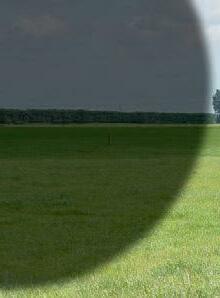
Fonterra chair Peter McBride addressed the annual meeting of disgruntled unit holders and made no reference to Shewan’s continued criticism.
He emphasised the good financial results for Fonterra in FY22 and the prospects for some capital to be returned to shareholders and unitholders
Training with Primary ITO?
Primary ITO is now part of Te Pūkenga. We may look a bit different, but our people remain the same.
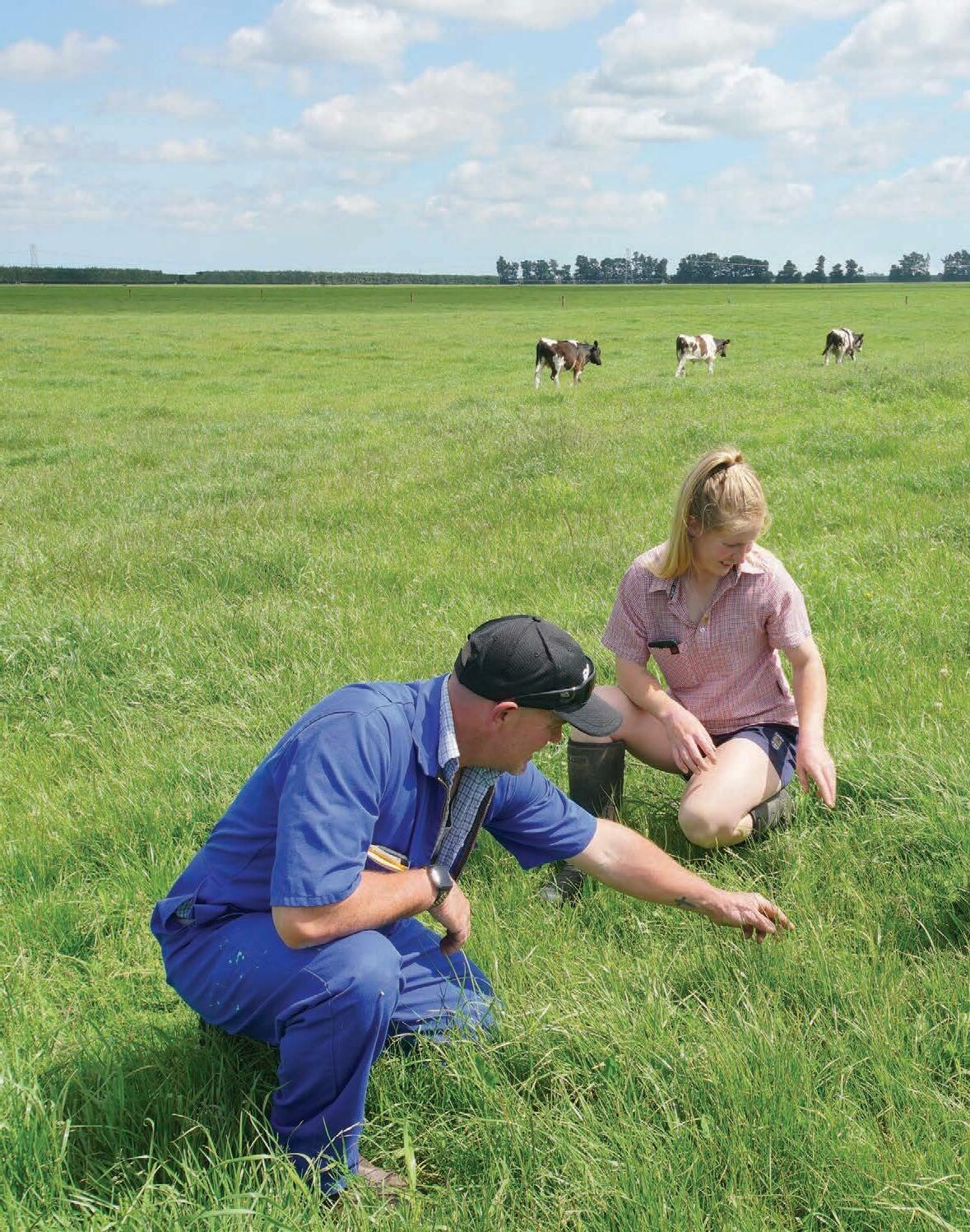
As Te Pūkenga grows, we will have options available for you to learn in a way that suits your life while giving you the skills you need to succeed.
in FY24. The unstated message was that unitholders should stay invested for Fonterra’s recovery,
which
Visit
0800 20 80 20 Come and see us at Fieldays on site PE43 13 FARMERS WEEKLY – farmersweekly.co.nz – November 21, 2022 News 13
primaryito.ac.nz/tp
would lift the share market prices of supply shares and fund units.
Hugh Stringleman NEWS Fonterra
The sequence of events and adverse impact on unit price since the May 2021 announcements shows very clearly why our concerns were entirely justified.
John Shewan FSF Management Company
BROADSIDES: Outgoing Fonterra Shareholders’ Fund management company chair John Shewan says Fonterra should have bought out the fund.
MPs clear Fonterra bill with minor tweaks

 Stringleman NEWS Fonterra
Stringleman NEWS Fonterra
THE Primary Production Committee of Parliament has finished its consideration of the Dairy Industry Restructuring (Fonterra Capital Restructuring) Amendment Bill, required to give effect to Fonterra’s new flexible shareholding structure.
The bill will now go to a second and third reading in Parliament and Fonterra chair Peter McBride hopes it will be passed by the end of the year.
“Overall, we are satisfied that it is moving in the right direction, and we are pleased to see the adoption of some of the key changes we advocated for in our submission,” McBride said.
He highlighted the removal of the potential for third parties to take enforcement action against Fonterra for any perceived breaches of the milk price oversight regime.
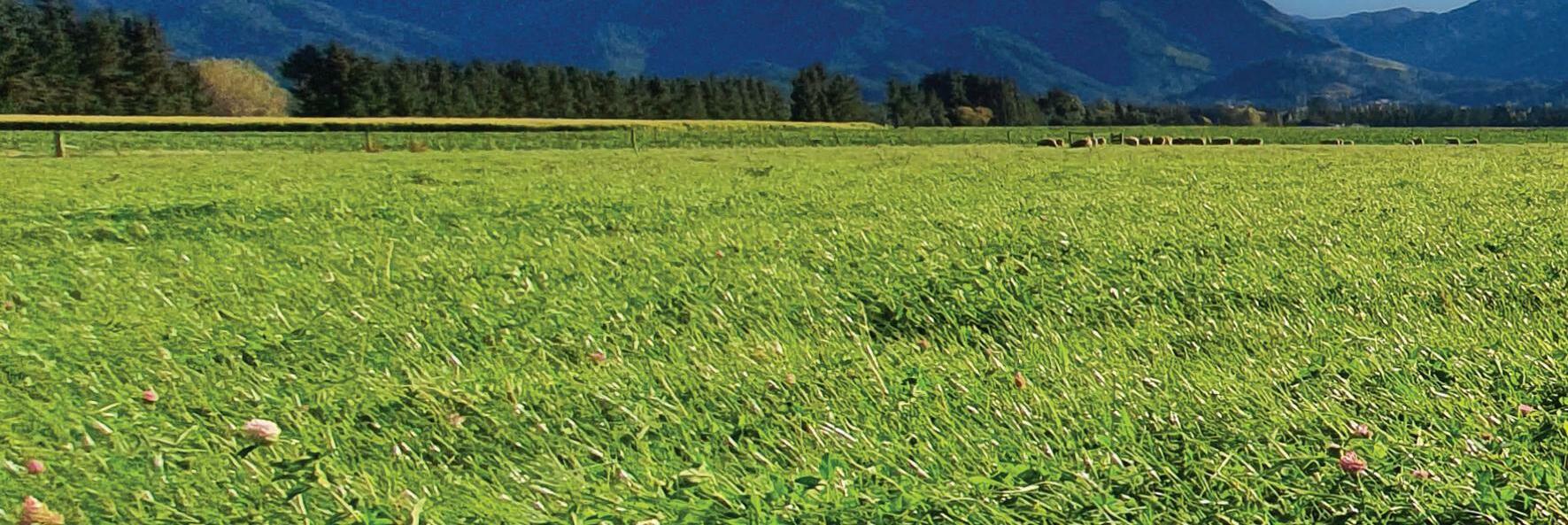
However, not all Fonterra’s recommendations were adopted by the Parliamentary committee and McBride delved into the innards for disagreements.
“The committee has recommended to retain new individual liability provisions
related to the milk price oversight regime, but they have at least limited these in line with the defences we put forward in our submission.
“We are also disappointed that the committee did not support our request to remove the additional powers of direction for the Commerce Commission.



“Our view is that the milk price regime is very robust and independent already.
“We strongly object to any suggestion that Fonterra or the individuals involved in the process

somehow manipulate the outcome.
“We will continue to advocate on these points as the bill progresses.”
The Primary Production Committee unanimously recommended that the bill be passed with the amendments included.
“To mitigate the risks arising from a restricted farmer-only market for Fonterra shares, the bill aims to improve the governance and transparency of Fonterra’s base milk price-setting regime.

“It would require greater
independence on Fonterra’s milk price panel and strengthen the Commerce Commission’s oversight of Fonterra’s base milk price-setting arrangements.
“It would also support liquidity and transparency in the market for Fonterra shares,” the committee said.

The eight-person committee is chaired by Labour’s Jo Luxton and contains four MPs from Labour, three from National and one from the ACT Party.

McBride said the share compliance requirements on
farmer-shareholders remains on hold and will not reintroduced until at least six months after flexible shareholding is implemented.

The pasture landscape is
BBG0037 NEA12 Pre-Xmas_AgriHQ DPS-545x190.indd 1 14 FARMERS WEEKLY – farmersweekly.co.nz – November 21, 2022 News 14
Hugh
NEXT STEPS: Chair Peter McBride says Fonterra is disappointed that the committee did not support its request to remove the additional powers of direction for the Commerce Commission.
Our view is that the milk price regime is very robust and independent already.
Peter McBride Fonterra
Finding wool’s gamechanging potential
strong wool as a problem solver especially with brands focused on circular product design, Caughey said.
THE time is right to position strong wool as a problem solver, Wool Impact chief executive Andy Caughey says.
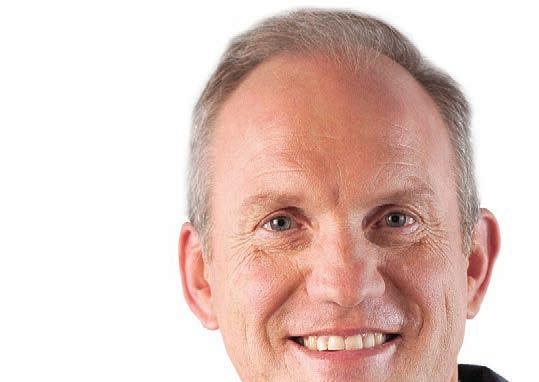

With natural fibre starting to take the lead in the sustainability space, he said, Wool Impact is set to change the perception of wool in global markets.

Wool Impact is a collaboration between the government and sheep sector partners under the Ministry for Primary Industries’ Sustainable Food and Fibre Futures fund to grow export revenues for wool.
Launched in July 2022, it has embarked on its mission to create new demand and value for New Zealand strong wool.
The industry body is tasked with changing the perception of wool, ensuring NZ strong wool has desirable end-user appeal and is backed by on-farm and environmental performance credentials.

Now is the time to really position


“Natural fibre strengths are starting to lead the innovation and sustainability space with footwear brands, carpet, insulation, and acoustic companies turning to wool as a key component for production.



“More recently we’ve also seen developments in deconstructed wool fibre into particles, powders, and pigments.
“Wool really has the potential to be a game-changer.
“Strong wool growers have not been connected with brands and end user demands and we want to make sure we bridge this gap and equip farmers with the market intel to better prepare wool to meet these needs, which in turn will add value on farm.”



Caughey, a passionate advocate for wool having previously represented NZ wool interests overseas working with luxury, lifestyle, and sports brands, wants to see an increased awareness of the uses for wool and generate a greater demand for wool


across global markets.
“We have a story to tell about the benefits of NZ strong wool including high standards of animal welfare, environmental care and how natural fibre supports the wellbeing of people in the home and at work.
“Representing wool as a responsible and sustainable fibre is crucial to increasing the demand for strong wool and providing greater returns to NZ farmers.”
Advocating the current high standards of environmental care and animal welfare among NZ farmers was made possible via the extension of the Farm Assurance Programme to wool late last year.







Wool Impact has picked up and run with this assurance programme as a lever to build brand trust in and value for NZ wool globally.
“We are working expediently with the sector to understand and advance knowledge of wool’s environmental impacts and contributions.
“Understanding the current impact of wool products throughout the life cycle, including the carbon footprint, will give brands the information they need
to support market access and the continual building of better products,” Caughey said.
The industry body has a dual focus on demand and value creation and plugging some of the serious voids that have eventuated in the wool industry including gaps in skills, training,

market intelligence and data and environmental impact.
It is teaming up with companies, the wool classer and shearing representative organisations to boost the delivery of practical training courses and attract new people to the sector for wool harvesting.
CHANGING...
20/10/22 10:10 AM 15 FARMERS WEEKLY – farmersweekly.co.nz – November 21, 2022 News
Annette Scott NEWS Wool
BIG PLANS: Wool Impact chief executive Andy Caughey says representing wool as a responsible and sustainable fibre is crucial to increasing the demand for strong wool.
Pāmu sheep shed wool in Northland


 Hugh Stringleman TECHNOLOGY Genetics
Hugh Stringleman TECHNOLOGY Genetics


PĀMU’S large Kapiro property in the Bay of Islands is hosting the No Wool Future Sheep Progeny Trial, being conducted by Landcorp’s wholly owned subsidiary Focus Genetics.
Kapiro runs 2000 fully recorded breeding ewes and 1000 replacement hoggets and the ewes and two-tooths average 140% lambing.

Landcorp has a very productive Romney flock with over 50 years of breeding and selection on the 2000ha Goudies Station, Reporoa, where the genetics originate for Pāmu’s sheep farming throughout the country.

Focus Genetics researcher Natalie Pickering said the productive aspects of the Romney should be retained – high lambing percentage, high weaning weights,
facial eczema tolerance, and worm tolerance, for instance.

“We want to hold these achievements and incorporate the no-wool objective coupled with heat tolerance.
“As Northland gets warmer we need to improve the sheep’s tolerance to heat, and that requirement will extend to flocks further south into Waikato and King Country.
“We want to be able to put weight on the ewes from January to April, to be able to mate the hoggets and boost disease and fly strike resistance.”
New breeds introduced over the Romneys include shedding sheep and hair sheep like Wiltshires, Damaras, Dorpers, Meatmasters, Shire and Australian Whites and selected shedding lines from established breeds such as Texels.
Focus Genetics is also looking into tropical countries for sheep breeds that have higher heat tolerance and good disease resistance.
“We measure the crossbred lambs and ewes for survivability and all the productive traits, whether they are hair rather than wool and the degree and pattern of shedding.
“Then we measure all the carcase characteristics against what the meat companies want in their lambs.
“All sheep are DNA recorded, so we can know their history and their true genetics.”

Early results show that putting weight on after weaning during the heat stress period remains a challenge for all the crosses, Pickering said.
LASRA (Leather and Shoe Research Association) is also
working on the properties of pelts from all lambs killed.
A selection of the crossbred lambs are being measured for methane emissions at AgResearch Invermay.
A decade of sheep measurement at Invermay has shown a 12% difference between high and lowmethane sheep lines and that there are no detrimental effects on production traits.
Pickering said the extent of shedding in the first crosses was a surprise as she had expected that second crossing would be necessary to get that effect.

Pāmu head of ventures and farming, Jim Inglis, said the Kapiro No Wool trial did not mean the farming company was moving away from strong wool.
We want to be able to put weight on the ewes from January to April, to be able to mate the hoggets and boost disease and fly strike resistance.
Pickering Focus Genetics
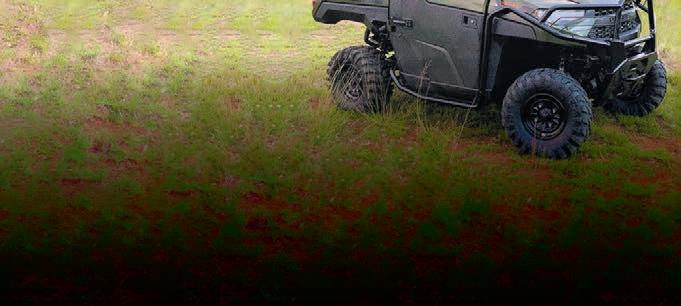
The heat and disease tolerance factors being recorded and enhanced would be useful for all breeds of sheep in the future.
“We have not set up an eitheror wool programme, but one that aims at gaining the knowledge first and then putting it to use where applicable.”
First showing for sheep bred for the extremes
 Hugh Stringleman TECHNOLOGY
Hugh Stringleman TECHNOLOGY

Sheep and beef
SHEEPMASTER shedding sheep will be displayed at a field day on December 15 in Hawke’s Bay, along with commentary from their foundation breeder from Western
Australia, Neil Garnett.
Garnett has spent the past 30 years breeding the wool off sheep in the quest for a highly fertile, easy care, functional animal for meat production, culminating in the launch of the SheepMaster breed in 2017.

The first New Zealand open day
will be from 12.30pm at Glenlands Farm, 1330 State Highway 5, Glengarry.
Dean and Antoinette Martin have bred Wiltshires and Australian Whites and put SheepMaster semen into mainly Wiltshire flock ewes last mating, resulting in 189 crossbred lambs
for display, along with their mothers.
Martin said he intends to put the crossbred ewe hoggets back to SheepMaster by AI next mating season.
According to Garnett the SheepMasters completely shed their coats during summer and the
winter coat adapts to either cold or heat. They are a composite of eight core breeds: Damara, Dorper, Van Rooy, White Suffolk, Finn, East Friesian, Kojak and UltraWhite.
MORE: https://www.facebook.com/ glenlandsfarmltd/
0800 440 290 | www.polarisnewzealand.com | /PolarisNZ | /polarisorv_nz *Offer ends 31/12/22 or while stocks last. Offer only available at participating Polaris Dealers. Not valid with any other offer. Excludes fleet clients. ^^Accessories offer only valid with the purchase of a new Ranger 500, Ranger Diesel HD EPS ADC, and Ranger XP 1000 HD EPS ADC. +Finance offer is only available on selected models. GST registered customers only. 24-month term contract. 20% Deposit required. Deposit may include Trade (Trade conditions apply). Fees and conditions apply (normal lending criteria applies) Finance is provided by Polaris Finance, a program operated by De Lage Landen Limited Company No 135515. BEAT THE MY23 PRICE RISE DIESEL HD EPS ADC XP 1000 HD EPS ADC 500 $1,000 FREE ACCESSORIES^^ 4.99% FINANCE P.A+ $2,000 FREE ACCESSORIES^^ 4.99% FINANCE P.A+ $1,500 FREE ACCESSORIES^^ 4.99% FINANCE P.A+ 32 HP 82 HP 24.8 HP ON DEMAND TRUE ALL-WHEELDRIVE (AWD) HIGH PERFORMANCE ON DEMAND TRUE ALL-WHEEL-DRIVE (AWD) ON DEMAND TRUE ALL-WHEELDRIVE (AWD) DUMP BOX CAPACITY - 226 KG DUMP BOX CAPACITY - 454 KG ENGINE BRAKING SYSTEM & ACTIVE DESCENT CONTROL (ADC) IRS WITH 25.4 CM OF TRAVEL 1134 KG TOWING CAPACITY IRS WITH 25.4 CM OF TRAVEL KG 1134 680 KG TOWING CAPACITY ENGINE BRAKING SYSTEM & ACTIVE DESCENT CONTROL (ADC) 1134 KG TOWING CAPACITY KG 680 KG 1134 16 FARMERS WEEKLY – farmersweekly.co.nz – November 21, 2022 News 16
SHOWCASE: Pāmu farming sta and executives outlined the No Wool Future Sheep programme at Kapiro during a Beef + Lamb NZ Northern North island council eld day.
MULTI-BREED: Ewes and lambs in the No Wool trial penned for a eld day on Kapiro Station in Northland.
Natalie
Biodiversity law should pass by year’s end
to identify and manage significant natural areas of biodiversity.
AFURTHER suite of regulations affecting farmers is imminent, with new indigenous biodiversity regulations likely to be law by the end of the year.


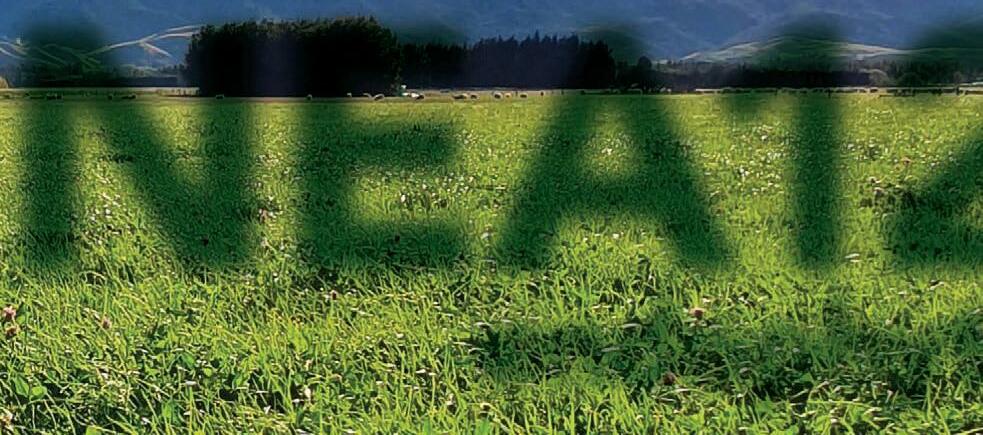
As farmers contend with new climate change and freshwater rules, a spokesperson says Associate Environment Minister James Shaw intends seeking final decisions from Cabinet on the National Policy Statement on Indigenous Biodiversity (NPS-IB) by the end of this year.
“The exposure draft process has concluded and officials are providing advice to the minister in light of submissions received during targeted consultation in June 2022,” says a ministry spokesperson.
The policy affects the identification and management of biodiversity on public, private and Māori land, requiring owners

“The requirement to protect areas of significant indigenous (SNAs) biodiversity is not new and has existed under the Resource Management Act for 30 years.



“All councils are at different stages in completing this requirement. We want all councils to do this well.”
Farming groups have major concerns with the policy but more so the timing, coinciding with new and far-reaching policies on climate change, conservation and fresh water.

Despite some changes, Beef + Lamb NZ (BLNZ) says the criteria for assessing SNAs is still too broad, capturing virtually all areas of native biodiversity which could restrict what landowners do on a significant proportion of their farms.

There is also no clear distinction about which areas of biodiversity are genuinely significant.
“There will be perverse outcomes, and farmers who have
done the most to protect and enhance indigenous biodiversity will be the most tied up in red tape as a result,” the farmer group says in a statement.
BLNZ also has concerns with what it terms a poor quality implementation package.
“Farmers are being told they need to spend time and money maintaining biodiversity, which supports broader ecosystem
services, without adequate recognition or support.”
The ministry spokesperson says the NPS-IB is part of a plan to reverse declining biodiversity.
The policy aims to provide a consistent approach to identifying and managing biodiversity and giving councils clear, consistent policy directions for improving its management.

“It aims to protect, maintain
and restore our indigenous biodiversity.”
The initial implementation of the NPS-IB covers 10 years.
Budget funding was secured earlier this year to support landowners to manage biodiversity on private land but the ministry is also looking for additional support measures and incentives to support landowners to protect, restore and manage biodiversity.
endophyte
Available exclusivelyin ShogunNEA12 forautumn 2023. BBG0037 NEA12 Pre-Xmas_AgriHQ HP-262x190.indd 1 20/10/22 10:10 AM 17 FARMERS WEEKLY – farmersweekly.co.nz – November 21, 2022 News 17
Neal Wallace NEWS Regulation
WORK TO DO: Beef + Lamb NZ says the criteria for assessing SNAs is still too broad, capturing virtually all areas of native biodiversity which could restrict what landowners do on a significant proportion of their farms.

















NZC_SF_Advert380x262outlines.indd 1 8/11/22 5:06 PM 18
Agritech firm put into liquidation
industry’s ability to invest in innovation.
THE liquidation of an agritech firm developing ground-breaking AI technology has been labelled a tragedy that will put the country’s horticultural sector back years in its tech efforts.
Tauranga-based PlantTech Research Institute was forced into liquidation as its research funding dried up and project revenue had failed to meet costs over the course of the year.
PlantTech recently assumed incorporated society status with a collaborative partnership formed, based on its foundation of horticulturally aligned companies building on emerging technology particularly AI.
Agritech NZ chief executive Brendan O’Connell said the loss of the company, which has been heavily involved with the kiwifruit sector, was a tragic step backwards for the sector.
Company chair Mark Gilbert cited a tough season for kiwifruit growers impacting on the

But O’Connell said it was unfortunate the sector was not resilient enough to ride out the bad years and continue investment into PlantTech’s work.
That work has included helping develop digitised crop estimation AI with Zespri and developing hyperspectral imaging to identify nitrogen content levels for optimal fertiliser application in kiwifruit orchards.
The company’s liquidation came at the same time as the company’s five-year establishment funding from Ministry for Business Innovation and Employment (MBIE) ran out.
“It seemed like five years was a tight time frame for that funding. You do have other government institutions that do not have as hard a drop off as that,” said O’Connell.
He said typically AI technology development requires 3-9 years of baseline data to build machine learning models.
A horticultural sector insider said the company’s technology had been developing well, and
while not perfect it simply needed more time and more commercial harvests to be fully developed, with once yearly cropping cycles extending the time needed.
PlantTech’s key people included Ian Yule, a former professor of precision agriculture from Massey University, who relocated for the company. He brought a high level of knowledge on hyperspectral mapping and remote sensing.

In a LinkedIn post, Yule acknowledged the team he had worked with and was looking to see what the ‘next chapter’ would hold for him after PlantTech.
O’Connell said PlantTech’s liquidation comes as the science sector was undergoing the Te Ara Paerangi Future Pathways review of the country’s research systems and how issues may be addressed.
One of the biggest was the transition from research to commercialisation, a long-time issue in NZ.
“I think we will come back with Future Pathways Review and say where PlantTech was going was where the tech needed to be. Here was an organisation that was trialling tech commercially and
was cut off at the knees.”
He could not see any other funding source on the horizon that may be capable of stepping in to fill the gap PlantTech faces.
Liquidators have been appointed
while PlantTech remains solvent, enabling them to pay our creditors and staff before shutting its doors.
Steven Khov and Kieran Jones of Khov Jones have been appointed by the company as liquidators.
Grow with the times. To find out more – visit myfarm.co.nz/eastpack or call 0800 MYFARM (693 276). EastPack Notes is an investment in the ongoing growth of EastPack - one of New Zealand’s largest kiwifruit post-harvest operators. The expansion will increase processing capacity and position EastPack for the projected 35% growth in our national kiwifruit harvest over the next five years. EastPack Notes will deliver a minimum interest rate of 8.5% p.a., or the New Zealand government 5 year bond rate +4.5%, whichever is highest. • Open to all investors in New Zealand • 5 year investment term** • Interest paid quarterly • Minimum investment $20,000 This offer closes 5pm, Monday 12th December. Funds due on application. *EastPack is the issuer of EastPack Notes. The Product Disclosure Statement is available at www.myfarm.co.nz/eastpack or by calling 0800 693276 **With the option for EastPack to redeem after 3 years. This advertisement does not constitute, and is not a substitute for, financial, legal, tax, accounting or other professional advice. It does not take into account the particular needs or circumstances of any prospective investor. Before deciding whether to invest, you should obtain independent financial advice that takes account of your personal financial goals and circumstances. 8.5 MINIMUM RETURN % P.A.* 19 FARMERS WEEKLY – farmersweekly.co.nz – November 21, 2022 News 19
Richard Rennie NEWS Business
LIQUIDATION: Professor Ian Yule brought a high level of hyperspectral mapping expertise to PlantTech’s AI developments.
From the Editor
The customer is always right
Bryan Gibson Managing editor
MANY farmers have understandably not taken well to the government telling them to reduce greenhouse gas emissions, so it will be interesting to see what the reaction is when the message comes from one of the big co-operatives that pays the bills.
At its recent annual meeting, Fonterra signalled an emissions target was coming for farmer-suppliers.
Now the world’s back open, Fonterra’s leaders have been visiting markets abroad and report that the subject dominating the conversation is sustainability.
Chief executive Miles Hurrell says many high-value customers have emissions reductions targets of their own and they expect suppliers to help achieve them.

It’s a message we’ve been hearing from the likes of Tesco and Nestlé for a while, but this is the first concrete sign that New Zealand farms will be expected to play their part.
Hurrell says Fonterra’s banks and financiers are also inquiring about the coop’s plans to decarbonise.
None of this should be news to those who’ve been watching global food production trends in recent years.
And as for the government, it will probably be quietly pleased the market appears to be synchronising with its legislative agenda.
Many commentators have pointed to China’s dominance as our biggest trading partner as a reason to be sceptical about any value that might be gained from pricing emissions.
But that might be beginning to change, for a couple of reasons.
China’s recent economic challenges have been well reported and exporters here say they’re having an effect on the value and volume of trade with our biggest partner.
But importantly, those exporters affirm China will continue to be the key to our export success.
The World Bank reports that for the first time in 30 years, China’s economic growth could be surpassed by that of other Asian countries.
A declining productive population, ongoing covid-19 lockdowns and a housing crisis have all dampened the fast pace of growth there.
The slowdown will probably be shortlived, but is a reminder that the free-trade deals recently agreed with the United Kingdom and the European Union may do
more heavy lifting for our economy than previously thought.
Alliance Group says China is becoming more self-sufficient in protein.
It also has large stocks of red meat from South America and Australia to work through.
So, our exporters are signalling that while it will remain our biggest market, China’s hunger for our food is beginning to lessen a little.
That means those other markets – the ones where Nestlé and Tesco dominate – are gaining in importance.
China’s also just announced a plan to reduce its own methane emissions and that plan includes agriculture. It’s early days, but if its growing protein industry is expected to reduce emissions, will China then expect more from those it imports from?
Back home, Fonterra says suppliers will be hearing more about the emissions target in the coming months.
Alliance, in announcing its annual results, highlighted its high-value handpicked programmes, saying all its suppliers could now “be rewarded for producing quality animals aligned to the needs of our customers across the globe”.
The signals have been coming from abroad for some time now, and exporters here are getting the message.

Now, that message has to be put into action in a way that gives farmers confidence and assurance.
Letters of the week Is it sizzle or sausage?
Jason Barrier Waerenga
MARVELLOUS. After three years of emissions “negotiations” and two failed plans (the industry He Waka Eke Noa 1 disaster followed by the government HWEN2 catastrophe), Federated Farmers, Beef + Lamb NZ and Dairy NZ leaders got together recently and duly announced a set of nine “agreed positions” in order to “move forward together and advocate strongly on behalf of farmers”. This is indeed welcome progress but two questions come to my mind (apart from a third obvious one, being why these “agreed positions” were not agreed to at the outset of this shambolic HWEN process, instead of being cobbled together as the final whistle is about to blow).

Their agreed position number 1 states “The current methane targets are wrong and need to be reviewed”. I wholeheartedly agree. So my first question is, does this mean these leaders will refuse to sign up New Zealand farmers to any agreement that uses such flawed methane targets? Their agreed position number 9 states “We will not accept emissions leakage”, and nor should we. So my second question is: given the now widely accepted figure of 133% emissions leakage for NZ sheep meat (because it will be replaced by higher-carbon sheep meat from foreign competitors) will our industry leaders now also refuse to sign up to any agreement that models any likely reduction in sheep and beef farming?
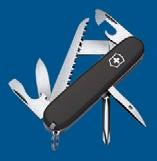
It remains to be seen whether this lastminute epiphany of principles is a genuine attempt from our industry leadership to go back to the drawing board and rewrite HWEN so that it becomes more palatable or whether it is yet another disingenuous PR exercise, an attempt to defuse farmer anger, which is becoming more palpable.
I look forward to seeing submissions from these three organisations which demonstrate they are unwilling to agree to any proposal that cuts across these principles. Full stop. This will expose whether the latest show of “unity” from Messrs Andrew Morrison, Andrew Hoggard and Jim van der Poel is “sizzle or sausage”. Let’s hope for the sausage.
20 Editorial
Best letter WINS a quality hiking knife Send your letter to the Editor at Farmers Weekly P.0. Box 529, Feilding or email us at farmers.weekly@agrihq.co.nz FARMERS WEEKLY – farmersweekly.co.nz – November 21, 2022 Opinion 20
farmersweekly.co.nz Follow us Be a part of NZ’s biggest agricultural community and help create a better future
In my view ...
United stance vital on farm gas pricing
Jim van der Poel Chair of DairyNZ

WHEN the primary sector took on the challenge of an emissions pricing alternative, there was a clear goal – to secure the best possible system for farmers and the climate.
In 2019 the government legislated to put agriculture into the Emissions Trading Scheme (ETS). We believed that was a poor option for the primary sector and for New Zealand.
We approached the government to have the option to come up with a better proposal that was fairer, more practicable for farmers and would deliver better outcomes.
What followed was significant discussion between sector partners to secure that alternative, which would keep the primary sector out of the costly ETS. That sector proposal, He Waka Eke Noa (HWEN), remains the best option in our view, and DairyNZ puts its weight behind it.
In our view the government, in response to our proposal, has made significant changes to HWEN that have undermined farmer confidence and potentially put the finely balanced crosssector consensus at risk.
We do not accept that these significant changes by the government are necessary, and believe they cut to the core of the HWEN partnership.
I’ve heard from many farmers in recent weeks who are frustrated and seeking clarity on what the government’s proposal might mean for them. They’re worried this will have significant implications for their families, their businesses and their communities.
They’re also worried about the
Letters of the week
Continued from page 20
Let’s not ignore the detail
Julian Price Oamaru
IN HER letter “Focus on details, not the politics” (November 7), Trish Hosking focused on the politics and ignored the detail.
If the government can count
future of farming in NZ.
As a farmer, I share these concerns. The last thing anyone wants to do is lock in a system that we aren’t prepared to live with.
So, with our original goal in mind – to secure the best solution for farmers – we continue to work alongside our partners to secure the right outcomes.
DairyNZ will never accept a system that threatens the viability of farming businesses and rural communities in NZ. There are some key differences to address before we can land that acceptable system.
The government’s changes significantly tipped the balance of what we view as an effective emissions pricing solution.
The government’s proposal differs from the HWEN recommendations in seven ways.
Governance
It removes sector influence over price-setting and governance. The agriculture sector and farmers should be more than just consulted on price-setting and the re-investment of the levy back into the agriculture sector. We believe that by the sector being involved in that process we will get better and fairer outcomes.
Sequestration
The government’s proposal slashed the sequestration categories, reducing the recognition and reward farmers will get for on-farm planting. Sequestration benefits deliver greater resilience to price. Like many farmers, I’ve got wetlands, shelter belts and other planting, and believe they should be counted if possible. The principle we believe is that if farmers are paying for their emissions, they should also be recognised for their plantings.
every sheep, cow and deer, they can damn well count every tree.
Trish’s assertion that the government’s proposed methane reduction targets are “hardly unfair” is baseless.
Perhaps 80% of New Zealanders really do want “stronger measures introduced ... to address the worsening climate crisis”.
I wonder if these same individuals have stopped buying cheap throwaway crap, stopped flying and are reducing their fossil fuel use? Yeah, thought not.
New Zealand agriculture has for years been looking for ways to reduce ruminant methane output, albeit with limited success.
The government proposal 20
The government, in response to our proposal, has made significant changes to He Waka Eke Noa that have undermined farmer confidence.
Pricing
Under the government’s proposal, ministers will set the methane price, based on advice from the Climate Change Commission. That price will be solely determined by legislated targets – failing to account for socio-economic impacts, technology availability and emissions leakage.
Potential yearly pricing for methane and nitrous oxide (linked to the ETS) will create added uncertainty for farmers.
Levy revenue
The emissions pricing system the government has proposed creates surplus levy money. Farmers should not have to pay more than is necessary to make change and fund incentives. Farmers have little say in what the levy re-investment will look like.
Government delivery
A processor level levy is a backup plan should the government fail to deliver a farm-level levy
years ago, being a blunt “per kg of product” tax, would have penalised the most efficient producers quite unreasonably. Trish says “agriculture’s ... 20-year refusal ... has not benefited the sector”. Well clearly it has. We have kept a lot more of our hard-earned money, thanks.
As for our contribution to the climate crisis, NZ’s total emissions amount to 0.0017 of world emissions.
We do not, and cannot, significantly change the climate with our NZ emissions.
If NZ can devise and promulgate ways to reduce GHG emissions without knackering our economy, that would be significant, however.
in time. This creates more uncertainty for farmers and removes accountability from the government to deliver the farmerfacing levy. The agriculture sector has no say over whether the backup option is used.
Nitrogen fertiliser
The government has proposed two methods for pricing emissions from nitrogen fertiliser – through the ETS with a price factored into the cost of product, or as part of the farm levy. The price would be the same in both options. Money raised from pricing synthetic nitrogen through the ETS would not be re-invested into the agriculture sector, and that’s a missed opportunity.
Collectives
The government’s proposal also means farm collectives will initially only be available for Māori agribusinesses. Other collective reporting will be explored in the future. This reduces the ability to streamline farm businesses in relation to emissions reductions and pricing.
Primary sector partners have signaled a united determination to advocate strongly for farmers on emissions pricing.
Recently, the leaders of DairyNZ, Beef + Lamb New Zealand (BLNZ) and Federated Farmers met to discuss emissions pricing and re-affirm common
Trish is also wrong on the purpose of our BLNZ representatives.
They are elected to represent the best interests of their farmer levy payers.
I look forward in hope to a time when they do just that.
Farmers unite and speak out
Grant Andrews Bay of Plenty
I’M WRITING to convey my encouragement to farmers.
After months of reading articles
positions between the three organisations, to enable them to move forward together and advocate strongly on behalf of farmers.
All three organisations have reaffirmed nine core principles that we will all be raising directly in our submissions and through the HWEN partnership on farmers’ behalf.
The nine principles include addressing the current methane targets, the methane price being set at the minimum required level and to give farmers certainty, levy relief options, incentivising farmers to update technology and adopt practices that will reduce emissions, and counting all sequestration that can be measured and is additive.
A united voice on emissions pricing is the best way to ensure positive policy outcomes for farmers.
farmers.weekly@agrihq.co.nz
in farmer magazines of people and organisations trying to appease the government on the emissions debacle, the Farmers Weekly of November 7 has more of a united, desperate attack against this tax than I have seen before.
These politicians need to remember who they work for and who actually earns the funds that they abuse. Every single day we hear of expenditure that is unbelievable.
Wait till we get closer to the election and you will see the lid come off the cookie jar. Farmers unite and tell your employees what you propose about methane reduction.
21 InMyView
Contact
Got a view on some aspect of farming you would like to get across? We offer readers the chance to have their say.
us and have yours.
Phone 06 323 1519
FARMERS WEEKLY – farmersweekly.co.nz – November 21, 2022 Opinion 21
FRUSTRATED: DairyNZ chair Jim van der Poel says the significant changes the government has proposed undermine farmer confidence in He Waka Eke Noa.
Pulling together over emissions proposals
Alternative view
agreed on. They are well thought out, thoroughly researched and succinct.
The first, leading from the front, is that “the current methane targets are wrong and need to be reviewed. Any target should be science based, not political, and look to prevent additional warming”.
That says it all for me. The current methane targets are wrong and the amount of confusion and ignorance from the various Wellington brains trusts is astounding.
Having methane reduction targets that are science based is an absolute no-brainer for me.
Putting politics ahead of science is incredibly stupid when it comes to our major export earner.
not acceptably according to the industry.
The entire issue was complicated by those farmers who didn’t accept that agricultural emissions should be taxed at all. That was the view of Groundswell, which had one highly successful protest nationally, and one less so.
The reality is that if any government decides to do something they can if they have the numbers whether people like it or not. Take Three Waters as an example.
Going forward from here we have the united position as expressed in the nine points.
IWAS pleased to receive two emails recently. One was from Federated Farmers, the other from Beef + Lamb NZ (BLNZ)
The emails contained a joint statement from Federated Farmers, BLNZ and Dairy NZ on the government’s emissions pricing proposals.


I was pleased because, as I’ve often said, we all need to pull together. In the past that hasn’t happened. I’m rapt it is happening now.
The email started by telling me that “a united voice on emissions pricing is the best way to ensure positive policy outcomes for farmers”.
I totally agree.
There are nine points that the presidents or chairs have
That the target looks to prevent additional warming is, in my view, a complete no-brainer and a further indictment of the ecowarriors in Wellington.
It’s important to acknowledge that the journey to this point has been fraught.
It started with Climate Change Minister James Shaw telling farmers they needed to produce a workable solution to emissions or they would be included in the Emissions Trading Scheme.
Whether he would have or not, who knows? It could still happen, but if it did I believe it would make New Zealand a laughing stock internationally.
He Waka Eke Noa (HWEN) was then formed and after much consultation delivered a report to Shaw. The government responded,
On the vexed question of sequestration, the group’s position is that “all sequestration that can be measured and is additive should be counted”. They stand by the initiatives put forward in the HWEN submission.
It’s a position I feel strongly about. We have the technology now to register small plots and shelter belts. The requirements of the ETS regarding woodlots is, I’d suggest, largely irrelevant when it comes to on-farm sequestration.
There’s much discussion on the pricing system and again I support the position that the group has taken.
They believe that the methane price should be set for a fiveyear term at the minimum level needed. That the revenue must be ring-fenced and only be used for the administration of the system, R&D, or go back to farmers as incentives. Administration costs should be minimised.
The price should be set by the minister on the advice of an independent board appointed by the HWEN partners.
That “the system must incentivise farmers to uptake technology and adopt good farming practices that will reduce global emissions”.
Those points are difficult to argue with. They are well thought out and rational. As important when dealing with politicians is that they are non-confrontational.
The other issues include farmers being able to form collectives to measure, manage and report emissions which makes good sense and reduces some of the bureaucratic excesses that are increasingly making farming difficult.
All sane and sensible stuff.
What will be interesting is to see what the government does from here. Will it stick with its current plan with an annual loss in export earnings estimated at $5 billion or talk with the farming representatives?
The government will be well aware of the research showing the public doesn’t believe farm emissions should be taxed. Feds’

research predictably shows the majority of farmers don’t want that either, so what is the government going to achieve by maintaining its current position?
As Keith Woodford pointed out in a recent Farmers Weekly, the rumen has taken thousands of years to develop to its current state. It can’t be modified.
We can breed for lower-emitting animals but that won’t happen tomorrow. We can import GE grass that lowers emissions and that could happen now.
It’s going to be interesting, but congratulations to the heads of Feds, BLNZ and Dairy NZ for getting together to produce a united and credible document.
Long may that continue.
Baby No 8 billion is in the crowded house
From the ridge
our own shambles of a census a few years ago.
There’s a lot of us, all the same, and that is the cause of so many of the planet’s problems.
Global warming, climate change, environmental destruction, species extinction, wars for territory and resources, widening gulfs between rich and poor and an ironic shortage of CO2 for beer production are all symptoms of our sheer numbers.
The biggest problem, outweighing all others, is that we are consuming more resources than this small planet can sustain.
evolved in Africa 300,000 years ago, so it took all that time to get to that first billion.
However, as a species we nearly became extinct some 72,000 years ago when a super massive volcano on Sumatra, called Toba, ejected so much material into the atmosphere that a planet already in the grip of an ice age cooled further for a number of years.
Stewart
human population to recover to get into the Stone Age.
The exponential growth over the past 100 years has been because of rapid advances in science and technology.
Vaccination and antibiotics have seen a massive drop in infant mortality, and knowledge about how to control diseases to prevent death has had a substantial impact. And of course, improved nutrition because of modern farming being able to produce copious amounts of quality food.
resources are becoming scarcer and farmland is being gobbled up by cities, pine trees and the like so food supply will become limiting.
This means during the decades ahead the population is going to become increasingly older with fewer young people to do the work and pay the taxes.
The Millennials really do have a case to complain about.
DID you have a baby last week?
You did?
Congratulations, he or she may well have been the eightbillionth human on the planet.
I’m writing this on the evening when that eight-billionth person is expected to arrive.
Another two souls are being added to the count every second.
Though how the United Nation’s statisticians and census takers can be so sure has me suspicious, given
I was born in 1959, so towards the end of the baby boomer generation.
That year, the three-billionth person turned up. It might even have been me.
So, another staggering five billion have arrived just within my lifetime of 63 years.
Thirty-two years before my birth, 1927 was the two-billion mark and you must go back a further 123 years to 1804 when there were finally one billion humans wandering around.
Modern humans or Homo sapiens
Those distant ancestors froze and starved to death and genetic studies of mitochondrial DNA show that less than 1000 reproductive adults struggled pitifully to survive in small groups and just hung on until things improved. There wouldn’t have been much joy or celebration during those grim years. It took thousands of years for the
Our life expectancy has doubled, which has added four billion souls to the current count alone.
If you are worried about how we can all fit onto this small planet, I’d like to reassure you with this fact: Stewart Island is nearly two billion square metres, so we could all fit down there if you didn’t mind sharing your square metre with three others.
The good news is that the human population growth rate is slowing.
We have already hit peak child. There will never be more children alive in the future than there are now.
Fertility rates are dropping,
Look at China’s current demographics and difficulties brought on by the one child policy to curb population and that is like what we are heading towards eventually.
It’s my guess that this pandemic is a portent of more to come and they could likely be more deadly. Large mobile populations as we have now are perfect for viral transmission.
However, modelling suggests that despite the rate of increase declining, the human population could still get to 10 billion by later this century and then begin declining.
This is going to continue to put a great deal of pressure on this small planet that is our only home.
22 Opinion FARMERS WEEKLY – farmersweekly.co.nz – November 21, 2022 Opinion 22
Alan Emerson Semi-retired Wairarapa farmer and businessman: dath.emerson@gmail.com
NEW BREED: New Zealand can breed animals that emit less, but that will take some time.
Steve Wyn-Harris Central Hawke’s Bay sheep and beef farmer: swyn@xtra.co.nz
Island is nearly two billion square metres, so we could all fit down there if you didn’t mind sharing your square metre with three others.
Having methane reduction targets that are science based is an absolute no-brainer for me. Putting politics ahead of science is incredibly stupid when it comes to our major export earner.
Communications failure on emissions
Meaty matters
Meat industry commentator: allan@barberstrategic.co.nz, http:// allanbarber.wordpress.com
THE government’s response to the agricultural sector’s He Waka Eke Noa proposals and the sector’s shocked reaction to that response suggest two parties with completely different expectations of each other. Despite both sides apparently pursuing similar objectives, they seem to have a diametrically opposed agenda. The government is driven by an ideological desire to be seen to be meeting its ethical obligation to achieve maximum reduction of greenhouse gases whatever the cost, whereas the primary sector has a more pragmatic wish to ensure its survival while striving to operate more sustainably.
The insensitive tone of the government’s reply which ignored the importance of key elements of the proposals –notably sequestration, pricing and oversight – has angered many
farmers to the point where it has lost much of its dwindling support from the sector.
Agriculture minister Damien O’Connor admits there has been a ‘communication miscue’ on both sides. He persists in his belief there is not much difference between the respective positions and is optimistic a mutually acceptable solution can still be reached. He maintains the tight time-frame has been driven by the legislative requirement to respond to the sector’s feedback by December 31, having allowed HWEN additional time for consultation.
He also considers the government has shown confidence in the sector by not interfering in the HWEN decision making process. He concedes it will be necessary to continue into the New Year with more work needed on sequestration and emissions price setting.
National Party spokesperson Todd Muller finds it remarkable the government did not accept the HWEN recommendations as a starting point before working together to achieve enhancements to more problematic aspects of the scheme, such as accounting for sequestration and emissions pricing.
According to Muller, the government’s approach to on-farm sequestration is ‘bizarre’; National would agree to the HWEN proposal on sequestration while remaining agnostic on the technologies used for the purpose. He is also adamant the government is too risk averse in adopting new technology, as change has to strike
the right balance between risk and reward.
Leaders of DairyNZ, Beef + Lamb NZ and Federated Farmers last week issued a joint sector statement on Agricultural Emissions Pricing which established a common position between the three organisations from which they can move forward together and advocate strongly on behalf of farmers. The statement contains nine core principles which are consistent with the sector’s position from the start to be raised with the government. This should make it clear it is not just a ‘communication miscue’, but a dramatic failure to recognise the importance of actually listening to and understanding the people who will suffer directly from the impact of misguided, ‘we know best’ ideological and top down thinking.
These core principles state: the methane targets are wrong and should be science-based, the methane price should be set at the minimum level needed and fixed for five years, levy revenue must only be applied to R&D and system administration or returned to farmers, price to be set by the minister on advice from an oversight board appointed by HWEN partners, the system must incentivise farmers to adopt technology and farming practices that reduce emissions, all sequestration that can be measured should be offset against emissions, and farmers should be allowed to form collectives to measure, manage and report their emissions efficiently; finally emissions leakage is not
acceptable and farmers without access to sequestration or mitigations should be allowed to apply for temporary levy relief if their business viability is threatened.
the consumer has the last word and the opportunity to embrace technology to bring about change, including developing the IP to solve biogenic emissions. He even suggests developments over the next 25 years may make it unnecessary to reduce stock numbers, although this begs the question what happens before then. In the meantime he emphasises the importance of continuing to have a seat at the table in discussions with government and to be part of the agreed solution.
It may be idealistic to expect ministers to accede to every one of these principles, but at the very least it ought to be possible to agree on the logical need for the methane price to be set using the correct science and the levies to be applied only to the original intended purpose, while failing to account for sequestration offsets on the grounds of complexity is a very lame excuse for avoiding a moral obligation.
Rob Hewett, chairman of Silver Fern Farm Cooperative, has sent a note to its members advising them to breathe through their noses, recognising the inevitability of change and working with not against it.


He cites the obligation to take action to reduce emissions, acknowledgement
Hewett’s more measured advice reminds farmers they have been through watershed moments before, including droughts, floods and the abolition of subsidies, and in 30 years’ time this will be no different. But whereas the sudden removal of subsidies was an immediate economic imperative which was difficult to disprove, this debate is more nuanced. There is general acceptance of climate change and the harmful effect of GHGs, but many of the arguments hinge on the accuracy of the science, data modelling, and opinions and conclusions of politicians and experts who may or may not have considered all the facts.
That is what makes it essential for the HWEN partners to present a united front to the government to argue for an outcome which will satisfy social, economic and environmental goals without destroying the primary sector’s ability to contribute to New Zealand’s prosperity and way of life.
No benefits in a divided New Zealand
Straight talking
ADIVIDED country is an unhealthy country, both economically and socially. We have record low unemployment but huge demand for school lunches and food parcels, and families struggling to make ends meet. Crime/law and order is a major problem.
Both the economic and social ledger are unbalanced and pushing boundaries.
Measures of unsustainability such as inflation and the current
account deficit are flashing red. We need real leadership, not populism driven leadership out of this mess. There should be some things we can agree on across the political divide.
The first is the importance of containing inflation, the thief that is literally throttling households and businesses. Inflation is an imbalance between supply and demand, or too much money chasing too few goods. We either get supply up (our economic capacity) or demand takes a bigger bludgeoning.
Policies aimed at stimulating supply (immigration settings, childcare support, boosting competition, lowering compliance costs) need turbocharged. The alternative is a bigger bludgeoning of demand and the economy.
The second is the importance of education. Education today defines the economy in 30 years. The school kids of today are the business owners and leaders of tomorrow. We are in trouble if you look at attendance and achievement. So, when it comes to prospects of a tax cut or ploughing money into education, I’ll take the latter.
The third is putting people back to the epicentre of what we do.
When I first joined the National
Bank of New Zealand in 1999, Sir John Anderson told us to look after the staff because they looked after the customer and if the customer is looked after, the bank will make money. It did. Customer satisfaction scores were looked at before financial results.
The pecking order was people, customer, and shareholder. That order got flipped with the shareholder placed at the top of the pile and shareholder capitalism ruled.
Stakeholder capitalism now rules. That is a fancy name for being community connected, thinking more about sustainability et al. What it really personifies is just getting back to the basics of looking after people.
The fourth is stamping out short-termism. Short-termism is a plague that needs eliminated. New Zealand embraces some longterm challenges (climate change) but ignore others such as the fiscal cost of an aging population. Election cycles drive decisions.
The fifth is the importance of time. Time is incredibly valuable. But without your health, time is worthless. So, we need to fix the health system.
The sixth is economics 101well-being needs an economic base.
New Zealand’s economic base is being eroded. Export of goods volumes are below 2019 levels.
New Zealand’s pastoral base is being eroded.
Trees are taking out productive land. We need to be aggressively unlocking growth opportunities to fill growth voids. That is not occurring.
Productivity sits at the epicentre of the economic base and within that is the quality of infrastructure. Potholes around the country on our roads are not just a problem, they are becoming a national disgrace.
The seventh is collective responsibility. The environment is one issue of our age. The question is increasingly what are YOU going to do about it.
New Zealand cannot turn the dial on global emissions, but we are prepared to do our part as global citizens.
Farmers are under the spotlight, but the townie conversations are light. Imagine if households had the equivalent of a farm environment plan? Urban issues go beyond transport.
Urban issues include effluent disposal (those things we flush that we shouldn’t), rubbish disposal including fatbergs (drips of fat down the drain), urban water
use rates, and heavy metals in waterways via copper brake-pads, spouting and zinc roofing.
Other household environmental issues include the use of water, use of household chemicals and cleaners, pesticides (spraying for garden bugs, spiders and flies), fertilisers and not washing your car on the driveway or hosing it off into the gutter (think of the gutter as the farmers’ stream).
The eight is execution and delivering results. You need the right people using data to make informed decisions so outcomes have a better probability of being successful. The era of sugar candy economics and just throwing money around is over. Now we need substance. The former Prime Minister of the United Kingdom learnt that in a savage fashion.
The ninth is the playing field. It is not level. Everyone in life does not get the same start. Proactive policies are needed to address it.
There are lots of other issues we need to address.
The above list are just some things we should be able to get some sort of a consensus on. Then the challenge is to write a policy prescription around them.
The views expressed in this article do not represent financial advice.
23 FARMERS WEEKLY – farmersweekly.co.nz – November 21, 2022 Opinion 23
Cameron Bagrie
Managing director of Bagrie Economics and a shareholder and director of Chaperon
There is general acceptance of climate change and the harmful effect of GHGs, but many of the arguments hinge on the accuracy of the science, data modelling, and opinions and conclusions of politicians and experts who may or may not have considered all the facts.
Allan Barber
A bird’s-eye view of farming life
Denis
AFTER taking readers to 1890s Florida and Nazi Germany in her recent work, Catherine Chidgey chose the Central Otago high country as the setting for her latest book, The Axeman’s Carnival.

It’s a landscape Chidgey brought to life with the help of her late mother in-law’s diaries, which detail a farming life in the high country.
Through Marnie and Rob, a young farming couple, the book resonates with many of the challenges farming families face right now.
Rob is a generational farmer, striving to succeed in the face of a changing market while dealing with the bad decisions his father made.
Marnie struggles to overcome the isolation of farming life and that’s where Tama, the star and
narrator of the novel, comes in.
Tama is just a helpless magpie chick when Marnie rescues him, and this is where his story might have ended.
“If it keeps me awake,” Rob says, “I’ll have to wring its neck.”
But Tama provides a new opportunity for the struggling couple. As Marnie seeks connections unavailable to her on the farm, Tama’s internet fame grows and opens doors to new possibilities.
Chidgey says the decision to write about the high country came from years of hearing her husband Alan Bekhuis talk about his childhood on the farm.
“Also reading his mother’s diaries about their time on a sheep station. I started reading them about three years ago after she died and it just sparked in me a memory of my love for that landscape. The place is so different
in lots of ways from the rest of New Zealand, it’s atmospheric and beautiful and magical but quite a demanding place to live in and to farm.”
And what about the magpie narrator?
“I have a busy life, teaching creative writing at the University of Waikato and then writing full-time, and the only way I can fit that in is to get up very early, before dawn.
“I’d be going to my writing room every morning and opening my window and in would flood this very melodious dawn song of the magpies. One day it just clicked – they’re right there, the voice of your book is right there.”
The magpie’s skill as a mimic is central to the book, with Tama’s echoing of phrases he’s heard the human characters say providing comedy and poignance to the plot.
As strangers in a strange land,
the magpies and Marnie share some common ground as well.
“Tama is absolutely an outsider. For a start he’s an Australian but he’s also a creature that belongs to the wild, who Marnie tries to domesticate. He’s the outsider who’s able to function as a witness.”
What Tama witnesses is often confronting, with domestic violence, isolation and financial stress buffeting the farming couple.
Chidgey says Rob faces the same challenges as other farmers right now.
“The pressure to diversify and embrace the next big thing and be ahead of the game – the pressure of taking that kind of risk.
“Rob is a traditional bloke and he wants to stick with what he knows, and what he knows is sheep. But what he knows and what he’s always done isn’t necessarily earning him a livelihood so he’s under this incredible pressure.
“He’s also inherited the bad choices that his father made about farming that land so he’s saddled with those generational problems. But he’s quite resistant to the risk of making big changes.
“He is the villain, I suppose, but I feel a lot of sympathy for Rob and I’m never interested in writing one-dimensional bad guys.”
A champion wood-chopper, Rob is also feeling the next, younger, generation of athletes breathing down his neck as he prepares for the region’s big event – the Axeman’s Carnival.
Chidgey says researching the book was a lot of fun. As well as having her mother in-law’s diaries and her husband’s experiences to draw on, she interviewed a number of high country farmers and wood-choppers to make sure the novel portrayed the farming life faithfully.
Rob is a traditional bloke and he wants to stick with what he knows, and what he knows is sheep. But what he knows and what he’s always done isn’t necessarily earning him a livelihood so he’s under this incredible pressure.
 Catherine Chidgey Novelist
Catherine Chidgey Novelist
She also called on her cousin, AgriHQ analyst Suz Bremner, for advice.
“I absolutely love those moments when I’m deep in research and I stumble across something that I didn’t know would form a real key part of the book. It’s those gems of research that you don’t know you don’t know, and when you stumble upon them there’s a moment when it clicks into place and the book moves forward in an interesting and unexpected way.”
MORE:
24 People FARMERS WEEKLY – farmersweekly.co.nz – November 21, 2022 People 24
COUNTRY MUSIC: Catherine Chidgey’s new book tells the story of Marnie and Rob, a young farming couple, through the eyes of a magpie.
Photo: Helen Mayall
SHELF LIFE: Chidgey says Rob faces the same challenges as other farmers right now.
Glover’s magpie watched on as Tom and Elizabeth lost the farm in his much-loved 1964 poem. In acclaimed author Catherine Chidgey’s new novel The Axeman’s Carnival, it is again a magpie that bears witness to a farming couple’s struggles. She spoke with Bryan Gibson.
The Axeman’s Carnival by Catherine Chidgey is published by Te Herenga Waka University Press $35. It’s out now.
Planet’s gain is no loss to sheep quality





Are


FARMED animals bred for less impact on the climate produce meat quality just as good, if not better, according to newly published results of long-running research on sheep.
After three generations of breeding and more than 10 years of research, results revealed the lowest-emitting sheep in a research flock produced close to 13% less methane per kilogram of feed eaten than the highest emitters.
However, while successful independent breeding strategies for improved production and lower methane are in place, the unanswered question was whether these strategies can be combined and how they affect one another both physically and economically. And how this affected the quality of the meat produced was the question. It has now been answered in a series of papers published in Frontiers in Genetics.

AgResearch senior scientist Suzanne Rowe says the research provides valuable insight into any implications for breeding for lower methane.
“Once we knew we could breed for less methane, we set about determining what the impact on the animal might be from birth through to parenthood.
“The work was carried out in flocks across New Zealand using thousands of measures over several years to demonstrate that low methane emissions can be included into breeding goals without sacrificing other key health and performance traits.”
Rowe says some animals naturally emit less methane as a product of their digestion and this trait can be bred for and passed down through generations.
Sheep selection lines bred for divergent methane production and large numbers of their relatives were used to determine the genetic and phenotypic correlations
between enteric methane emissions, carcase yield and meat quality.
The primary objectives were to determine whether previously shown physiological differences between methane selection lines result in negative impact on meat production and quality by measuring close relatives.


Gross methane emissions were highly correlated with liveweight and measures of carcase weight and negatively correlated with dressing-out percentage and fat yield.
These trends were similar but not significant for methane yield.
The results show no negative effects of breeding for lowered methane on meat quality or carcase traits.

Low-emitting animals may even have greater economic value through slightly higher dressingout rates, decreased fat and increased meat yields.
This is critical because farmers need to know that if they are committing to breeding their animals for lower methane that they are not going to compromise their productivity and earnings.
“These results are of importance for all ruminant livestock production systems with this knowledge providing greater incentive to make changes on farms that contribute to NZ’s methane reduction goals and to climate change globally.
“They are of particular relevance for meeting the globally agreed targets through the development of robust selection indices that aim to reduce methane emissions while also increasing productivity.
“Meat production and meat quality are increasingly important goals in sheep production and therefore accurate estimates of genetic and phenotypic parameters of these traits with methane production are essential for any industry implementation,” Rowe says.
Research relating to the health of the sheep also suggests that breeding for low methane is unlikely to affect issues such as internal parasites, the fertility of adult ewes and the survival of lambs.
For wool, low-methane breeding was favourable to fleece weight. The current research work will underpin methane reduction via genetics in the NZ livestock industry with the results relevant to other ruminant species and in the assessment of other mitigation technologies, Rowe says.
Similar research is underway for cattle and the deer industry is also kicking off projects.
Having the ability to select for less methane emitting is something that could be useful for deer farmers, Deer Industry NZ (DINZ) science and policy manager Emil Murphy says.
“But we need to be able to do that while maintaining productivity and eating quality in particular, so it’s good to see these findings being published.
“We can’t put animals through
heirloom baby blankets







the portable accumulation chambers you can use for sheep, so we are looking at other ways of measuring emission profiles from lots of animals to then create breeding values.
These results are of importance for all ruminant livestock production systems.
“We’re looking to use what is known about sheep and cattle to translate it for deer,” Murphy says.
At a recent NZ Deer Farmers Association branch chairs meeting, AgResearch deer scientist Jamie Ward outlined three projects that are kicking off a low-GHG deer systems research programme. These include finding the gaps in research and knowledge and modelling various scenarios; understanding deer biology and behaviours to enable the
development of prototypes of deer-suitable methane measuring technologies; and modelling current deer system GHGreduction opportunities.
While the information gained in sheep and cattle will be useful in deer, Rowe says transferring this to deer will require different methods as the behavioural patterns of different species require different approaches.
“We have found rumen profiles are very predictive of feed intake in sheep so rumen sequencing profiles work very well, but we can’t put deer in a chamber situation.
“We are looking at rumen fluid off deer as one of the best technologies for deer going forward.”
With research in sheep showing microbes on oral swabs as predictive, this is looking to be a more straightforward option for deer.
“For deer we can collect samples at the plant and use that information to rank sires,” Rowe says.
Premium New Zealand Merino
www.naturesgiftforbaby.com At Natures Gift For Baby we believe the key to a good nights sleep is a great blanket! Gentle on Baby’s skin and gentle on the environment. 5 timeless colours. $99ea LK0113340© Free deliverywithinNZ 25 Tech FARMERS WEEKLY – farmersweekly.co.nz – November 21, 2022 Technology 25
animals bred for lower emissions still as productive? The question was top of mind for researchers who, 10 years on, have an answer. Annette Scott spoke to AgResearch senior scientist Suzanne Rowe.
PRICE OF GAS: AgResearch scientist Suzanne Rowe says farmers need to know if they commit to breeding their animals for lower methane that they are not going to compromise their productivity.
Suzanne Rowe AgResearch
‘Prepare for extreme storms’

February’s rainfall fell in just seven days, bringing some of the worst deluges the UK has seen.
FARMERS have been told to ignore flood warnings ‘at their peril’ as the UK gears up for another winter of extreme weather which could see a repeat of the devastating storms that ripped through rural communities last February.
The advice was issued by the Environment Agency (EA) as part of its Flood Action Week campaign, which urged those living and working in rural areas to ‘act now’ to protect their homes and businesses in the face of extraordinary conditions brought on by climate change.

Caroline Douglass, executive director of flooding at the EA, warned that despite drought measures remaining in place across much of the UK, ‘unexpected flooding could occur at any time’.

According to the Met Office, the UK is once again caught in the La Nina weather system, meaning that a repeat of the storms that lashed several regions last February is likely.
Ms Douglass said 180% of



Three people died and about 400 properties were flooded during storms Dudley, Eunice and Franklin, which also left about 1.4 million homes without power and caused damage worth more than £500 million.
Farmers are already doing everything they can to invest in irrigation and water storage systems. But with increasing periods of drought and extreme flooding, more support is badly needed.
Tufnell Land and Business Association
In order to prepare for future weather emergencies, the EA and the government have invested £5.7 billion in flood management since 2016.
However, industry groups have appealed to the government to do more to ensure farmers are equipped to deal with extreme conditions and that food
production is protected.
Mark Tufnell, president of the country, Land and Business Association, said: “Farmers are already doing everything they can to invest in irrigation and water storage systems. But with increasing periods of drought and extreme flooding, more support is badly needed.
“Government must urgently review its current planning permission system, which stalls farmers from building the lagoons and reservoirs they desperately require to cope with increasingly severe weather conditions.
“An Emergency Recovery Scheme needs to be put in place so farmers do not deal with the devastating consequences of flooding alone.”
His words were echoed by Joe Stanley, head of training and partnerships at Allerton Project, who said: “The EA needs to invest in hard infrastructure to protect farms and food production.



“Government really needs to be taking the threat to farms seriously.
“Farmers are on the frontline of the climate emergency and there must be more done to ensure farmers have resilient water management in place.”
Beweties pretty in pink
it is down to the new feeder, which is red. The Blacknoses have got quite thick, coarse wool and the red paint has rubbed off onto their heads.”
THESE ‘beweties’ have been enjoying their 15 minutes of fame after their pink hairdos landed them on the pages of several national newspapers recently.

Owner of the 20-strong flock of Swiss Valais Blacknose, Richard Nicholson of Cannon Hall Farm, Yorkshire, said his shock at their new look prompted him to investigate what was behind the eyecatching coiffure.

“I thought one of the team had been overenthusiastic with the marker, which we use to show which ones have had medication and so on,” he told Farmers Guardian.
“But we eventually worked it out that
The Blacknoses have got quite thick, coarse wool and the red paint has rubbed off onto their heads.
Nicholson said the sheep, which are now referred to as the ‘Pink Ladies’, all seemed happy with their fresh finish and were carrying on with their lives. It is good to know their new found fame has not gone to their heads.
26 World FARMERS WEEKLY – farmersweekly.co.nz – November 21, 2022 World 26 Full training provided – earn while you learn. Call us on 0800 462 874 or visit www.gobus.co.nz/opportunities
Farmers Guardian WORLD Weather
Farmers Guardian NEWS World
Mark
BUILD IT: Head of training and partnerships at Allerton Project, Joe Stanley says the Environment Agency needs to invest in hard infrastructure to protect farms and food production.
Richard Nicholson Cannon Hall Farm
FASHION: The Swiss Valais Blacknose sheep which having been turning heads at Cannon Hall Farm in Yorkshire.
How does our carbon footprint for sheep and beef meat production stack up against the rest of the world?
This is of course a hugely hot topic right now with New Zealand’s desire to be “zero carbon”. Head to https://beeflambnz.com/news-views/importantnew-research-nz-beef-and-lamb-carbon-footprint to read about the comprehensive study carried out by AgResearch looking at our carbon footprint for sheep and beef meat production in NZ. Then see if you can answer the following questions.



1 What is a carbon footprint?



2 What is the carbon footprint of 1kg of NZ sheep meat? What about 1kg of NZ beef?

STRETCH YOURSELF:




1 Based on the premise that eating red meat 2-3 times a week for a year equates to just under a single passenger’s return flight from Auckland to Christchurch. Looking at how many times you eat meat per week, how many of these flights could be made with your family’s yearly meat intake?







2 Who is the world’s largest exporter of lamb?






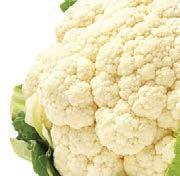

3 Do some research. What are the main differences between GWP100 and GWP*?



4 Which of these was used in the Life Cycle Assessment study? Why was this?
5 Do you think that GWP100 or GWP* should be used in NZ to assess methane targets? Explain why.
6 What does the term “climate neutral” mean?
what age are dairy heifers first put in-calf?
STRETCH YOURSELF:
is body weight the key driver of puberty?
1 What month is lamb kill typically at its highest levels?
2 In what month is lamb kill at its lowest levels?
3 Has this season followed a similar pattern to last season and the five-year average?
STRETCH YOURSELF:

1 The number of lambs processed in NZ during the 202122 season was 600,000 head lower than the previous season. Looking at the graph, what months were slaughter levels much lower than typical?


2 At 17.7 million head, this was the first season in 30 years of AgriHQ records where the number of lambs processed was below 18 million head. What factors do you think have driven a lower supply of lambs? 3 In the coming years, do you think NZ sheep numbers will increase or decrease. Why do you think this is?
Liveweight targets are one part of this.
what age should heifers
Are you a parent or teacher and want to receive AginED every week directly to your email inbox? Send us an email to sign up at agined@agrihq.co.nz Volume 132 I November 21st, 2022 I email:agined@agrihq.co.nz I www.farmersweekly.co.nz/agined
THIS GRAPH SHOWS NEW ZEALAND LAMB SLAUGHTER RATES.
HEIFERS ARE THE FUTURE OF ALL DAIRY HERDS so raising them well and making informed choices for all aspects of their care is imperative to dairy farmers.
Puzzle Me This How many words containing three or more letters can you make from CAULIFLOWER There are five 8 letter and eighteen 7 letter words that can be made from this, can you make any?
2
1 What is a heifer?
At
1
2
be at 90% of their mature weight? 3 How are mature weights estimated? 4 What is the most accurate way to assess if heifers are meeting targets? 5 Looking at the table below what would a 12-month Jersey heifers liveweight target be? 5a) What would a Friesian of the same age be? 5b) What would the target be for a 22-month crossbred heifer? logyTechnologyTech Cauliflower Ice Cream Anyone? A start up company called Kinda have made an “ice cream” from cauliflower and will be launching their single serve tubs in 2023. Jenni Matheson and Milli Kumar from Kinda with their cauliflower ice cream 1 How many flavours of ice cream does Kinda make? 2 How did the Kinda brand start? What do they believe are the environmental benefits of their brand versus traditional ice cream? It is important that heifers meet their liveweight targets. Not achieving them means delayed calving, lower fertility following calving and often less milk at first-lactation. Head
heifers/liveweight-targets/ to read more about this and then answer the following questions. For more information on the benefits of liveweight targets head to https://www.dairynz. co.nz/media/5788804/heiferfactsheet-11.pdf ☞ Jersey 423 kg Crossbred 467 kg Friesian 499 kg Source: National Dairy Statistics (2014) 27 AginED
Why
At
to https://www.dairynz.co.nz/animal/
Agri-data gathering ahead of Mystery Creek
Richard Rennie TECHNOLOGY Fieldays
THE growth of interoperability in agritech equipment and software has prompted a meeting of minds for industry players ahead of this year’s Mystery Creek Fieldays.

Andrew Cooke, chief technology officer for Map of Ag and CEO of Rezare Systems said in recent years the ecosystem of developers, designers, engineers and innovators within New Zealand’s agritech sector has become more connected as systems become more capable of interacting across software platforms.
“Going back a few years when we started developing tech, the software and hardware would be very self-contained. You would also have to build a web application and an app and it would stand alone and could not ‘talk’ to any other system.”
application and an app and it
While this tech is still there, the pre-Fieldays get-together to

swap ideas and views comes in an environment where technologies tend to cross-pollinate more.

“And the last year or two there have been quite a few initiatives, whether through AgriTech NZ or through the government or industry co-operatives. Those years have also had a lot of Teams and Zoom meetings, so this is an opportunity for people to get together to discuss and kick around new ideas.”



He welcomed the opportunity to support data integration and data innovation as the sector continues to advance in a funding environment that has shifted over that time.

“We are watching closely how funding goes in the coming year. There is a two-speed funding environment developing here. At one level some small organisations are finding venture capitalists are growing tired of their particular area and are finding it hard to raise finance. We have seen some struggle.”

Tauranga-based company

PlantTech was recently liquidated as its development funds dried up and commercial ventures took a hit.
At the other end of the funding spectrum, companies with a clearly defined solution to a farming problem that have demonstrated an ability to execute that idea commercially are still getting strong funding interest.
Cooke pointed to Australiabased Ceres Tag, a GPS animalmonitoring tag as one example.


Meantime, as a regular judge of the Fieldays Innovation Awards, Cooke said he is still seeing plenty of evidence both farmers and startup companies are developing solutions to farm problems.

“There is a good bunch of entries again this year, which is good to see after all the disturbance of the past couple of years.”
In the past the innovation awards have proven the
We are watching closely how funding goes in the coming year. There is a two-speed funding environment developing here.
Andrew Cooke Map of Ag
“You do not need to enter to win. If you are there you are getting exposure and that is valuable.”
The pre-Fieldays tech gathering for those interested in agridata and tech is to be held Tuesday November 29 at Waikato Innovation Park conference centre, from 4pm.
Three reasons to come and see us
Fieldays Learn about our shearing and wool handling courses Find out why Get Milking Online courses are a great start for all new staff Join the team, become a Get Milking licensee Book a time to have a chat onsite at our Fieldays stand PB18 or call Alister Shennan 027 302 3713 28 Fieldays FARMERS WEEKLY – farmersweekly.co.nz – November 21, 2022 Fieldays 28
at
starting point for products that have advanced well down the commercial path, including Ubco electric bikes and Halter remote monitoring collars.
SOLO: Map of Ag CTO Andrew Cooke says greater interoperability means there is a good opportunity for practitioners from across the agritech sector to get together and kick around new ideas leading up to Mystery Creek.
BOLD VISION: As a regular judge of the Fieldays Innovation Awards, Andrew Cooke says he is still seeing plenty of evidence that both farmers and startup companies are developing solutions to farm problems.
MPI to showcase support for sector at Fieldays
Awealth of information to help farmers and growers thrive will be available at Fieldays 2022, as the Ministry for Primary Industries showcases its support for New Zealand‘s food and fibre sector.
A central focus at MPI‘s Fieldays site – at Mystery Creek from 30 November to 3 December – will be our new On-Farm Support services. Farming is a challenging and ever-changing business, and we are working hard, alongside our sector partners, to ensure that farmers and growers have the information and support they need to prosper.
MPI will provide on-theground support to help farmers and growers navigate requirements around climate, water, animal welfare and the environment.
During the Primary Leaders’ lunch, announcements will be made on the first projects by the Centre for Climate Action on Agricultural Emissions and the Centre’s Joint Venture, which is a long-term partnership
with industry. Protecting New Zealand from pests and diseases is another big part of our work, and we’re working hard to keep them out of Aotearoa.
Following an outbreak of footand-mouth disease in Indonesia this year, we have intensified our work at the border to protect New Zealand‘s farmers and growers. Our site at Fieldays
Find your career in the food and fibre sector
Fieldays is partnering with the Ministry for Primary Industries to launch the Fieldays Opportunity Grows Here Careers Hub, where attendees can learn about food and fibre career pathways and consider options on how to join a thriving sector.
Education providers and sector groups are teaming up to showcase the types of careers on offer for younger Kiwis and career changers.
the farm gate. Food and fibre careers range from work onfarm, in science, technology, business management and logistics, to animal welfare, marketing and research and development across New Zealand.
National Fieldays Society chief executive Peter Nation says the hub is an important part of its mission to advance agriculture.
“As the southern hemisphere’s largest agricultural event we have a duty to help futureproof the sector through educating people on where the opportunities lie in food and fibre.”
MPI director-general Ray Smith says the primary industries have grown despite the COVID-19 pandemic.
Careers Trail for visitors to follow around the Fieldays event to explore career options and vacancies, participate in an engagement series and view a jobs board detailing available food and fibre roles.

New Zealand has a proud history of producing high-quality, innovative, and world-class food and fibre products, with care for people and place remaining front of mind.
Explore the wide range of exciting career options at www. opportunitygrowshere.nz and visit the Fieldays Opportunity Grows Here Careers Hub https:// www.fieldays.co.nz/attendfieldays/explore/careers.

The Opportunity Grows Here attraction campaign brings information about training, careers and job listings within the food and fibre sector into one place, and continues to connect employers and employees.

The Fieldays Opportunity Grows Here Careers Hub highlights the many varied roles and opportunities available within the sector – and many of those reach well beyond
“New Zealand’s food and fibre sector is leading the nation’s recovery by keeping vital food and fibre flowing domestically and overseas. For the first time, annual export revenue reached more than $53.1 billion, in the year to 30 June, 2022.”
The interactive hub will offer a hive of activities, including a virtual reality demonstration on pruning orchids and vineyards.
The programme also includes an Opportunity Grows Here
will highlight key biosecurity protection efforts and what to look out for.
On show will be work that includes eradicating wallabies, to limit their economic impact
on farmers and growers, and the National Wilding Conifer Control Programme, which aims to prevent infestations from overwhelming our unique landscapes.
We will draw attention to the signs and impact of wallabies and will emphasise how everyday actions by the public can help stop their spread.
Resources from Fisheries New Zealand will enable recreational fishers to take responsible actions to safeguard our fish populations.
Tools, including the free NZ Fishing Rules App, will allow fishers to ensure there will be fish today, tomorrow and for generations to come.
Look out for MPI’s popular temporary tattoos and the NZ Food Safety fridge sorting game, both making another appearance at Fieldays to consolidate key messages for younger attendees.
The latest Situation and Outlook for Primary Industries – an economic forecast for the year ahead – will also be launched at Fieldays.
Planting the seeds for a brighter forestry future

Visitors to Fieldays will have the opportunity to learn about the forestry sector from 35 sector organisations and companies under one roof.
The Forestry Hub – a first for Fieldays – is a collaborative forestry sector site aimed at promoting to all New Zealanders that forestry is an important industry for both economic and environmental reasons, as well as employment.
At the hub, visitors will discover engaging experiences on forestry growing, climate change, wood products, timber construction, biosecurity and biodiversity. There will also be a simulator on site so visitors big and small can experience what it’s like to operate machinery in a forest.
The hub is a collaboration between Fieldays and an advisory group comprising of Te Uru Rākau – New Zealand Forest Service,
Forest Growers Levy Trust, Scion, NZ Forest Owners Association, Red Stag, NZ Farm Forestry Association and Future Foresters.
The multi-billion-dollar forestry sector is a major employer in Aotearoa New Zealand, providing more than 35,000 people both year-round and seasonal jobs.
New Zealand has about 1.7 million hectares of productive forests around the country and is currently the world’s largest exporter of softwood logs.
Plans are also afoot, through Te Uru Rākau – New Zealand Forest Service Industry Transformation Plan, to add more value to our forestry sector by processing wood materials in New Zealand, which in turn will create even more career and job opportunities.
Children are also encouraged to visit the Fieldays Forestry Hub, with the launch of the “Kids Grow a Great Tree” campaign.
Where to find us at Fieldays
Main MPI site: Pavilion, PD25 to 33
Careers Hub: E Street, site E30
Forestry Hub: G78 to 86, corner of G Street
www.mpi.govt.nz ADVERTISEMENT
and I Road
The importance of biosecurity to New Zealand will be a major focus at MPI’s Fieldays site.
29
Massey site to showcase agri innovations


 Fieldays
Fieldays













 TE KUNENGA Ki
TE KUNENGA Ki

Pūrehuroa Massey University will be showcasing its latest innovations in food science, horticulture and agriculture at this year’s Fieldays at its site in the main pavilion.
Massey has had a site at Fieldays since 1973, beginning when Professor Emeritus Ralph Sims loaded up a Bedford truck with the idea of promoting Massey’s bachelor’s degrees and diplomas in agricultural science and horticultural science.
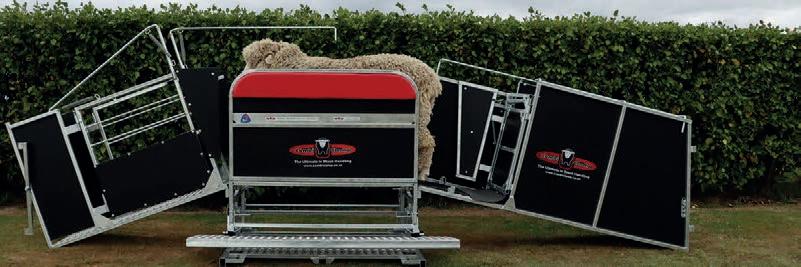
Nearly 50 years on, the university’s presence at Fieldays may look different, but its purpose remains the same: to demonstrate how the research and expertise of Massey staff, students and alumni in agrifood contribute to the advancement of New Zealand.
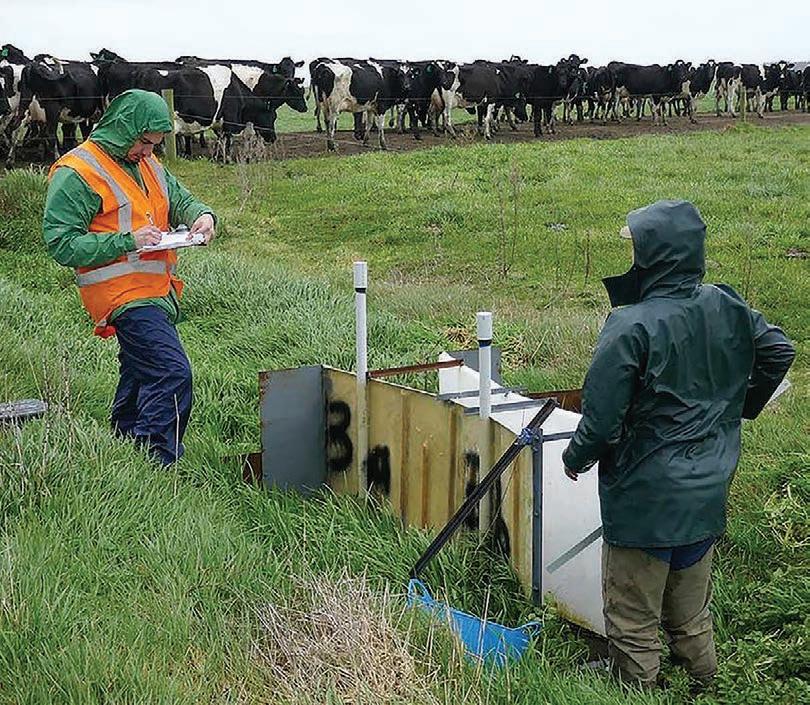
An interactive timeline of Massey’s significant developments across all areas of study will be on display at the Massey stand, and academic and future students’ advisors will be on hand to answer course-related queries.

Massey’s School of Agriculture and Environment last year presented a working farm model to describe scientific solutions to aid farmers in their bid to reduce the demand on water sources while improving water quality.
This year, Professor Chris Anderson, Associate Professor Ranvir Singh, Associate Professor David Horne and their research team will be on site, showcasing research focused on the measurement and minimisation of surface water runoff on farms and other managed environments, including containment of water.
That model will be back along with a demonstration of detainment bunds and an explanation of the process through its digital explainer.

Farmers, iwi, local councils and scientists are concerned about the loss of phosphorus and sediment from land into freshwater systems. After heavy rain, these pollutants are transferred into freshwater environments by excess surface runoff. This can lead to increased plant and algal growth that becomes a danger to aquatic life and creates an imbalance in freshwater ecosystems.
One of the strategies to tackle this issue is detainment bunds. These low earthen structures can provide a nutrient minimisation strategy for pastoral agricultural runoff, essentially preventing the phosphorus and sediment reaching rivers or streams.
Also on site will be vegan ice cream brand co-founder and food technology master’s student Mrinali Kumar, who is changing the game on food waste by developing a vegan ice cream made with cosmetically imperfect cauliflower.
Kumar and co-founder Jenni Matheson created Eat Kinda with a mission to make vegan foods taste better using science, technology and Kiwi ingenuity.

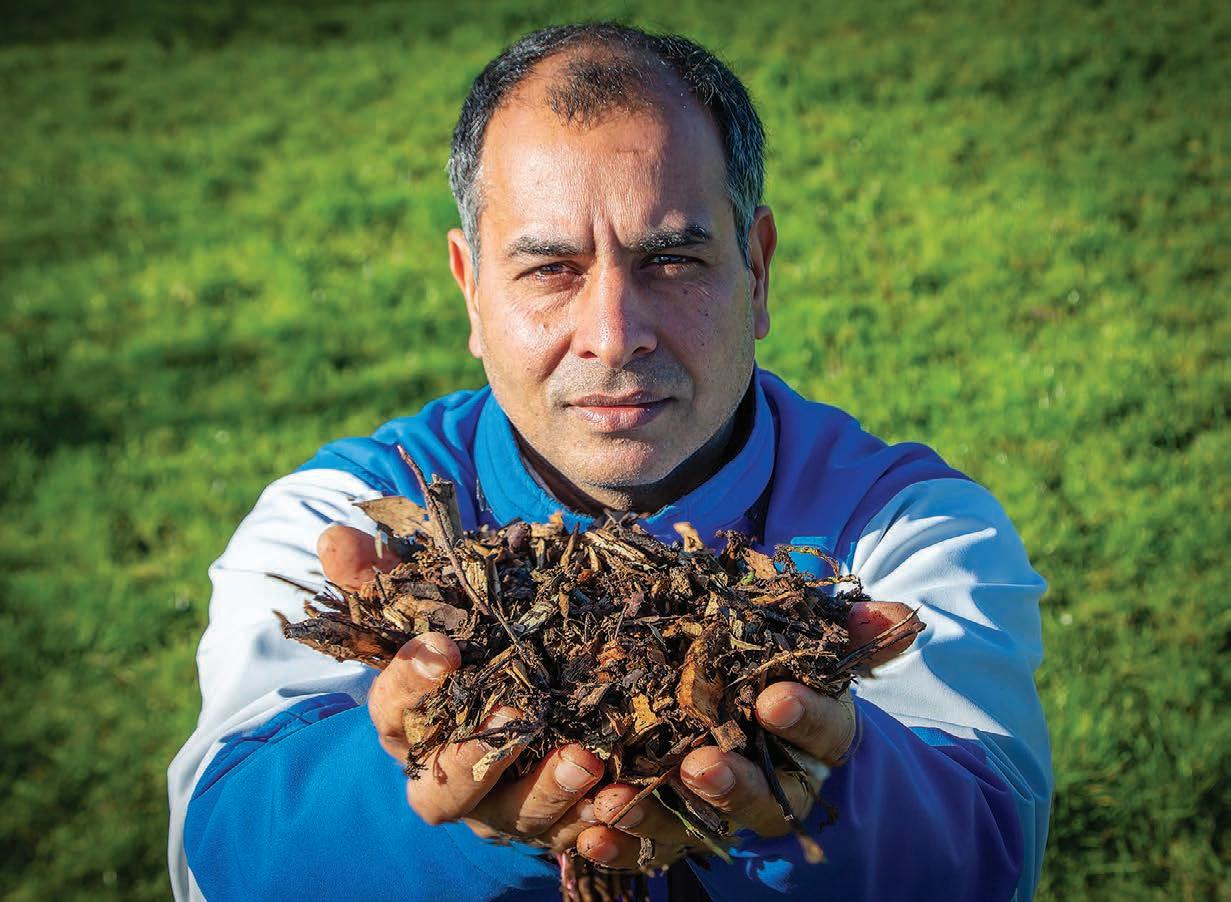
Kumar will be attending Fieldays to demonstrate how studying food technology can lead to creating your own business and developing innovative products that can change the food industry.
Through her time with Massey’s School of Food and Advanced Technology, Kumar was able
to develop her product using research and technical skills learnt during her degree and by using the facilities available at Massey, including the food pilot.
Learning these technical skills was pivotal for the creation of the innovative formulation that makes Eat Kinda ice cream stand out from other plant-based competitor products, with a creamy, dairylike texture and a higher melting stability.
Strawberry ripple, chocolate ripple and mint chocolate biscuit are the first three flavours in the range and will be available to sample at the Massey stand during the event.
The Eat Kinda brand has already received recognition for its outstanding innovative development and potential for global success. Kumar was the winner of the Momentum Student Entrepreneur category at the 2022 KiwiNet Awards, following on from her win at the Massey Enterprise competition and the
Also on site will be food technology master’s student Mrinali Kumar, who is changing the game on food waste by developing a vegan ice cream made with cosmetically imperfect cauliflower.
Startup Weekend in Taranaki.
Massey will also be holding an “in conversation” luncheon event for Massey alumni, students and whānau on December 2 at 12:30pm to discuss improving environmental outcomes for farming.
The discussion will be moderated by the Head of the School of Agriculture and Environment, Professor Paul Kenyon, with guest speakers Associate Professor David Horne and Associate Professor Ranvir Singh.
0800 227 228 combiclamp.co.nz Site C92 Come See Us At Mystery Creek Fieldays® FREE FREIGHT ON ALL PURCHASES OVER $7,000 to your nearest Toll DepotL 30 FARMERS WEEKLY – farmersweekly.co.nz – November 21, 2022 Fieldays 30
Gerald Piddock NEWS
WATER WAYS: Associate Professor Ranvir Singh will be sharing research focused on the measurement and minimisation of surface water runo on farms.
LEACHING MOMENT: The loss of phosphorus and sediment from land into freshwater systems is a concern for agriculture and the environment. At Fieldays, Massey will share strategies to counter this.
Hub helps bridge gap in rural healthcare

providing scaled-down versions of urban healthcare.”



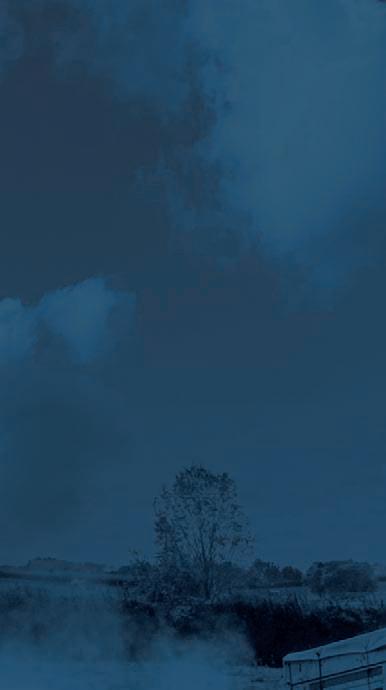



RURAL communities face unique challenges in accessing healthcare, infrastructure and services essential to their overall wellness.

As many as one in four New Zealanders live in rural communities.

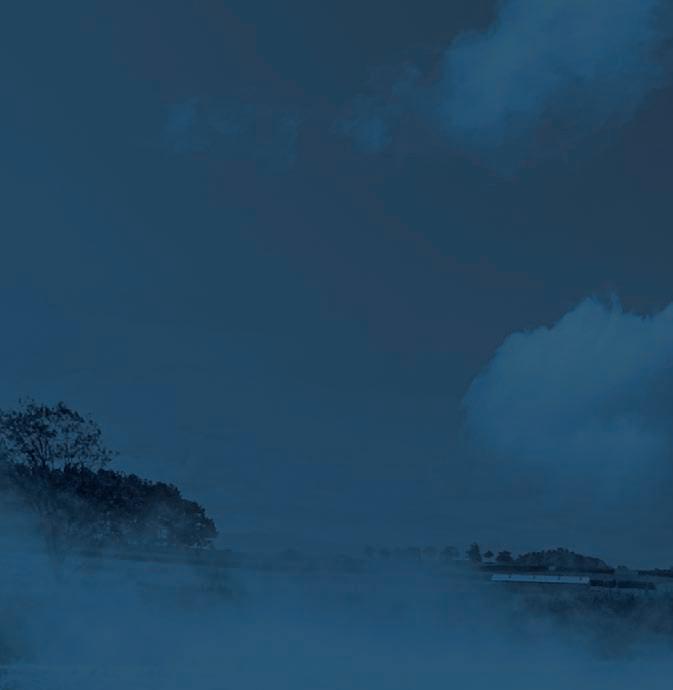

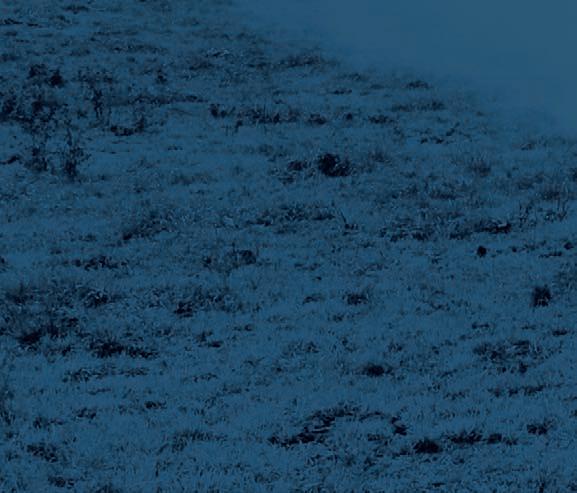
Dr Garry Nixon, head of the rural section of the Department of General Practice and Rural Health at Otago University and a doctor in Central Otago, is well versed in the key health concerns affecting rural New Zealanders.

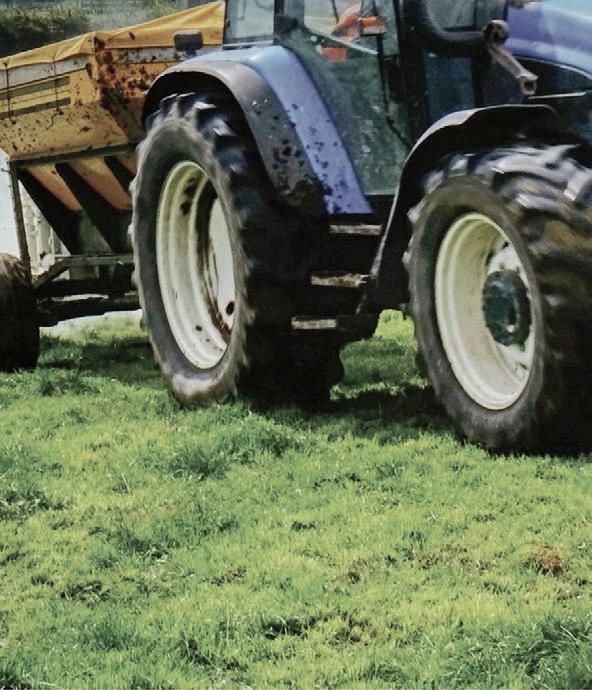
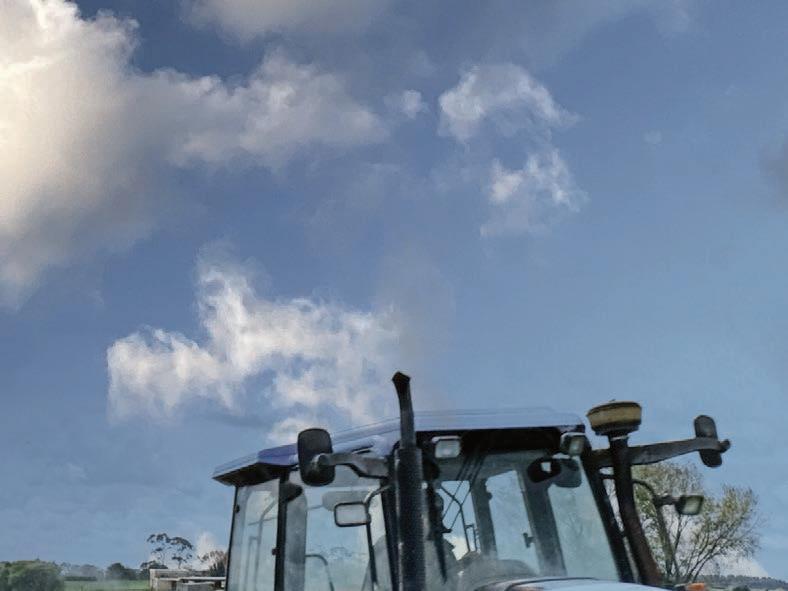

Nixon, who took part in a panel discussion, “Taking the pulse of rural health”, on Fieldays TV last year, said access to health services is a significant challenge for rural communities.
“Distance is a barrier and rural people don’t get the same access to specialist care. Providing good and accessible healthcare in rural areas means doing things differently to the way they are done in town – not simply
Another major issue affecting the health and wellness of rural communities is the severe shortage of doctors and other
health professionals in rural areas. Nixon said that to resolve this, training needs to be centred in rural regions.
“The international evidence tells us that if we want health professionals to work in rural areas, we need to train them there.
“This needs a targeted central government initiative to work with the universities to create a rural clinical school or equivalent solution.”

He said improving access to services and health outcomes for rural Māori is an important priority, saying: “Rural Māori have poorer health outcomes than both urban Māori and rural non-Māori.”
To determine the extent of urban-rural health inequities in New Zealand, Nixon and his research team have developed a Geographic Classification for Health (GCH). This tool classifies residential addresses as either urban or rural from a health perspective, and in turn, will better inform policy regarding rural health.
“The GCH will provide more accurate measures of the health of rural New Zealanders,” Nixon said.
“We are already starting to see this in the data. For example, the GCH is demonstrating higher mortality rates for a number of conditions in rural areas, something that is not evident using older and generic urbanrural classifications.”
Another service bridging the urban-rural divide in healthcare is the Fieldays Health and Wellbeing Hub, run in collaboration with Christchurch-based rural health provider Mobile Health.

Here, Fieldays event goers can receive a wealth of free check-ups, tests and advice, from skin cancer spot checks to blood glucose tests, blood pressure tests, atrial fibrillation checks, smear tests, hearing checks, hepatitis C tests and confidential mental health support.

The fact that 33,000 people came through the Health and Wellbeing Hub at Fieldays 2021 further demonstrates the need for greater healthcare access and services in rural New Zealand.
Andrew Panckhurst, communications manager at Mobile Health, said that more than 30 health and wellness partners will be a part of the Health and Wellbeing Hub for Fieldays 2022.
“We will continue to have a strong emphasis on mental health and wellbeing, along with promoting melanoma skin checks for early detection.
“As always, we’re expecting a great turnout and look forward to welcoming everyone involved. It’s a fantastic couple of days of innovation, education, and globalisation.”
$500 OFF TML & Free TracMap Online For a Year* Come and see us at site PC9 & PC11 at Fieldays, Mystery Creek. Come and see us at site PC9 & PC11 at Fieldays and enter the draw to win** Win a tml rugged Valued at $7500 ® **Special is valid at the show only. TML Rugged unit is free but a TMO subscription will need to be purchased 0800 872 262 | tracmap.com *The free year of TracMap Online (TMO) is applied in the first year of the agreement based on a five year subscription model. Terms & Conditions apply. 31 FARMERS WEEKLY – farmersweekly.co.nz – Novembe 21, 2022 Fieldays 31
Staff reporter
PEOPLE Fieldays
TOGETHER: The Fieldays Health and Wellbeing Hub will offer a raft of tests and counselling.
NEW THINKING: Dr Garry Nixon, head of the rural section of the Department of General Practice and Rural Health at Otago University, says providing good and accessible healthcare in rural areas means doing things differently to the way they are done in town.
The future of farming
Tru-Test Active Collars have proven to be a game changer for many New Zealand dairy farms since launching earlier this year. With a suite of other smart technology products to follow close on their collars, Datamars Livestock is leading the way to help farmers work smarter.


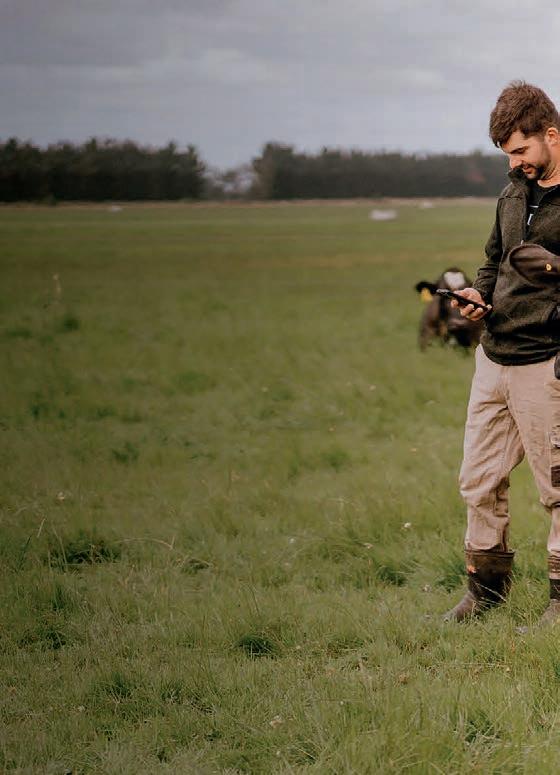

Barry Flynn milks a 620-strong Friesian herd on 195Ha in Methven. The farm manager originally from County Cavan in Ireland, is slowly building up numbers on the Cavendish Partnership farm, an ex-forestry block just outside Mt Somers. Three years out, and it presents some animal health challenges.

“We are building up the soil profile and the cows are producing lots of milk. The first year we hit our breeding target. But last year, didn’t go our way. This year, we wanted to explore how we could improve our breeding. One key strategy for doing that was collars.”
Rob and Barry looked at their options. They ran with Tru-Test Automated Heat Monitoring with Active Collars from
Datamars Livestock.

“From an Irish point of view, I am very aware of wearables. Many farms back home would be using collars and the research behind this is extremely good. The way Rob Turney, the farm owner, and I thought about it was, ‘there was no point in fighting technology, it is coming in’. We might as well be innovative and understand it as early as we can to gain that couple of percent which is key.”


“Here we are today! The collars have been a really great success. Our return rate at that first 21 days was extremely good. We have seen a very steady fall off in those numbers of cows coming back on heat which is a very good sign. We can see from the data that we are inseminating them at the right time, not too early or late and the cows are holding on to the pregnancy.”
“We have found the collar data has been a real help for younger animals. One weakness of the industry is that cows fall out of the system far too early, and we are not getting our cows back in calf as early as we should. The data from



the collars is giving us every bit of health advantage. If we think of the cow as an athlete, we are asking a cow to calve down in August and demanding her to get back in calf by the first week in November. It is not giving the animal that much time to heal and recover. With these collars, we are doing our best to ensure as few cows are falling out of the system as possible. Going forward that’s our goal –sustainability.”
All the cow behaviour data, and heat and health insights, are integrated through the Datamars Data Livestock Cloud Software. Barry sees all this via the phone app.
“Rumination for example, the cow might physically look okay but inside its
four stomachs might not actually be working 100 percent. She might be losing energy through that. It is quite easy then to say, that cow is not fully right. Especially over calving time, the data gives you the opportunity to be proactive. Those small things can make a huge difference to the whole impact of your season.”
“The other massive benefit with collars, as it is with every other industry in New Zealand, is staff.
It’s a massive thing for us. This year has been hard, but we haven’t required someone on the vet stand. With collars you are saving a unit because you don’t need a second person in the shed. That makes

a huge difference. I am saving two hours of every day. Instead, I am outside making judgement calls, actually managing the farm which I am paid to do.”
Head of Datamars Livestock Smart Farming for Australasia
Verne Atmore is pleased with the results farmers have seen with their Active Collar Tag but is quick to point out it’s just the start.
“We’re excited to showcase our new automated Walk Over Weighing systems at this coming Fieldays. The solution includes the Flexi Mobile 4000C for in-paddock automated weighing and the Dairy WOW 4000C for in-shed daily herd weighing.”
Visit the Datamars Livestock Smart Farming team at the Fieldays (sites F46 & F48) to find out more about how Tru-Test Active Collars and the new WOW technology can help you transform your performance.
Exclusive Fieldays Deals *While stocks last and only onsite at the Mystery Creek National Fieldays 2022 50% off Tru-Test Load Bars RRP when you spend over $1,500 on other Datamars product.* TRU-TEST HD5T & MP600 LOAD BARS $100 Stoney Creek voucher for every Tru-Test XRS2 Stick Reader purchase.* EID XRS2 STICK READER FIELDAYS SITES F46 & F48 $100gift card
“We trialled them because of Tru-Test’s reputation. We’re now running with them across the herd because of the results.”
ADVERTISEMENT
Barry Flynn FARM MANAGER
32
Road
Deadline Sale
95 ha (approx.) Dairy farm - Location counts


An opportunity exists here for those that recognise it.
A great location on the west side of Hamilton, with Raglan, Hamilton and Te Awamutu all within 30 minutes of this location. With two houses and operating as a spring calving dairy unit, the opportunity exists for those looking for a large lifestyle block, farmers looking for a good sized support unit or a first farm purchaser to own land. Approximately 3 ha of mature native trees enhance this 85% flat contour property. Contact the agents today for property information.
Deadline Sale closes Wednesday
30th November, 2022 at 4.00pm
View By appointment Web pb.co.nz/HMR110414



Craig Miller M 021 874 283
John Sisley M 027 475 9808
Wharepapa South 356 Whatauri Road
Nobody regrets buying quality
This 111 ha (subject to survey) dairy unit is located in the highly sought after Wardville District and is presented to the market in excellent heart. The all-flat contour is held in two titles and has two road frontages.
The property is very attractive, well raced and subdivided with quality soils. Farm infrastructure includes a 26 ASHB cowshed with in-shed meal feeders and ProTrac drafting system along with a range of good support buildings.
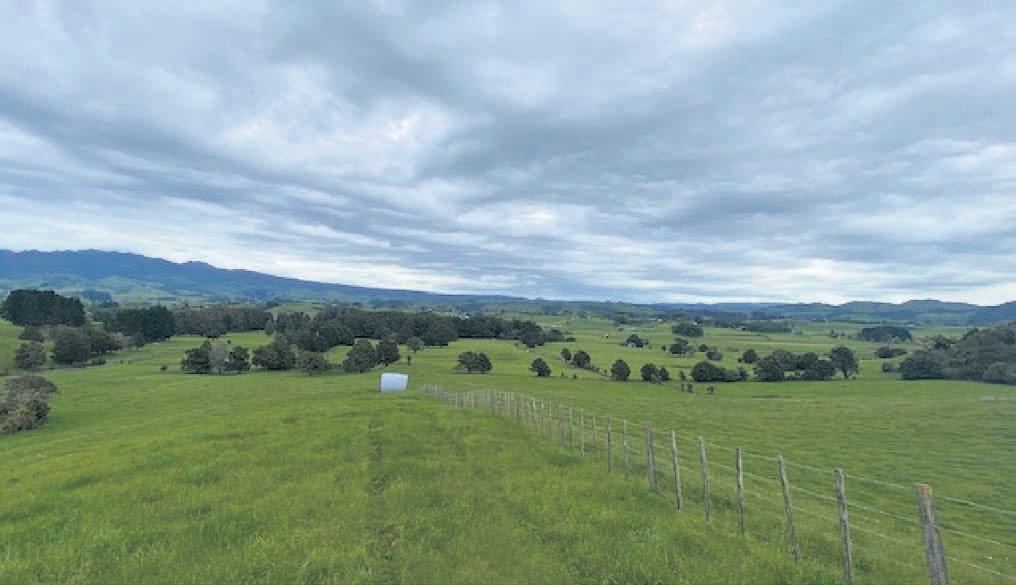


The main homestead will be a brand new three bedroom with office nook 'Heartland Homes' build and the second dwelling is a modern three bedroom cottage providing quality accommodation for a farm manager.
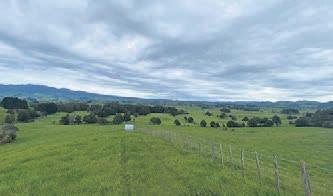
Tender
Tender closes 2.00pm, Tue 6th Dec, 2022 (unless sold prior), C/Farmlands, 127 Mangawhero Road, Matamata

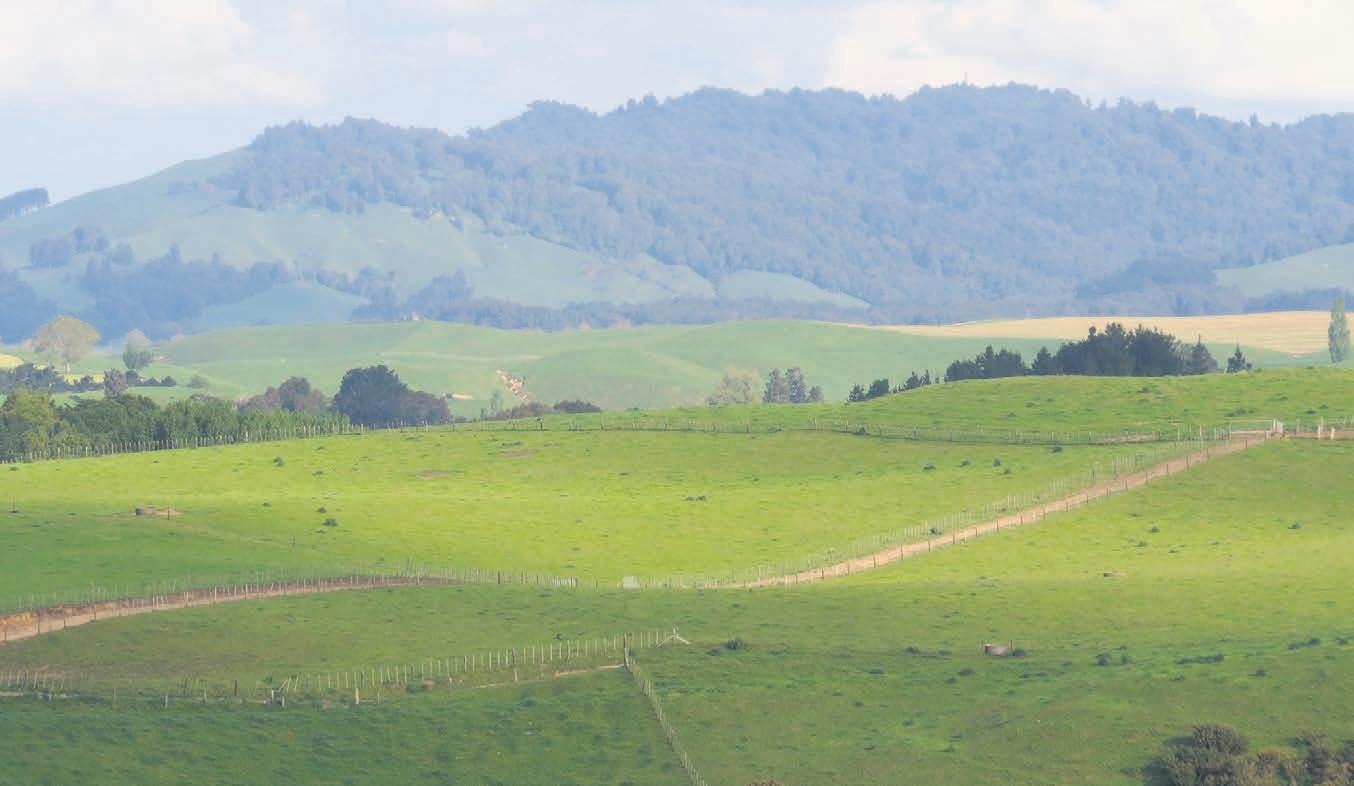
View Tue 22 Nov 11.30 - 12.30pm Tue 29 Nov 11.30 - 12.30pm Web pb.co.nz/MAR111058


Ian Morgan M 027 492 5878

Chelly Aitchison M 022 697 8779
Something for everyone
•164 ha dairy unit - 33 km southeast of Te Awamutu



•Production has been around 100,000 kgMS for the last five years
•Large executive style main home; 30 ASHB shed and feed pad
•A mix of contour - flat & easy, steeper with rocky outcrops
•Good fertile free draining soils
•There is work required but the basics are here
Our seriously for sale vendor wants a result! The property can be purchased as one lot or in two parts.
Tender closes 4.00pm, Wed 14th Dec, 2022 (unless sold prior), Property Brokers, 138 Arawata Street, Te Awamutu View Wed 23 Nov 12.00 - 1.00pm
Web pb.co.nz/CBR111025
David McGuire M 027 472 2572 E david.mcguire@pb.co.nz
John Sisley M 027 475 9808 E john.sisley@pb.co.nz
Te Pahu 25 Bowe Road
Wardville 629 Wardville
Tender
Property Brokers Ltd Licensed REAA 2008 pb.co.nz Proud to be here 33 Real Estate
Te Kuiti 286 State Highway 30
Te Kuiti 210B Mangarino Road
Deadline Sale
Open Day
Best of both worlds - town and country
This well presented 85.3 ha property is located at 286 State Highway 30, just a short drive to Te Kuiti.
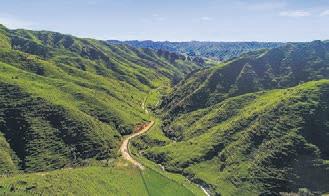
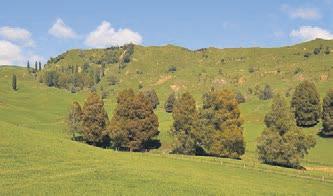







• Mainly flat to undulating with some steeper contour at rear of property with reticulated water sourced from reliable spring supplies.
• Infrastructure includes a gorgeous villa that oozes character and charm, three stand woolshed, three bay implement shed, hayshed and cattle yards.
If you're looking for a tidy well balanced grazing property in a handy location then this opportunity is well worth a look.

Deadline Sale closes Thursday 8th
December, 2022 at 4.00pm
View Tue 22 Nov 10.00 - 11.00am
Tue 29 Nov 10.00 - 11.00am
Web pb.co.nz/TER111301
Doug Wakelin
M 027 321 1343
Di Janett M 027 554 2227
16.4 ha lifestyle property - executive house
This well located lifestyle property has a new executive home on an elevated site and is finished to a standard that most of us dream of. Boasting an open plan kitchen, with scullery, dining and lounge, three double bedrooms, the master with walk in wardrobe and ensuite, a theater room which could be a fourth bedroom and a good sized office. Complimented with 90 m2 of north facing decking with spectacular views that create incredible indoor/outdoor flow. Garaging is an internal three bay garage. Other infrastructure includes a brand new 130 m2 three bay colour steel shed, two bay implement shed and cattle yards to make for easy stock handling.
3 2 2
Tender closes 4.00pm, Mon 5th Dec, 2022 (unless sold prior)
View Sun 27 Nov 10.00 - 11.00am
Web pb.co.nz/TER107739
Di Janett M 027 554 2227








Doug Wakelin M 027 321 1343

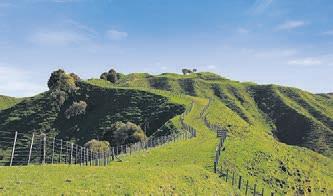
Waitaanga grazing or forestry
A 546 ha (approx.) grazing property centrally located approx. 117 km southwest of Te Kuiti and 97 km northeast of New Plymouth. With over half of the 450 ha effective area being easy contour the property is capable of running at least 80% cattle. Fenced into 30 main paddocks with natural water. Winter stocking rates of 850 sheep and 635 cattle. Infrastructure includes a three bedroom and a four bedroom dwelling, a four stand woolshed with covered yards, concreted Te Pari cattle yards, two implement sheds, one hayshed and a fertliser bin. This farm offers diversity in stocking options and with Manuka, native surrounds, bee keeping and exceptional hunting are here for the taking.

For Sale By Negotiation + GST (if any)

View By appointment
Web pb.co.nz/TER109593
Doug Wakelin M 027 321 1343
Di Janett M 027 554 2227
Ara Farm
This tidy sheep and beef farm is 34 km west of Taumarunui, in Otunui. The 466.20 ha (approx) farm has 400 ha effective grazing land and 60 ha of scattered native bush. Rolling flats complement medium to steeper hill country and gives the farm many stock policy options for a future proofed operation. The farm has been faithfully fertilised over the last 37 years of current ownership. There are natural water sources around the farm, good fencing, laneways and satellite yards. A good house and further buildings support the farm, including a haybarn and a four stand woolshed with covered yards. There are many farming options here to explore.
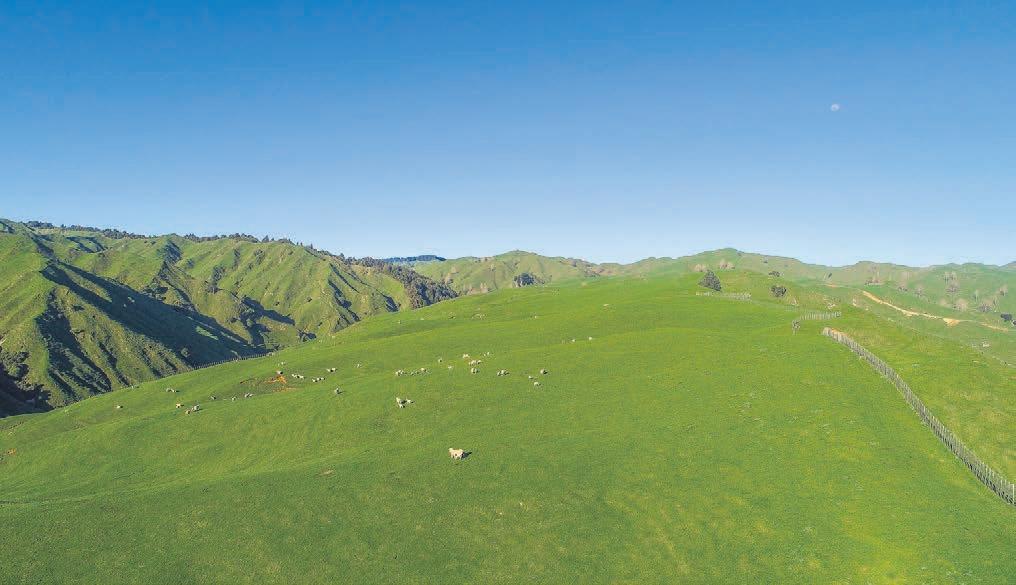
Tender closes 4.00pm, Thu 1st Dec, 2022 (unless sold prior), Property Brokers, 27 Hakiaha Street, Taumarunui
View By appointment
Web pb.co.nz/TUR103743
Katie Walker M 027 757 7477
Ohura 262 Waitaanga North Road
Taumarunui 292 Aramahoe Road, Otunui
Tender
Property Brokers Ltd Licensed REAA 2008 | pb.co.nz Proud to be here 34
Wairoa, Whakaki 1489 State Highway 2
Auction
McKinnon Farm
• 21 ha (793 acres)
• Great mixture of hills and flats
• 65 ha of flats approximately
• Subdivided into 27 main paddocks
On the market for the first time in 40 odd years, McKinnon Farm offers a great opportunity. Conveniently located approx 1 hour south of Gisborne and 15 minutes from Wairoa and approx 20 minutes to Mahia Beach.






McKinnon Farm has been run as traditional breeding operation and will suit a wide range of buyers from new farm owners or existing operators looking to expand their portfolios. This farm is ready for its new custodian, is that you?
Kaponga 922 Eltham Road
Auction 12.00pm, Thu 15th Dec, 2022, (unless sold prior), 66 Reads Quay, Gisborne
View By appointment Web pb.co.nz/GIR111317
Tom Lane M 021 058 7018 E toml@pb.co.nz




Opunake 920 Ihaia Road
61.5 ha - Kaponga gem
For tender is this fantastic 60.6 effective ha dairy farm which is located 3 km from the Central Taranaki township of Kaponga and will provide first farm owners or astute investors a great investment opportunity to purchase a high producing and well located dairy farm. The contour is generally flat to gentle sloping. This, combined with the extensive regrassing program, the strong fertility and Egmont Black Loam soils, ensures a very strong pasture harvest. Currently managed by contract milkers and supported by the owners' run-off, average production of 91,500 kgMS is achieved from a peak number of 200 cows. Modern, updated infrastructure is of a high standard.

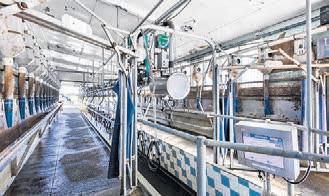
3 1
Tender closes 4.00pm, Tue 6th Dec, 2022, Property Brokers, 227 Devon Street East, New Plymouth
View By appointment Web pb.co.nz/NPR109624


Greg O'Byrne M 027 598 3000
95 ha - Opunake dairy farm with options
For tender is this reliable 82 effective ha dairy farm which is located 9 km inland from the Taranaki coastal town of Opunake, providing a great investment opportunity for investors looking for an easy to manage dairy farm which is currently supplying OCD. This flat to rolling property, with great road access, has five titles giving multiple ownership options. The current owners use a farm manager to run a simple self-contained system, focusing on low cost production averaging approximately 85,000 kgMS from a peak number of 230 cows. The strength of this farm is the solid level of infrastructure with a sound weather board three bedroom home, 26 ASHB dairy with in-shed feeding and more.
3 1
Tender closes 4.00pm, Tue 6th Dec, 2022, Property Brokers, 227 Devon Street East, New Plymouth
View By appointment
Web pb.co.nz/NPR109579
O'Byrne M 027 598 3000
Tender
Tender
Property Brokers Ltd Licensed REAA 2008 pb.co.nz Proud to be here 35
Greg
Awatuna 2178 Eltham Road
Tender
266 ha - Large scale Awatuna dairy farm
Our motivated vendors have instructed Property Brokers to offer for tender this larger scale Taranaki dairy farm located in the strong farming area of Awatuna. This farm will appeal to those wanting to grow their farming business or looking for a sound investment. The contour is flat and is well subdivided with excellent laneways. Fertile Egmont Black Loam soils help promote excellent pasture growth, and the regular cropping ensures a strong pasture renovation program with modern cultivars used. The average production for the last four seasons is 317,000 kgMS from an approximate peak number of 780 cows. The infrastructure is of a good standard and includes four houses, 60 bail rotary shed, ProTrac, inshed feeding, two feed pads, modern effluent systems with traveling irrigators, multiple hay/calf sheds and a workshop. Water is sourced from the Waimate West water scheme. If you are looking for a flat, larger scale and well located South Taranaki dairy farm, look here!

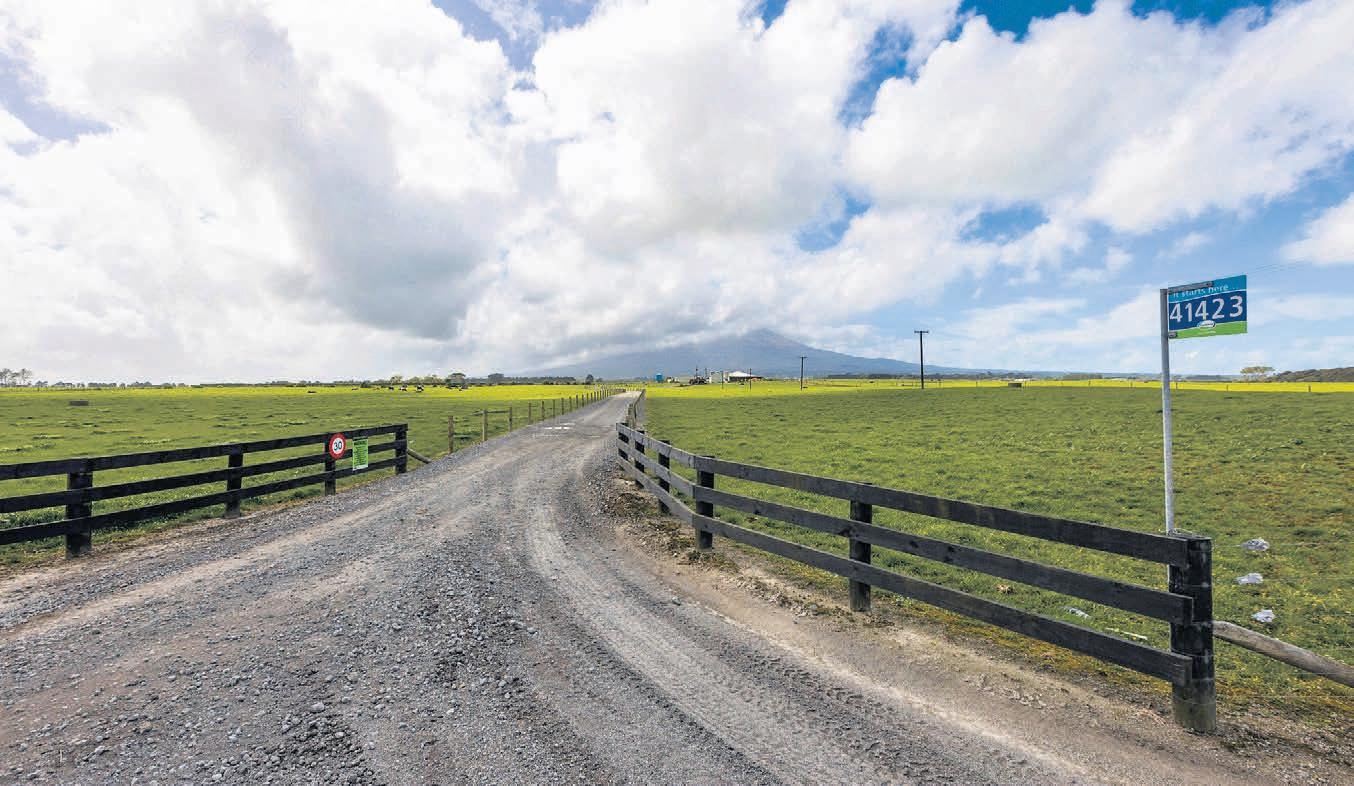

Opunake 428 Patiki Road
Greg O'Byrne M 027 598 3000 E greg.obyrne@pb.co.nz


Tender
102 ha - The best I have seen!





Property Brokers are privileged to bring to the market for tender this absolutely outstanding 96 effective ha dairy farm. It is located in the sort after renowned dairying district of Pihama in South Taranaki. This immaculately presented dairy farm is supported by a consistently high level of milk production and will appeal to any purchaser looking to buy the best of the best. The contour is flat and consists of fertile Egmont Black Loam soils. The current management system is split calving and supported by a 23 ha leased run-off (available for purchase). The five year average production of 186,500 kgMS is achieved from a peak number of 360 cows. The modern infrastructure is of an impressive standard and includes a four bedroom main house plus office and tidy second three bedroom house, 40 bail rotary shed, ProTrac, multiple sheds, feed pad, modern effluent system. Water is sourced from the Cold Creek water scheme.

4+ 1+1
Tender closes 4.00pm, Thu 8th Dec, 2022, 227 Devon Street East, New Plymouth.
View By appointment Web pb.co.nz/NPR111318
Greg O'Byrne
M 027 598 3000 E greg.obyrne@pb.co.nz
Greg
O'Byrne
Tender closes 2.00pm, Thu 15th Dec, 2022, Property Brokers, 227 Devon Street West, New Plymouth View By appointment Web pb.co.nz/NPR111710
Property Brokers Ltd Licensed REAA 2008 | pb.co.nz Proud to be here 36
Maxwell 1496 State Highway 3
Deadline Sale
Pukeariki - 203 ha
This very well presented property opens up to a 372 m2 homestead built in 2006; with four bedrooms including a master with an ensuite, office space and open plan living leading out to well manicured gardens surrounding the homestead itself.
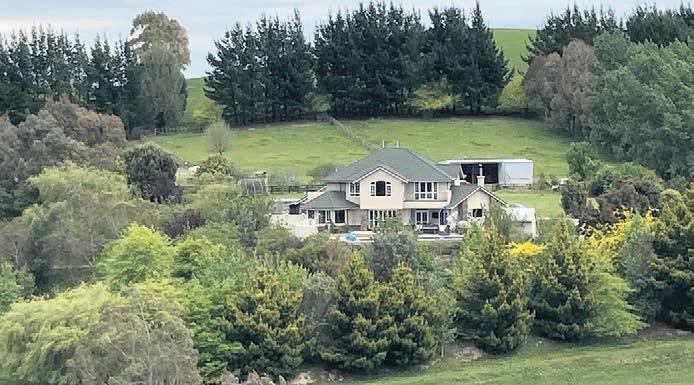
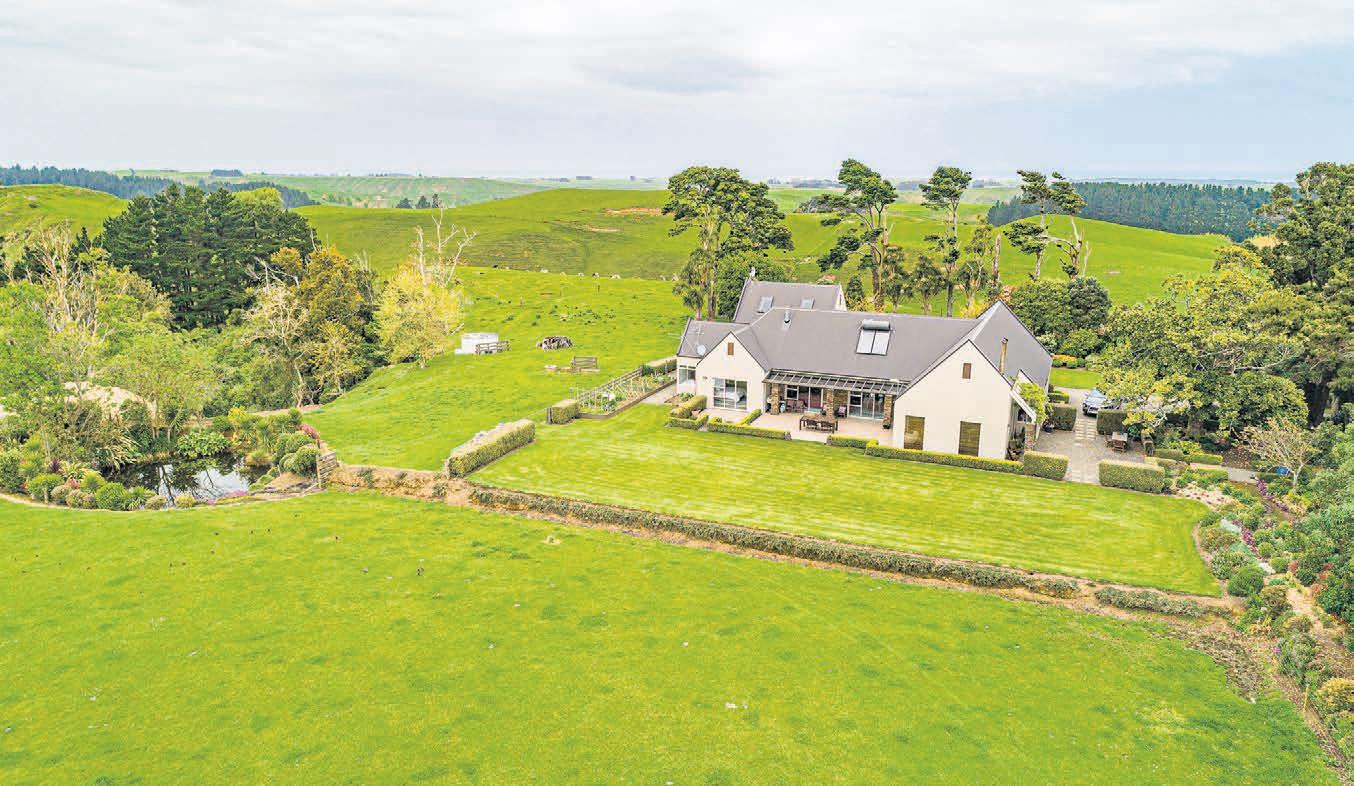
There is also two more separate dwellings offering three bedrooms in each. This property is predominantly electric fence boosting approximately 65 paddocks with most leading to a central race; which in turn leads to a large set of cattle yards. There is a three stand woolshed with an attached workshop and covered yards.
Colyton 148 and 148A Midland Road
Tender
Deadline Sale closes Thursday 8th December, 2022 at 4.00pm
View By appointment
Web pb.co.nz/MTR100791
Doug Glasgow M 027 204 8640 E doug.glasgow@pb.co.nz
Colyton finishing farm
This 150 ha finishing farm is located in the Colyton district only 16 mins from the rural township of Feilding and 28 mins from Palmerston North. Our retiring vendors have operated the property as a bull finishing unit for many years with calf rearing being a significant component of the operation in earlier years. The balance of contour and the wellsubdivided nature of the property make this an easy-to-run farm. The water supply for the farm comes from a local water scheme and the property has an allocation of 7,000 L/day. The supply is reticulated to troughs in most paddocks. The property is aesthetically appealing with significant plantings around a large pond near the homestead and across the property. Improvements include a magnificent five bedroom homestead with swimming pool, a second four bedroom home on a separate title, a 320 capacity calf rearing shed, cattle yards, stables and a gym (converted woolshed). (Will not be sold prior.)

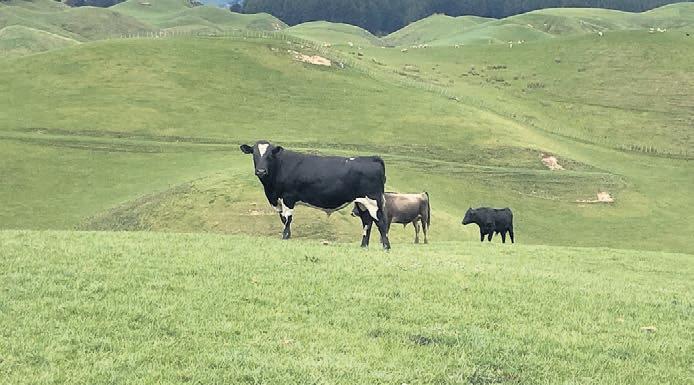




5+3 3+1 2+2
Tender closes 11.00am, Fri 16th Dec, 2022, 54-56 Kimbolton Road, Feilding
View By appointment
Web pb.co.nz/FR111952
Yvonne Forlong M 021 456 565 E yvonnef@pb.co.nz
Property Brokers Ltd Licensed REAA 2008 pb.co.nz Proud to be here 37
Pahiatua 672 Ruawhata Road
Auction
Ruawhata Dairies - 226 ha
Located under 10 minutes drive from Pahiatua, Ruawhata Dairies is a 226 ha dairy farm that is well suited to continue as an established dairy unit or a summer safe, support or finishing farm. Regularly high producing with last season 210,000 kgMS off a 180 ha platform, the property boasts superior soils, virtually all flat contour, modern pasture species, quality farm infrastructure and two dwellings. Improvements include a 54 bail rotary shed complete with a 500 cow feed pad and a good range of shedding. Dwellings include a large three bedroom main residence set in established grounds and a second three bedroom home nearby providing excellent on farm accommodation. Ruawhata Dairies will attract interest from across a range of agricultural sectors with it's high productive capability and quality infrastructure.
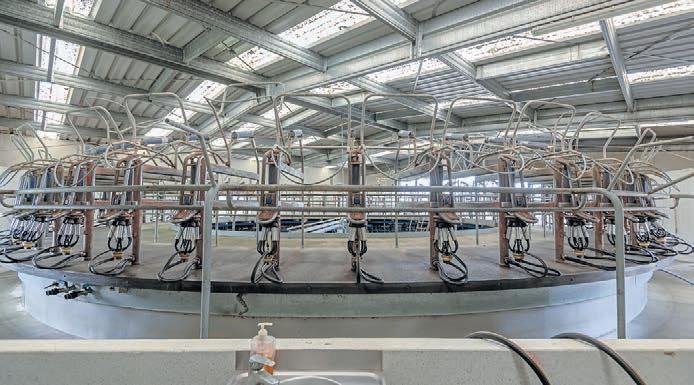

Auction 2.00pm, Thu 15th Dec, 2022, (unless sold prior), Bush Multisport Lounge Bar
View By appointment Web pb.co.nz/PR111895
Jared Brock M 027 449 5496 E jared@pb.co.nz
Sam McNair M 027 264 0002 E sam.mcnair@pb.co.nz

Jamie Smith
M 027 220 8311 E jamie.smith@pb.co.nz
Tender
Self-contained organic dairy - 360 ha in 5 titles

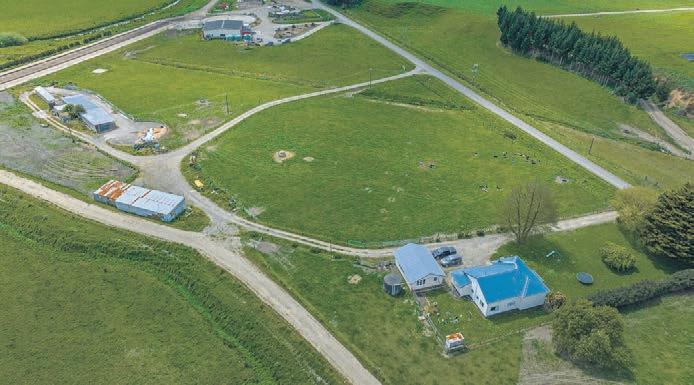

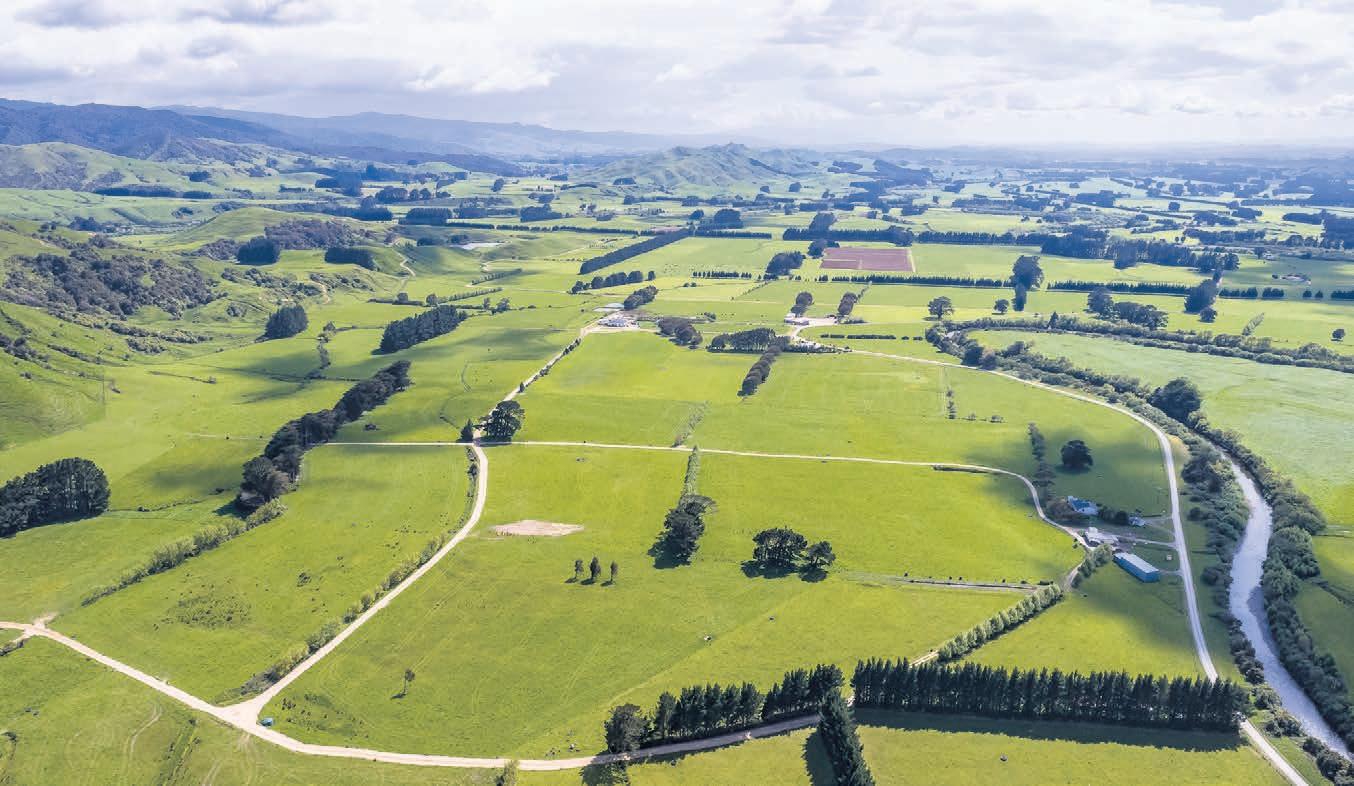
This well presented business with flexibility of purchase options is well located 11 km west of Eketahuna & within commuting distance to the Wairarapa and Manawatu. Featuring 321 ha in one block which includes 145 ha of virtually all flat platform, 34 ha of supplement country & 141 ha of easy hill providing support and beef fattening. 3 km from the dairy unit is 39 ha of flat support land utilised for harvesting supplements and further support. The centre piece of the main dairy unit is a fully automated rotary cowshed with superior technology which includes EID detection, automated drafting, heat detection, ACRs and Rumination monitoring. The dairy shed is well supported by a round yard, 500 cow feed pad, loafing pad and a good range of shedding to suit. Complimented with two homes, the main 4 bedroom, 2 bathroom home is suitable for an owner operator. This property provides a certified organic business with an existing consent providing for conventional farming practices if required.
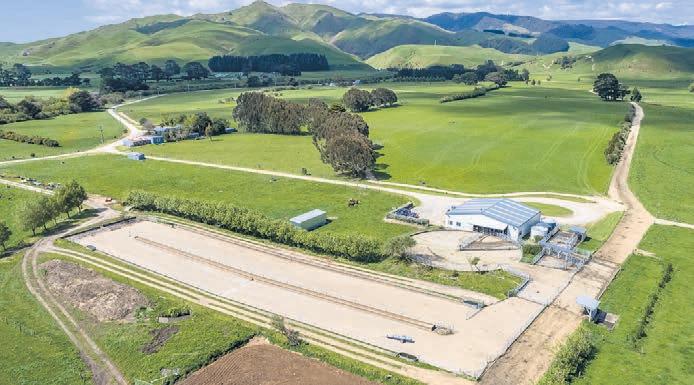
Tender closes 2.00pm, Wed 14th Dec, 2022, to be submitted to Property Brokers, 129 Main Street, Pahiatua
View By appointment Web pb.co.nz/PR105005
Jared Brock M 027 449 5496 E jared@pb.co.nz
Jamie Smith M 027 220 8311 E jamie.smith@pb.co.nz
Eketahuna 125 Larsen Road*
Property Brokers Ltd Licensed REAA 2008 | pb.co.nz Proud to be here 38
Pahiatua 1091 Kopikopiko Road
Tender
Waiwera Station - 674 ha
Well located just 26 km west of Pahiatua in a summer safe location and within commuting distance to the Manawatu or Wairarapa regions. The property offers great finishing capability with approximately half of the area easy country and of that about 200 ha suitable for cultivation. Currently operated as a sheep and beef breeding and finishing property, Waiwera has benefited from a long history of investment in fertiliser, fencing and pasture development. Three homes provide ample accommodation with the 4 bedroom main home being set in extensive grounds providing a superior main dwelling. A centrally located woolshed with covered yards (1,000 np) and cattle yards are well accessed by laneways and Kopikpiko Road. Further infrastructure includes two airstrips and bins, a second woolshed & ample shedding to complete. Originally 3 properties amalgamated consisting of 80 ha of bareland, 161 ha plus 3 bedroom home and 431 ha with the remaining infrastructure providing ample purchase options
Eketahuna 250 North Road
Tender
Tender closes 2.00pm, Thu 8th Dec, 2022, to be submitted to Property Brokers, 129 Main Street Pahiatua
View By appointment
Web pb.co.nz/PR109618
Jared Brock M 027 449 5496 E jared@pb.co.nz

Jamie Smith
M 027 220 8311 E jamie.smith@pb.co.nz
Dannevirke 1921 Weber Road
First farm opportunity - 63 ha
This well presented first farm opportunity is well located just 6.5 km from the township of Eketahuna and within commuting distance to the Wairarapa and Manawatu.


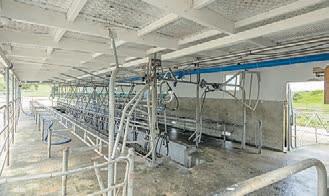
Currently operated as a smaller dairy farm with 125 MA cows milked for a three year average of just over 31,000 kgMS, the property is well suited to continue its current practice or de-convert to dairy support or finishing.
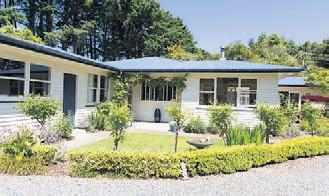
Farm infrastructure is of a superior nature which includes a 26 ASHB cowshed complete with rectangular yard, ample shedding and an upgraded effluent system with lined storage.
The property is completed with a sound three bedroom home on a separate record of title providing purchase options.
Tender closes 2.00pm, Thu 8th Dec, 2022, To be submitted to Property Brokers 129 Main Street, Pahiatua
View By appointment
Web pb.co.nz/PR109151








Jared Brock M 027 449 5496

Jamie Smith M 027 220 8311


Pekanui aesthetically appealing farm - 254 ha
Pekanui is located in the Tararua district and is known for its spectacular scenery. Just a little over 15 minutes from Dannevirke on Weber Road, this 254 ha property enjoys a balanced aspect that offers amazing views over the Weber District and out to the ocean.

Incorporating an excellent balance of farmland with quality soils, stands of native trees, stunning multiple freshwater creeks and limestone rock formations, this unique environment combines a sustainable balance of productive farming and nature. The contour is a mix of easy to medium and some steeper areas. The farm is well tracked and has a high standard of fencing throughout.
Tender closes 2.00pm, Thu 15th Dec, 2022, Property Brokers Ltd
4 Stanley Street, Dannevirke
View By appointment Web pb.co.nz/DR104636
Sam McNair M 027 264 0002
Jim Crispin M 027 717 8862
Tararua
Tender
Property Brokers Ltd Licensed REAA 2008 | pb.co.nz Proud to be here 39
Waipahi 893 Landslip Road



Perfection at its best

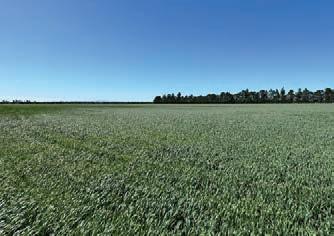
Perfection at its best
Two adjoining dairy grazing properties consisting of 41 ha dryland property with 4-bedroom house plus a range of farm buildings, complemented by a 58 ha spray irrigated bareland block. These properties are located near Hororata in Central Canterbury and would be an excellent feed factory or grazing unit for existing operators looking for security around their grazing and feed requirements, or a first farm option for those looking to enter the market.

The 58 ha block has two lateral irrigators with water supplied from Central Plains Water Scheme (stage 1) providing reliability of production and support with environmental management and compliance. The properties are offered for sale on an individual basis or as a combined package.



276.66 hectares of pure perfection. Dairy heifer grazing unit. There has been a lot of effort and thought put into the development of this property. It is subdivided into 61 paddocks with four smaller holding paddocks, most paddocks have multiple water troughs that are serviced by a 40mm mainline via pressure and gravity systems that has a Dosatron. The infrastructure is exceptional, amazing Te Pari cattle yards all concreted and covered (40m x 24m) with washdown, T30 crush and double loading ramp. Large concrete floor workshop, implement shed (30m x 12m) and plenty of other storage/hay sheds. Farm winters 900 R1 dairy heifers. Large family home has been completely renovated and redecorated.
253 Bute Road
Tender closes 3.00pm, Mon 12th Dec, 2022, To be submitted to Property Brokers 68 South Terrace, Darfield

For Sale $6,650,000 + GST (if any)
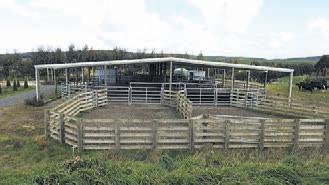
View By appointment
View By appointment
Web pb.co.nz/GOR110631





Web pb.co.nz/DFR108834

pb.co.nz/DFR111195
Mark Wilson M 027 491 7078
Gareth Cox M 021 250 9714
Matt Collier M 027 205 6626

Wayne Clarke M 027 432 5768

276.66 ha of pure perfection. Dairy heifer grazing unit. There has been a lot of effort and thought put into the development of this property. It is subdivided into 61 paddocks with four smaller holding paddocks, most paddocks have multiple water troughs that are serviced by a 40 mm mainline via pressure and gravity systems that has a Dosatron. The infrastructure is exceptional, amazing Te Pari cattle yards all concreted and covered (40 m x 24 m) with washdown, T30 crush and double loading ramp. Large concrete floor workshop, implement shed (30 m x 12 m) and plenty of other storage/hay sheds. Farm winters 900 R1 dairy heifers. Large family home has been completely renovated and redecorated.
For Sale $6,650,000 + GST (if any)
View By appointment
Web pb.co.nz/GOR110631
Mark Wilson M 027 491 7078
Wayne Clarke M 027 432 5768
Whakarora - 545 ha - Dairy support and finishing
Well located just 38 km from Masterton and 13 km to Tinui Village is Whakarora, currently operated as a large scale dairy support and beef fattening unit. The property has been through an extensive development program over the last 8 years with investment in fertility, subdivision, access and cultivation. With over 370 ha having been cultivated and currently in improved pastures, a further 80 ha is estimated as being suitable for cultivation providing further opportunity. The farming improvements are well suited to the current farming practice which include a metalled central lane providing all weather access, a large set of cattle yards at the entrance to the property as well as a smaller set in the centre of the property. Further infrastructure includes an airstrip and bin, older woolshed and an arrangement of shedding. Accommodation is well provided for with a 4 bedroom home and a cottage. Whakarora provides a turn key finishing or dairy support property in a sought after location.
Tender closes 4.00pm, Tue 29th Nov, 2022, to be submitted to NZR, First Floor, 16 Perry Street, Masterton 5810

View By appointment
Web pb.co.nz/MR107543
Hororata 69 Leaches Road & Te Pirita Road
Tender
Strategic Dairy Grazing – 99ha
Waipahi 893 Landslip Road
Property Brokers Ltd Licensed REAA 2008 | pb.co.nz
Property Brokers Ltd Licensed REAA 2008 | pb.co.nz
Tinui
Property Brokers Ltd Licensed REAA 2008 pb.co.nz
Jared Brock M 027 449 5496 E jared@pb.co.nz
NZR Real Estate Ltd Licensed REAA 2008 40 FARMERS WEEKLY – farmersweekly.co.nz – November 21, 2022 Real Estate 40
Dave Hutchison M 027 286 9034 E dave@nzr.nz Blair Stevens M 027 527 7007 E blair@nzr.nz Jared Brock M 027 449 5496 E jared@pb.co.nz nzr.nz/RX3423051
One of NZ's most distinguished Stations
Waipaoa Station is 3,732ha (STS) is for sale by way of International Tender and provides the opportunity to acquire one of the most exemplary sheep and beef properties in NZ. The Station may be considered in its entirety, or as 4 individual operations, each of which contains a multitude of very favourable farming attributes and is set up to deliver superior farming performance and results. Waipaoa comprises an abundance of flat land, the heart of which is 125ha under centre pivot irrigation. The farm's easy-rolling contour has excellent water infrastructure, and outstanding fertility throughout, with the rear of the farm being home to the esteemed Waipaoa Farm Cadet Training Trust. Years of extensive investment, quality contour, climate, and focus on productive performance, has ensured efficient farming practices and has seen farming operations thrive. bayleys.co.nz/2752753



NEW LISTING Waipaoa Station Whatatutu, Gisborne 3,732.8ha International Tender (unless sold prior) Closing
Wed
Feb
10
View
BOUSFIELD
UNDER THE REA ACT 2008
bayleys.co.nz
4pm,
15
2023
Reads Quay, Gisborne
by appointment Simon Bousfield 027 665 8778 simon.bousfield@bayleys.co.nz Stephen Thomson 027 450 6531 stephen.thomson@bayleys.co.nz
MACPHERSON LTD, BAYLEYS,LICENSED
41
Award winning farm with development opportunity
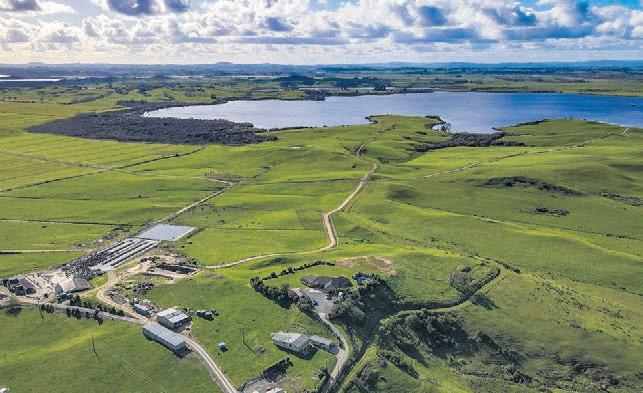

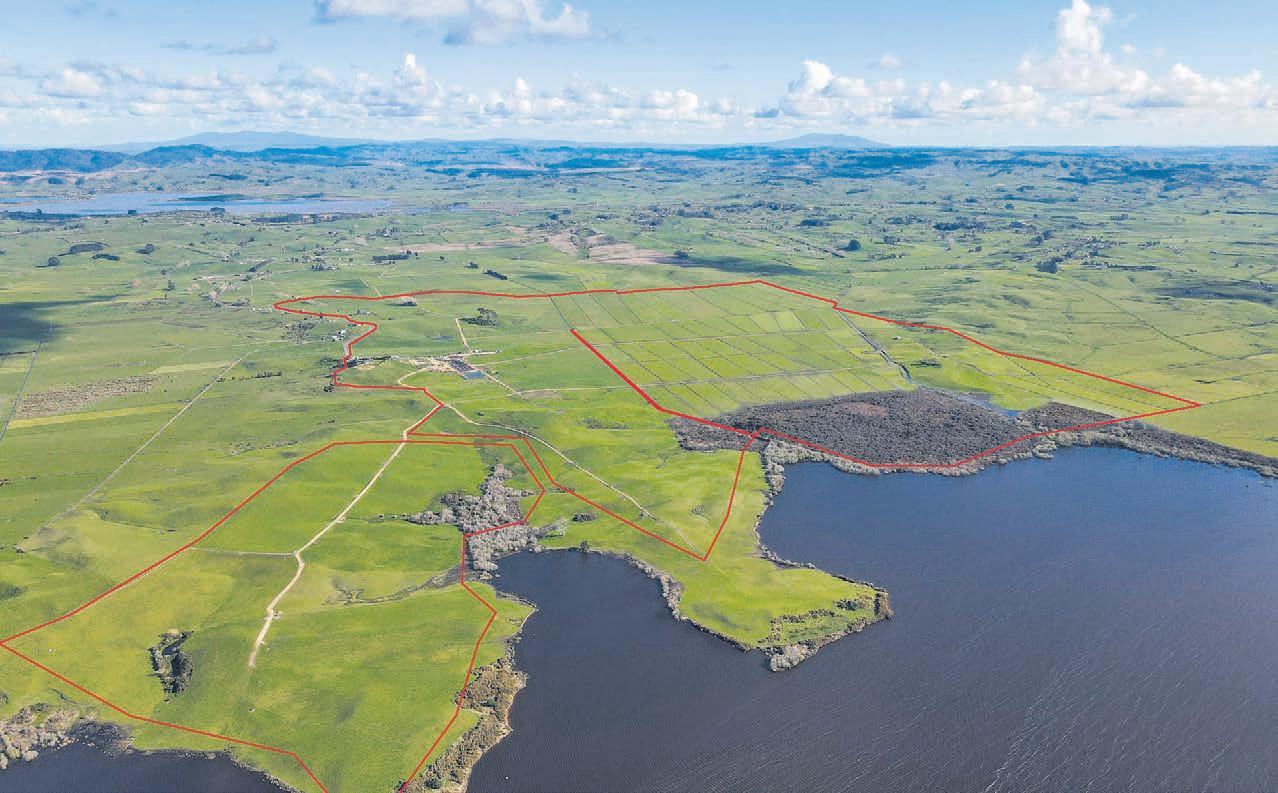
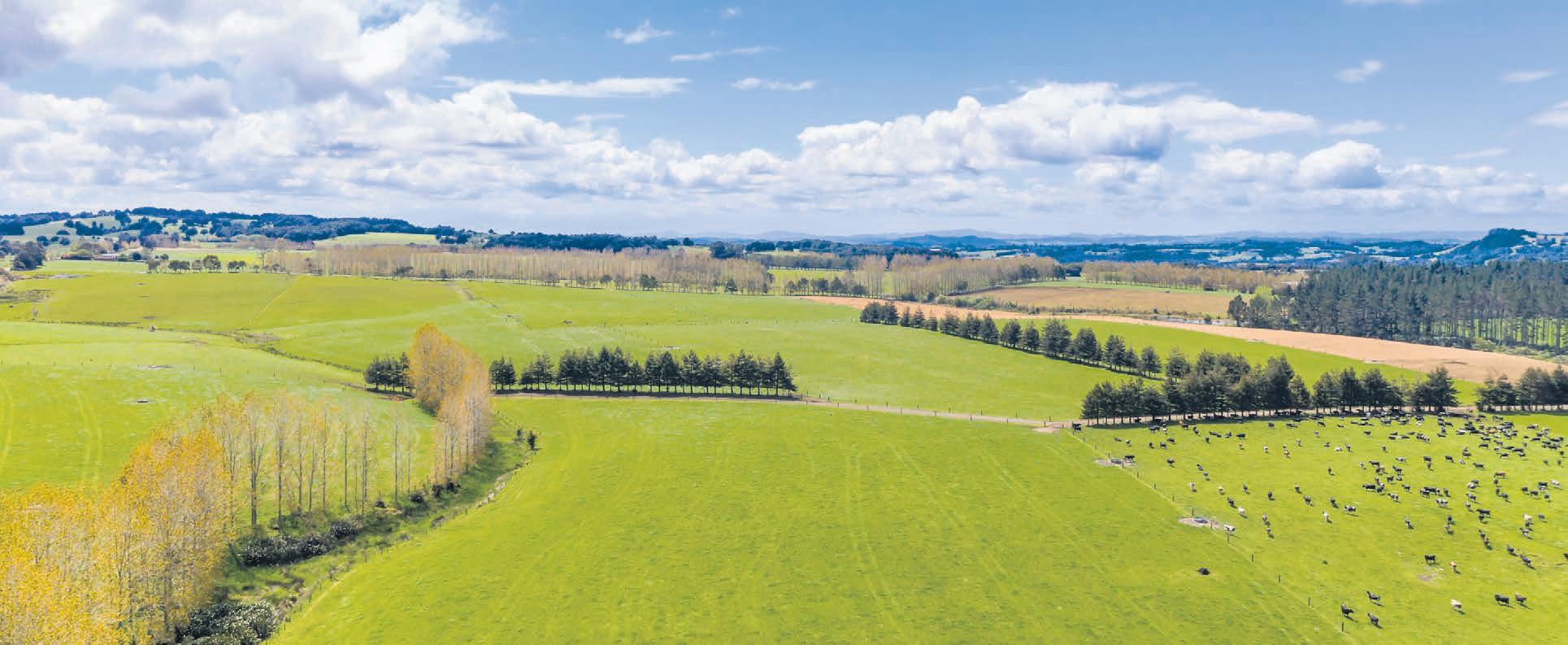
Tender
Closing 4pm, Wed 7 Dec 2022
30 Gaunt Street, Auckland Duncan Ross 021 663 567 duncan.ross@bayleys.co.nz
Craig De Goldi 027 287 7544 craig.degoldi@bayleys.co.nz
Tender
Closing 2pm, Tue 13 Dec 2022
96 Ulster Street,
bayleys.co.nz Okaihau 910 State Highway 1 436ha
(will not be sold prior)
REAL ESTATE LTD, AUCKLAND CENTRAL,LICENSED UNDER THE REA ACT 2008 MACKYS REAL ESTATE LTD, BAYLEYS,LICENSED UNDER THE REA ACT 2008
BAYLEYS
New
premier dairy
with land development
20
Kerikeri
436
multi
dairy
dairy
excellent infrastructure, volcanic
and
us for
Boundary lines are indicative only
340
A rare opportunity to own one of
Zealand’s
farms
opportunity.
mins from
in Central Bay of Islands is the
ha
award winning
farm. A three-year average production of 637,000kgMS from a high performing split calving herd (1,150 m/a cows). This outstanding System Five
unit benefits from
soils
exemplary fertiliser history. Topping it off are consents for an 18 lot and 3 lot subdivision, providing future land banking opportunity. Contact
more information A rare opportunity to own one of New Zealand's premier dairy farms with land development opportunity bayleys.co.nz/1695060
Huntly
Pukekapia Road 277.1453ha 4 2
(unless sold prior)
Hamilton View by appointment Peter Kelly 027 432 4278 peter.kelly@bayleys.co.nz Angus Kelly 021 165 5031 angus.kelly@bayleys.co.nz SUCCESS REALTY LIMITED, BAYLEYS,LICENSED UNDER THE REA ACT 2008
42
Lakeside dairy operation with purchase options This strategic opportunity offers expansive lake views, multiple titles and flat to gentle rolling contour. The farm encompasses 277ha (more or less) in four titles and currently runs on an autumn calving system supplying Fonterra with production upto 280,000kgMS. Improvements include a modern 40-bail rotary with meal feeding system and 600 cow feed pad, 90 day effluent storage pond and six water bores and town water at the gate. With clay and peat soils the healthy pastures have traditionally allowed feed to be grown on the farm. Accommodation is well catered for with four dwellings with the main modern homestead set in an elevated position overlooking Lake Rotongaro. Central to major cities with everyday conveniences available 12km to Huntly. A well-equipped farm with great production, quality infrastructure and titles at your disposal. bayleys.co.nz/2313867
Rare sheep milking opportunity
Be the first to purchase an established sheep milking operation only 15 minutes from Cambridge in the popular Te Miro district. In the second season of milking, the hard work has been done and systems are in place to reap the rewards of this relatively new and growing industry. Currently supplying Maui with over 20,800kgMS in the first season it is easy to do the numbers on this property. Infrastructure includes a 36 aside herringbone dairy with automatic cup removers, three-bay half round barn, two lamb rearing sheds and an office room. The farm has excellent bore water, which is reticulated to 18 paddocks. With a wonderful village community, Te Miro School just down the road and the popular mountain bike park eight km away, the district has much to offer. There are several outstanding building sites to build your dream home. bayleys.co.nz/2313996

NEW LISTING
North Wairarapa - Bareland Forestry Options

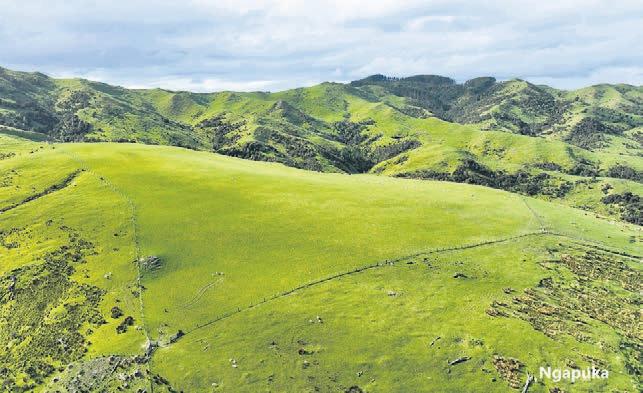


These two blocks present an excellent option to secure well-located, very accessible land suitable for establishing a first-rotation forest. The Te Hoe block at 379ha (subject to survey) is located 50kms and 40 minutes drive north of Masterton. This block is made up of clean medium hill country with proposed right-of-way access through the neighbouring farm. There is approximately 10ha of mature native bush and 9ha of untendered pine trees within the proposed block. The Ngapuka block is located a further 12kms or 15 minutes drive up Castle Hill Road and is 585ha (subject to survey) boasting a land class made up of easy rolling to medium hill country. There is existing forestry roading in place. The options here are clear providing a great opportunity to enter the forestry market or expand an existing operation in a proven area. bayleys.co.nz/3151126
33.081ha
Tender (unless sold prior)
Closing 2pm, Thu 8 Dec 2022
Lakewood Block C, Unit 1, 36 Lake Street, Cambridge View Wed 12-1pm

Dave Kilbride 027 436 7082 dave.kilbride@bayleys.co.nz
SUCCESS REALTY LIMITED, BAYLEYS,LICENSED UNDER THE REA ACT 2008
Tender (unless sold prior)
Closing 4pm, Wed 21 Dec 2022
186 Chapel Street, Masterton View by appointment
Simon Clinton-Baker 021 953 909
Andrew Smith 027 760 8208 Lindsay Watts 027 246 2542
bayleys.co.nz
Boundary lines are indicative only
Cambridge 928 Maungakawa Road
Alfredton 1632 and 464 Castle Hill Road
LICENSED UNDER THE REA ACT 2008
EASTERN REALTY (WAIRARAPA) LTD, BAYLEYS,
43
Taupiri
Tidy farm unit - proximity to Taupiri


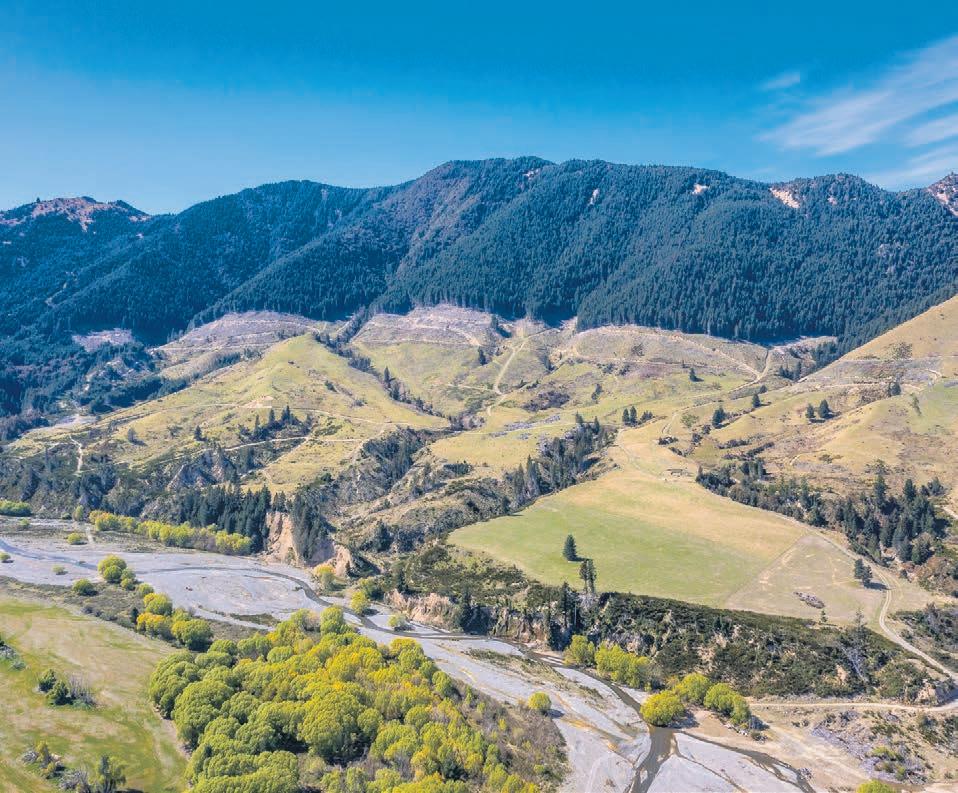

The property is contained within one title, predominantly flat to rolling in contour and well-appointed with farming infrastructure including a 24 ASHB, 300 cow capacity yard, and a range of implement, calf and storage shedding all handy to the dairy.


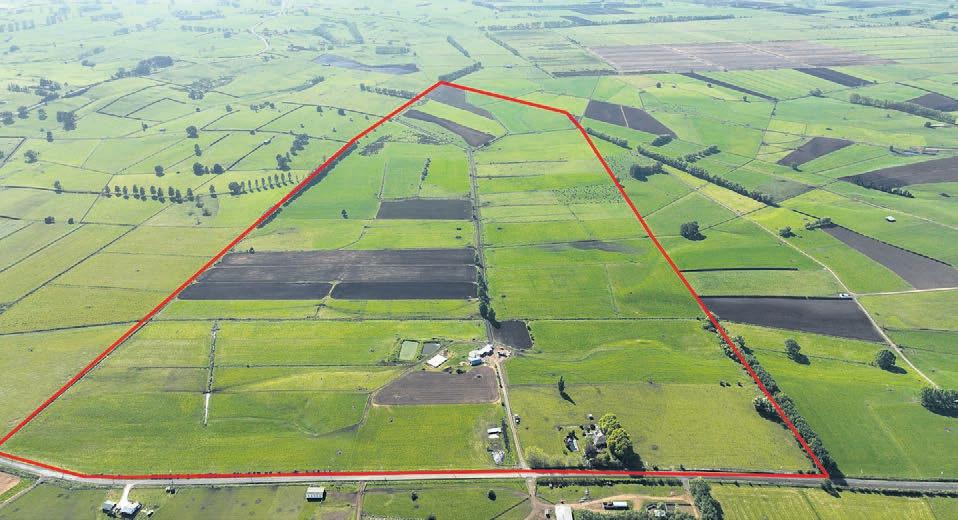


Average production supplied to Fonterra is 112,420kgMS from the 330 mixed age herd. Maize, chicory and grass silage are made on farm with water sourced from two reliable bore that gravity feed to the shed and is then reticulated around the farm. The travelling irrigator with five hydrants is an effective setup covering 25ha.
The healthy pastures reflect regular fertilizer applications with premium peat soils assuring consistent production. Both Huntly and Te Kauwhata are approximately 20 minutes' drive. bayleys.co.nz/2314010
100ha
Tender (unless sold prior)
Closing 3pm, Tue 13 Dec 2022
96 Ulster Street, Hamilton View 10.30-11.30am Mon 21 Nov, Mon 21 Nov, Mon 28 Nov & Mon 28 Nov Karl Davis 0508 83 83 83 karl.davis@bayleys.co.nz Peter Kelly 027 432 4278 peter.kelly@bayleys.co.nz
SUCCESS REALTY LIMITED, BAYLEYS, LICENSED UNDER THE REA ACT 2008

Boundary
Piopio
North
Waiau dairy support
16.95ha
275.5191ha 3
View by appointment
Ben Turner 027 530 1400 ben.turner@bayleys.co.nz
bayleys.co.nz/5519751
bayleys.co.nz
Boundary lines are indicative only
740 Rutherfurd Road
lines are indicative only
86 Mairoa Road
Auction (unless sold prior) 11am, Thu 1 Dec 2022 96 Ulster Street, Hamilton View by appointment Gary Scott 027 484 4933 gary.scott@bayleys.co.nz SUCCESS REALTY LIMITED, BAYLEYS, LICENSED UNDER THE REA ACT 2008
86
17 easy bare hectares (42ac) (more or less) just waiting for you to put your stamp on it. Well watered with troughs in every paddock by gravity feed from a spring, which is pumped to a holding tank. There is plenty of contour in the 22 paddocks suitable to make your own hay. Good fertiliser history and has been spread according to Hills Laboratory tests. The property is located almost on the Piopio boundary and has building sites, which affords magnificent valley views.
Hanmer Springs 278 Hossack Road 438.57ha Deadline Sale (unless sold prior) 12pm, Fri 2 Dec 2022 3 Deans Avenue, Chch Phone for viewing times Ben Turner 027 530 1400 ben.turner@bayleys.co.nz Peter Foley 021 754 737 peter.foley@bayleys.co.nz WHALAN AND PARTNERS LTD, BAYLEYS, LICENSED UNDER THE REA ACT 2008 Hill
hunting or holidaying In a sunny north-facing spot with glorious views overlooking the Hanmer Basin, this attractive 438.5700 hectare (more or less) bare land property is currently used for livestock farming, forestry, hunting and recreation. Located a short drive from the Hanmer township. The front of the property is subdivided into easy paddocks, boasting large areas of grazeable land with forestry on the higher slopes.
Suddenly here it is...
Mairoa Road, Piopio
bayleys.co.nz/2313946
country,
With several prime building sites on offer, building a home or weekend retreat is an excellent option many buyers may consider. The local area invites the adventurous to indulge a love of hunting, fishing, jet boating, cycling or hiking and the excellent cafes, restaurants and local shopping sweeten the deal.
Canterbury 132 River Road, Waiau
Deadline Sale (unless sold prior) 12pm, Thu 1 Dec 2022 3 Deans Avenue, Chch
Peter Foley 021 754 737 peter.foley@bayleys.co.nz WHALAN AND PARTNERS LTD, BAYLEYS, LICENSED UNDER THE REA ACT 2008
Well-located property over looking picturesque Waiau, offering farming performance and a serene country lifestyle. 275.5191 hectares (more or less) with a solid history of dairy support, wintering and fattening. This predominantly flat to rolling contoured farm is exceptionally well laid out with good accessibility and a central lane for ease of management.
the continued success is good quality soil with great water holding capacity and an excellent level of re-grassing.
positioned for sun and views with a beautiful outlook, the home offers a cosy base to enjoy family life. Situated 15 minutes from the township of Rotherham and 25 minutes from Culverden, the essentials are on hand within a short distance.
Underpinning
Beautifully
44
bayleys.co.nz/5519793
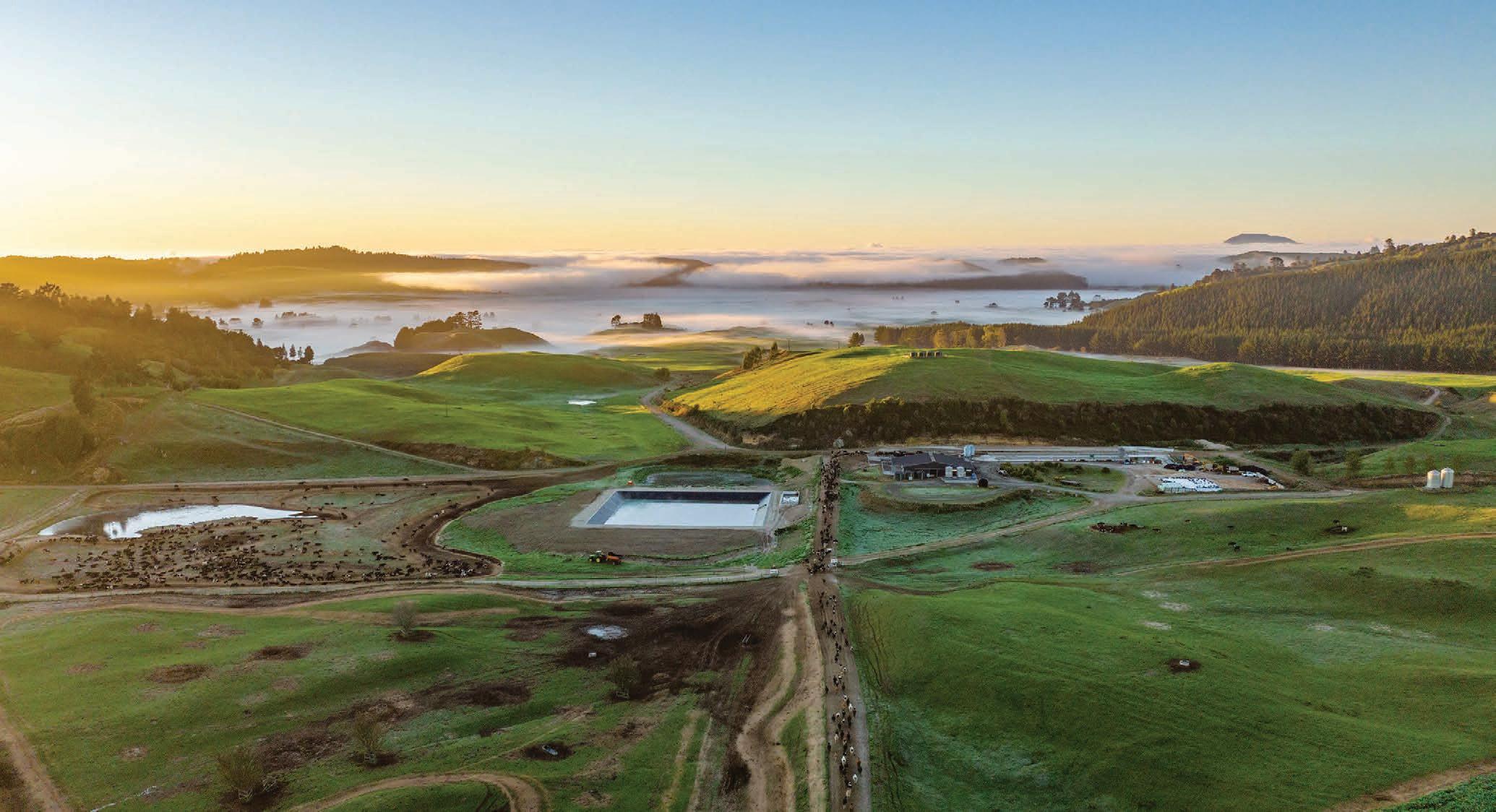


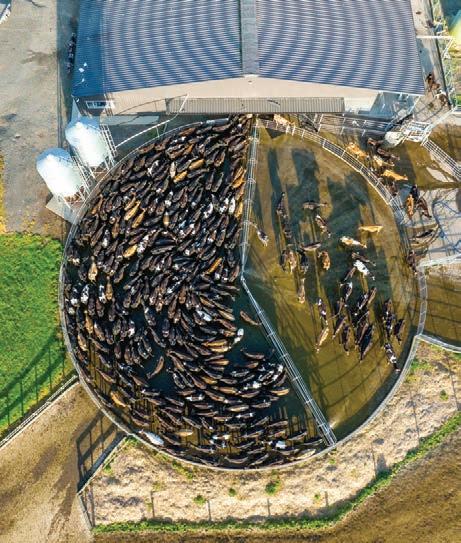

45
Oxford 1 Waimakariri Gorge Road
Lifestyle overdrive
4 2 2
Deadline Sale (unless sold prior)
1pm, Wed 7 Dec 2022
251-253 High Street, Rangiora View by appointment Mark Pringle 027 433 3334 mark.pringle@bayleys.co.nz Ben Turner 027 530 1400 ben.turner@bayleys.co.nz Peter Foley 021 754 737 peter.foley@bayleys.co.nz WHALAN AND PARTNERS LTD, BAYLEYS, LICENSED UNDER THE REA ACT 2008
Tarras 83 Oliver Road
Oliver Road Farm
This 167.8ha (approx) high producing farm is offered for sale with the option to purchase as a whole or in part. Lying between Tarras- Cromwell Road and the Clutha River, some 20km north of Cromwell and 8km south of Tarras township. The farms contour is flat to gently undulating and formed on several low terraces stepping back up from the river. Two large pivot irrigators cover approximately 90% of the property with its own impressive water consent for 110 litres per second until 2048. The property has been carefully redeveloped with irrigation, cultivation, and resowing of the farm. Utilisation of the farm is currently for fattening beef, winter feed, carrot seed production. bayleys.co.nz/226401
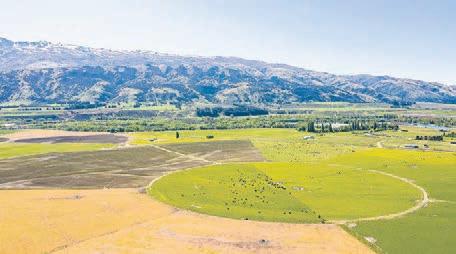



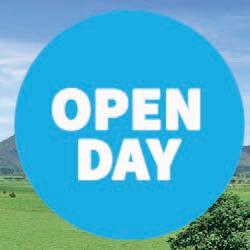



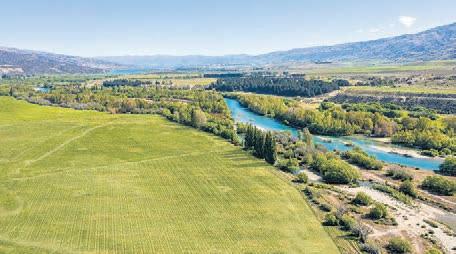
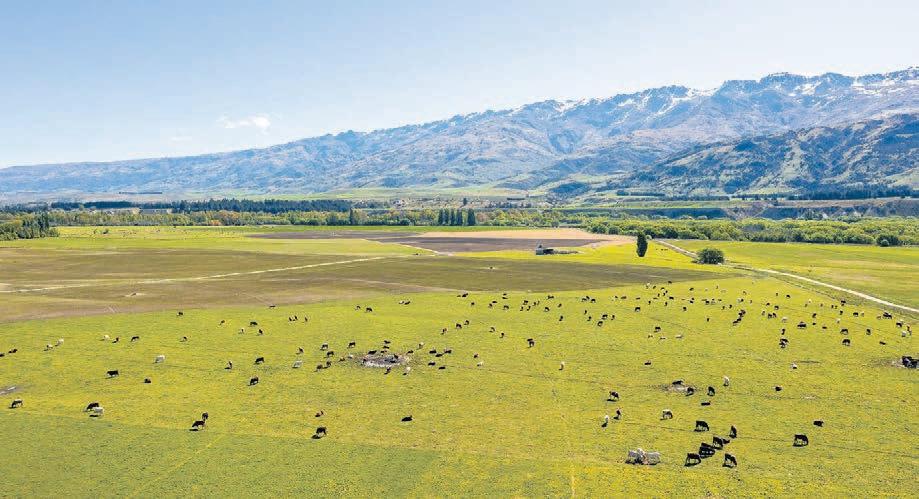
167.8862ha 3
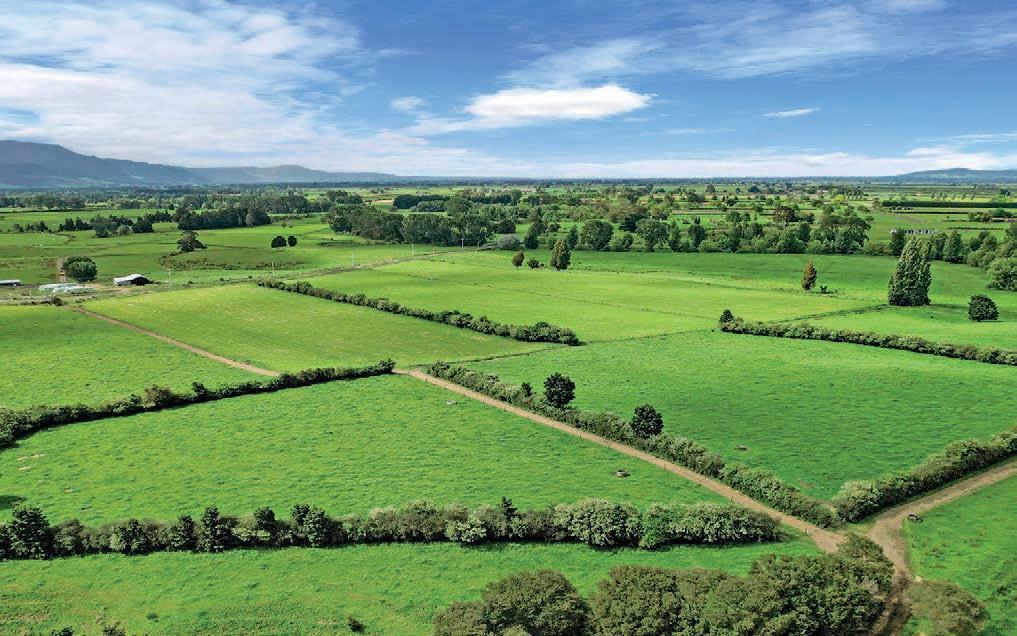




For Sale by Deadline Private Treaty (unless sold prior)
1pm, Thu 8 Dec 2022 62 Ardmore Street, Wanaka View by appointment Woodrow Ross 027 527 9690 woodrow.ross@bayleys.co.nz Doug MacGillivray 027 433 9520 doug.macgillivray@bayleys.co.nz

Kevin Deane Real Estate
Taupiri 349 Uapoto Road
87.6549ha Tick all the Boxes

This well appointed 87.6549ha Dairy unit offers you a rare opportunity to purchase within the highly regarded Taupiri location.



Two tidy homes, a great range of farm infrastructure and production last year of 105,200kgms.
Our retiring sellers are ready to go – inspect without delay.
Treaty
9
at 12:00pm View Tuesday 22, 29 Nov, 6 Dec at 11.00am - 12.00pm www.harcourts.co.nz/ML4663
Kevin Deane M 021 970 902
Mark Ingram M 027 495 5941
Te Aroha 208 Te Aroha-Gordon Road 360ha
Bigger than Mt Te Aroha
Well almost…. This 360ha dairy unit sits almost under the mountain on the very edge of town and certainly gives you scope and options. With some 19 Certificates of Title the Owners are prepared to consider offers for the property in its entirety or as smaller options. We heartily recommend your inspection at your earliest convenience be you looking at a dairy, dry stock or lifestyle options.
Tender Friday 16 December at 12:00pm View Thursday 24 Nov, 1, 8, 15 Dec at 11:00am-1:00pm www.harcourts.co.nz
Kevin Deane M 021 970 902
Kevin Cowley M 027 240 7676
Boundary lines are indicative only
Boundary lines are indicative only
spectacular 67.53 hectare parcel offers an unparalleled farming and lifestyle opportunity
a superbly renovated character villa with exceptional off-grid accommodation, this property is also armed with battery storage and a diesel generator backup. There is also a studio unit on the second floor of the American style barn
farm is entirely secured by deer fencing and features versatile soils, a vast selection of outbuildings while extensive shelter belts and mature trees add another layer of privacy
City is within remarkably easy reach, being less than 40 minutes away by car
5519527
•This
•Offering
•The
•Christchurch
bayleys.co.nz/
MAT ANDREWS REAL ESTATE LTD, BAYLEYS, LICENSED REAA 2008 QUEENSTOWN & SOUTHERN NZ REALTY LTD, BAYLEYS,LICENSED REAA 2008
Deadline
Friday
December 2022
Licensed Agent REAA 2008
Kevin Deane Real Estate
Licensed Agent REAA 2008 46 FARMERS WEEKLY – farmersweekly.co.nz – November 21, 2022 Real Estate 46




47



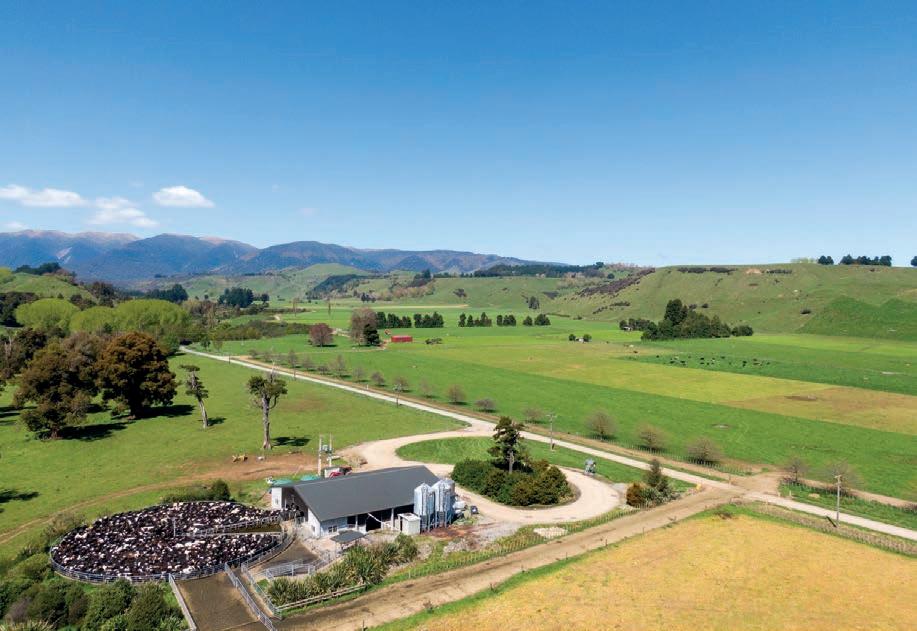



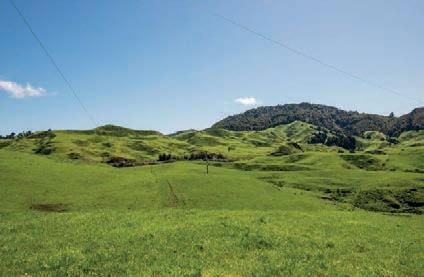


48 FARMERS WEEKLY – farmersweekly.co.nz – November 21, 2022 Real Estate 48
EXCLUSIVE
NEW LISTING
TENDER
PIOPIO, WAITOMO 1151 Mairoa Road
Milk It or Graze It
296 hectares (more or less) currently being a functioning dairy farm but at this value the option to have an excellent set up cattle grazing property makes this a must view farm. On the back of a very dry 2022 summer and autumn, this farm wintered 525 mixed aged cows, 70 yearling heifers, 20 yearling bulls and 20 R2 bulls. Of course, it has fertility, races, good water system and is fenced into approximately 60 paddocks, with a 60 bale rotary and two calf sheds - six and ten bay. Main four bedroom dwelling and a cottage. Looking for a well set up grazing farm with size - this could well be IT.
pggwre.co.nz/TEK36190
Peter Wylie




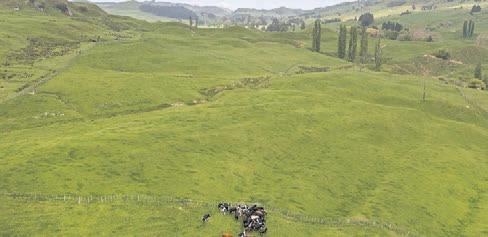
$6M Plus GST (if any) VIEW By Appointment Only E pwylie@pggwrightson.co.nz M 027 473 5855

TE MAPARA, WAITOMO 758 SH3
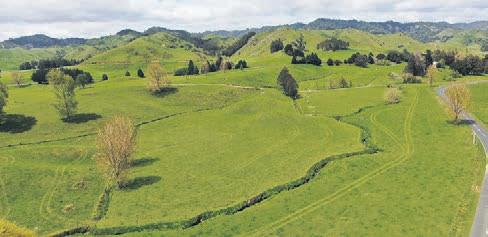


100% Cattle Grazing With Location 260 hectares (more or less) of well located cattle grazing contour. This well established property is coming to the market for the first time since 1920. In that time the vendors have run a very easy to manage operation. State Highway 3 divides the property, and access is through a stock and motorbike underpass. Unseen from the road is terrace, fertile country that is the feature of the farm. It has an excellent water system and is reticulated through a majority of the farm. Simple, efficient system in place, no silage made - grass only, great results for decades using this farm practice.
pggwre.co.nz/TEK36814
(Unless Sold By Private Treaty)
Closes 11.00am, Fri 16 December
PGGWRE, 57 Rora St, Te Kuiti


VIEW 10.00-12.00pm Tuesday 22 & 29 November
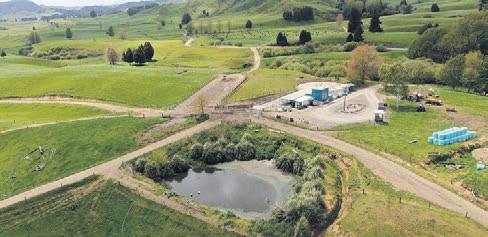

pwylie@pggwrightson.co.nz

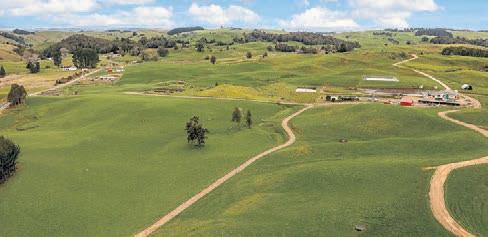



ARIA, WAITOMO
Pukeuha Road Large Dairy Enterprise - Aria 347ha Large-scale, easy contoured land package. This property is 347ha (324ha effective, more or less) with contour being a mixture of flats to rolling hills and some medium hill along with areas of native bush. Located 6km east of Aria, 16km southeast of Piopio and 40km south of Te Kuiti.
PGG
the
Wrightson Real Estate Limited, licensed under REAA 2008 Helping grow
country
pggwre.co.nz/TEK36911
An excellent standard of farm infrastructure in terms of laneways, fencing, effluent disposal, calf rearing sheds etc. Modern 54-bail rotary cow shed, built in 2015. The property is five titles and includes four dwellings. Improving pasture species has been priority with pastures continuing to be renewed annually. $8.25M Plus GST (if any) VIEW By Appointment Only E tony.foreman@pggwrightson.co.nz M 027 654 7434 Tony Foreman E pwylie@pggwrightson.co.nz B 07 878 0265 M 027 473 5855 Peter Wylie pggwre.co.nz/TEK36946 EXCLUSIVE ARIA, WAITOMO 967 Ohura Road Productive Land - Aria 217ha • Self-contained, easy contoured dairy farm with room to improve the already high ROI 217ha, 155ha platform, 60ha runoff Production-5yr average 95,000MS (system 2) • 26 ASHB & various other farm buildings set up for calf rearing etc • Platform re-grassed over the last 5 years Soil pH levels ranging between 5.5 and 5.9. Olsen P levels range from 33-65 Held within five titles which include two dwellings $5.1M Plus GST (if any) VIEW By Appointment Only E tony.foreman@pggwrightson.co.nz M 027 654 7434 Tony Foreman E pwylie@pggwrightson.co.nz B 07 878 0265 M 027 473 5855 Peter Wylie For more great rural listings, visit www.pggwre.co.nz Helping grow the country www.pggwre.co.nz PGG Wrightson Real Estate Limited, licensed under the REAA 2008 NZ’s leading rural real estate company RURAL | LIFESTYLE | RESIDENTIAL 49
E
M 027 473 5855 Peter Wylie
EXCLUSIVE
24
PIARERE, KARAPIRO 5865 SH 29
Drystock With Location and Potential Situated in the Hinuera Valley, this 141 hectare (more or less) dry stock property is perfectly located, within close proximity to Cambridge, Tirau and Matamata. The property has been faithfully farmed in the same family for over 60 years, being originally a sheep farm. Currently running as a dairy support, beef fattening and crop production unit on fertile Tirau Ash soils. The main homestead is a two double bedroom home built in the early 1900s. The other three-bedroom home is currently tenanted.
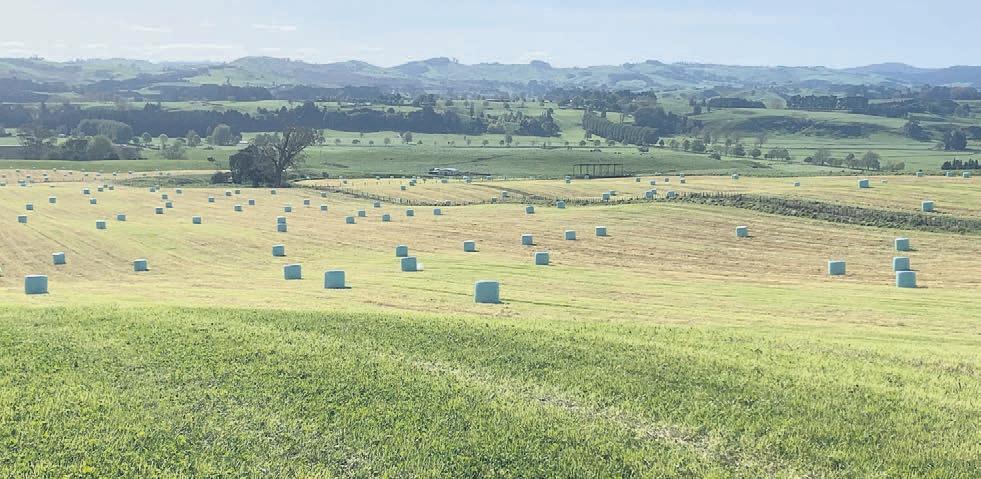


pggwre.co.nz/MAT36825

TENDER
(Unless Sold By Private Treaty)
Closes 4.00pm, Wed 7 Dec PGGWRE, 72 Firth Street, Matamata
VIEW By Appointment Only


EXCLUSIVE
Trevor Kenny
E trevor.kenny@pggwrightson.co.nz M 021 791 643
HAAST, WEST COAST 219 Turnbull Road

Haast Haven

879ha Subject to Survey (STS) plus grazing concession. Farmers and recreationalists, or those that desire to get away from the crowds, here is a rare chance to secure a block in one of NZs best hideaways. The farm of 556ha (STS) with modern home is mostly river flats and adjoins the Turnbull River. The second block of 323ha bounds the Okuru river and Aspiring National Park. Boundless recreational opportunities exist, farming, lifestyle, or build your hideaway in seclusion. This easy-care farming business is genuinely for sale. Option to purchase the two blocks separately considered
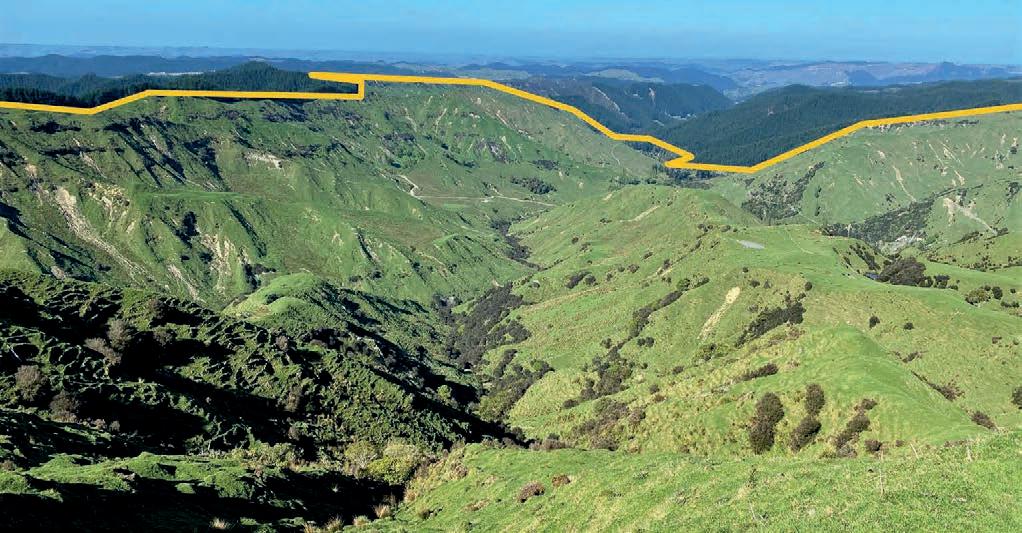


pggwre.co.nz/CRO36785
3 2 4
DEADLINE PRIVATE TREATY
Plus GST (if any) Unless Sold Prior Closes 1.00pm, 15 December PGG Wrightson, Cromwell
VIEW By Appointment Only
Kurt Snook
E Kurt.Snook@pggwrightson.co.nz M 027 256 0449
Helping grow the
PGG Wrightson Real Estate Limited, licensed under REAA 2008
country
FINAL NOTICE
RURAL | LIFESTYLE | RESIDENTIAL Arotahi Agribusiness Limited, Licensed Real Estate Agent REA Act Deadline Offers: Thursday 15 December 2022 at 4pm (NZDT)**
a quality landholding. *Approximately Deadline Offers: Thursday 15 December 2022 at 4pm (NZDT)** Pukeokahu & Makino comprise of two non-contiguous properties located near the Ruahine Forest Park in the Rangitīkei District. The Pukeokahu block (north) and Makino block (south) are held in common ownership and are currently run as drystock grazing units. The properties predominantly consist of clean hill country with areas recently established Mānuka and Pinus radiata (not yet registered in ETS). + ETS application for 169ha* submitted; +
+
+
+
+
+
+
+ High rainfall area of
plus per
+
+ This
available for sale. + 592ha* combined freehold area
+
+
Wyatt Johnston +64 27 815 1303 Chan Singh +64 27 767 7113 Jeremy Keating +64 21 461 210 Wyatt Johnston +64 27 815 1303 Boundary lines are approximate only. Boundary lines are approximate only. PUKEOKAHU & MAKINO Taihape Manawatū-Whanganui TWO BLOCKS AVAILABLE TOGETHER OR INDIVIDUALLY CREEK ROAD Mangamahu Valley Manawatū-Whanganui LARGE FARM LANDHOLDING IN TIGHTLY HELD AREA FOR SALE **Unless sold prior. 50 FARMERS WEEKLY – farmersweekly.co.nz – November 21, 2022 Real Estate 50
Containing approximately 1,599ha* of freehold land, Creek Road provides an exciting opportunity to secure a large, well-maintained landholding in the tightly held Mangamahu Valley. A summer moist, moderately steep to steep hill country farm, Creek Road has been well maintained and improved by the owners over nearly three decades, with ongoing investment in infrastructure and astute farm management leading to the development of
Managers cottage, 6-stand woolshed, covered yards (2,000NP), satellite and docking yards;
This farm land is available for sale.
1,599ha* freehold land;
1,347ha* effective;
10,440su* (7.75su/ha);
181ha* Pinus radiata (2022);
93ha* native and regenerating bush;
1,200mm*
annum;
Ability to purchase together or individually;
farm land is
(subject to survey);
118ha* Mānuka, 113ha* Pinus radiata;
Balance of land suitable for grazing or afforestation;

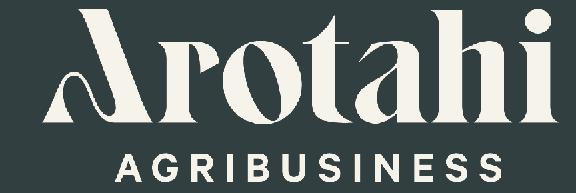


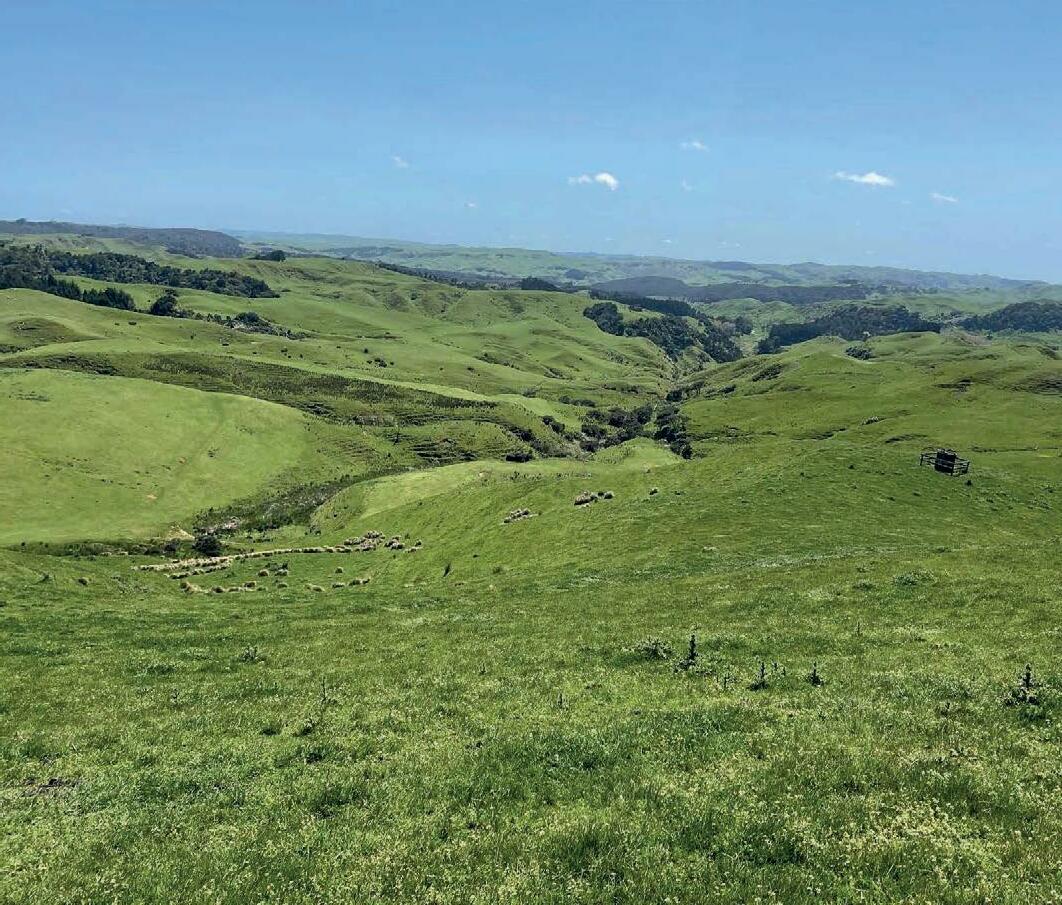
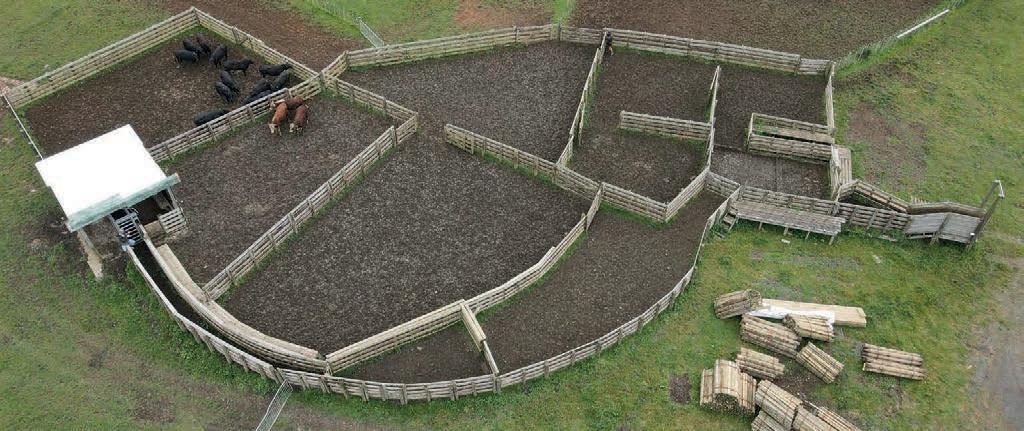
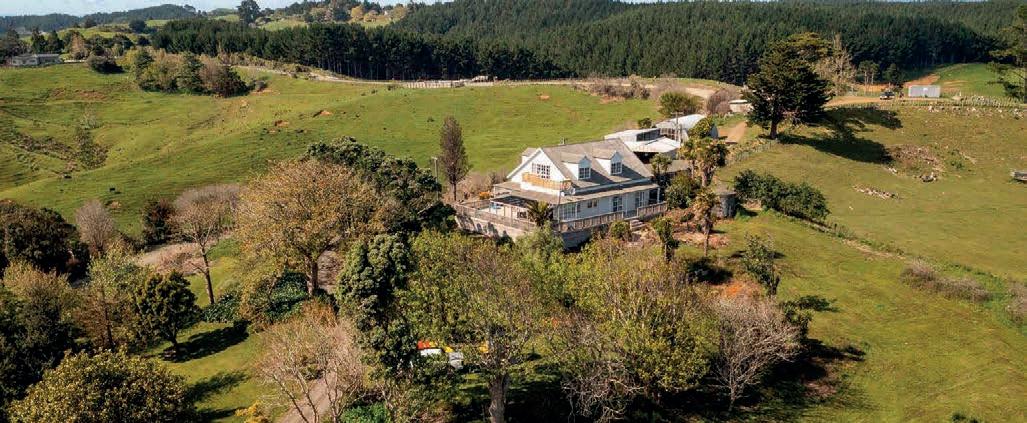
Arotahi Agribusiness Limited, Licensed Real Estate Agent REAA WELL-LOCATED AND ATTRACTIVE MEDIUM-SCALE DAIRY FARM COTSWOLD FARM Kinleith, South Waikato FOR SALE Deadline Offers: Tuesday 13 December 2022 at 4pm (NZDT)** Chan Singh +64 27 767 7113 Jeremy Keating +64 21 461 210 This well-presented farm is peak milking 501 cows and benefits from favorable contour, efficient paddock layout and well developed infrastructure. Located 12km* east of Tokoroa there are multiple competing suppliers to choose from. With flexibility to purchase either the farm only or the operation on a ‘walk in walk out’ basis, contact the Arotahi team to discuss this opportunity in confidence. *Approximately **Unless sold prior Boundary lines are approximate only. + 234.66ha freehold land + 189ha* effective area + Consistent production improvements + 241,000kg* of milk solids (20212022) + 40 ASHB milking shed with in shed feeding + Three well - maintained residential dwellings + 12km* to Tokoroa, 45km* to Rotorua, 100km* to Hamilton FOR SALE VERSATILE, 1,576HA LANDHOLDING LARGE-SCALE GRAZING Te Akau, Waikato Deadline Offers: Friday 16 December 2022 at 5pm (NZDT)** Located 58km* northwest of Hamilton, with a total freehold area of some 1,576ha, this large-scale farm is currently run as a sheep and beef stud operation, with progeny leased or sold to sheep, beef and dairy clients across the North Island. The farm consists of predominantly clean rolling to medium hill country, with large areas cropped on an annual basis and a history of wintering up to 20,000 stock units. + Contained in 13 individual titles, with a subdivision plan to create more blocks; + 128km* to Auckland; + High rainfall area of 1,400mm* to 1,600mm* per annum; + Extensive farm infrastructure incl. 6 houses, 4 woolsheds, multiple sheep and cattle yards, and shedding; + Reticulated water and troughs to all but one paddock. Chan Singh +64 27 767 7113 Jeremy Keating +64 21 461 210 51
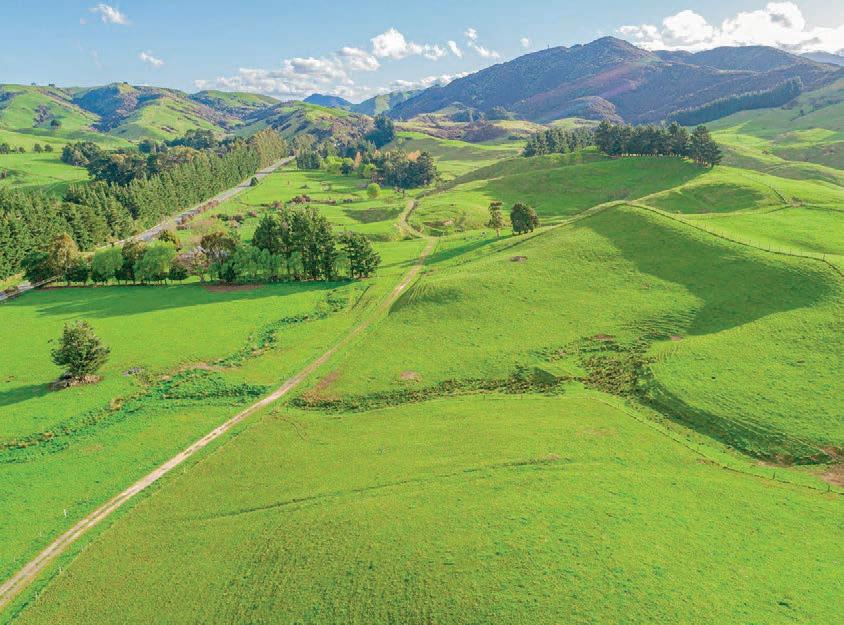






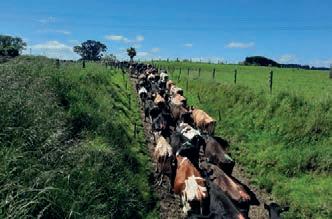



colliers.co.nz Accelerating success. Tender closing Wed 30 Nov 2022 at 2pm (unless sold prior) (plus GST if any) 85602 State Highway 2, Mount Bruce, Masterton Farm, Finish, Forest - Multiple Purchase Options 120 ha flat/easy contour Land Area: 345.681 ha (more or less) Three bedroom home colliers.co.nz/p-NZL67021106 With 120ha flat/easy contour, regular rainfall, extensive lane systems, strong infrastructure and only 18 minutes to Masterton. Being offered in 4 options – 69 ha hill block, 170 ha home block (with all infrastructure) and 106 deer block or the whole 345 ha. Sheep/Beef CRWAI Limited Licensed under the REAA 2008 Multiple purchase options Rob Deal 027 241 4775 rob.deal@colliers.com Jason Waterman 027 376 8313 jason.waterman@colliers.com Final Notice Rural and Lifestyle Sales.com Ltd Licensed REAA 2008 ruralandlifestylesales.com For Sale By Tender Feilding Dairy Farm - 183.3004 hectares 70 Stewart Road, Feilding Farm Open Farm Richard
richard@rals.co.nz Robert
robert@rals.co.nz • Supberbly located 183 ha dairy farm just 6km from Feilding • Well maintained 44 bail rotary dairy. Effluent storage capacity of 6500m3. Adjacent feed pad is a great facility for keeping cows well fed year round • Subdivided to 58 main paddocks accessed from a good network of farm races • Mostly flat to rolling contour, excellent fertiliser history Presently milking 460-480 cows, producing 950kgMS/ha • The main home provides four bedrooms and two living areas plus there is a second three bedroom dwelling
Close: 4.00pm 15th
at 56 Stafford Street, Feilding.
Tuesday
& 29th
- 1.00pm. Property ID RAL963 52 FARMERS WEEKLY – farmersweekly.co.nz – November 21, 2022 Real Estate 52 Advertise with us Reach hundreds and thousands of rural New Zealanders every week Call Grant 027 887 5568
Anderson 027 543 1610
Dabb 027 255 3992
Tenders
December 2022
View:
22nd
November 11.00am
Accidents happen on NZ



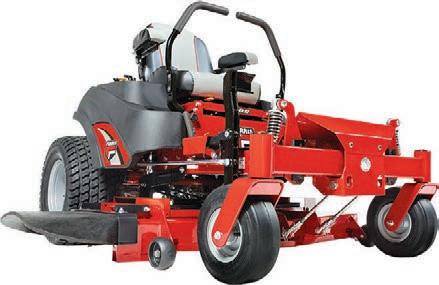













Digital Media Operations Specialist



This exciting role will suit someone who is passionate about digital marketing and will work with us to make our digital strategy work. We want you to help us build the audience and new marketing opportunities around our great content to increase digital revenues. You’ll be working in the business and on the tools, helping build, maintain and monitor our digital infrastructure.
AgriHQ is home to New Zealand’s largest agricultural community. We’re a family-owned business based in Feilding that connects the agricultural sector with news, information, stories, data analysis, educational resources and community engagement platforms that encourage a more sustainable and profitable New Zealand.




If you’re ready for the responsibility and the challenge, we invite you to register your interest and request a job description and application form now by emailing hr@agrihq.co.nz
Applications close Wednesday 30 November, 2022
Informing rural New Zealand
You wouldn’t drive a car without suspension. EXPERIENCE SUSPENSION WITH TRIPLE MOWING TECHNOLOGY From $12,999 RRP Ferris® suspension systems are engineered to provide you with a smooth ride on uneven ground. The deck of the mower works in conjunction with the suspension system to provide a consistent quality of cut. And, the TRIPLE mower deck (on selected models*), now gives you side discharge, rear discharge and mulching configurations that can be converted as required. ™ FW/FERRIS/2022 FERRIS® 400S - 48” deck Affordable & durable with commercial-grade power and maneuverability. Advanced debris management system, large turf friendly 20” tyres for increased traction, with speeds up to 12.8km/h. RRP from $12,999inc. So why buy a Ride-on without it? FERRIS® IS®600Z - 48” deck The best value in a compact zero-turn mower. With our exclusive suspension technology, heavy-duty Hydro-Gear® Drive System and speeds up to 16 km/h, this mower will give you all you’re looking for and more. RRP from $17,849inc. FERRIS® SRS®Z1 STAND-ON Ride con dently into narrow spaces with advanced comfort and stability. The new SRS Z1 offers excellent productivity with our exclusive suspension technology - all in a compact frame that will t into a van or smaller trailer. RRP from $18,899inc. Take a Ferris for a test drive. Phone 0800 274 447 for your nearest dealer. Or visit ferrismowers.com for more information. *TRIPLE Deck available on the 400S and ISX2200 (not shown).
Join the team!
LK0113897©
farms... ...these days when they do, someone has to pay if you are in charge of the farm that someone is YOU! Smart HS offers online training for operating Tractors, Quads, Side x Sides and Motorbikes. It is affordable, effective and convenient so protect your team and cover your A$$ in the process!
53 Marketplace FARMERS WEEKLY – farmersweekly.co.nz – November 21, 2022 Marketplace 53
www.smarths.co.nz
WANTED






















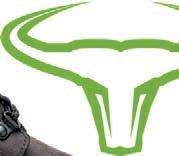









HORTICULTURE
027 529 5540.


PERSONAL
0113841
30x30
PERSONAL. Country Ladies.

INTRODUCING KATE. Alone and Seeking Love. A country girl who is loving and down to earth. She has grown up on the land and enjoys the farming lifestyle. Kate has blonde hair and green eyes. Enjoys cooking, camping, shing and spending her time with a special man. Call now for more details. 0800 446 332.
PUMPS
HIGH PRESSURE WATER PUMPS, suitable on high headlifts. Low energy usage for single/3-phase motors, waterwheel and turbine drives. Low maintenance costs and easy to service. Enquiries phone 04 526 4415, email sales@hydra-cell.co.nz
RAMS FOR SALE
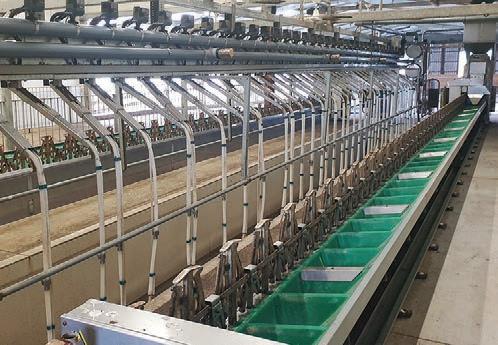
WILTSHIRES-ARVIDSON. Self shearing sheep. No1 for Facial Eczema. David 027 2771 556.

HAIR SHIRE® Low input meat rams! www.organicstud. nz 027 225 5283. tim@ organicstud.nz
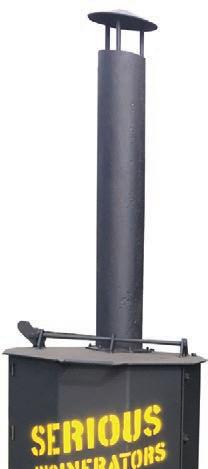

STOCK FEED
MOISTURE METERS Hay, Silage dry matter, grain. www.moisturemeters.co.nz 0800 213 343.



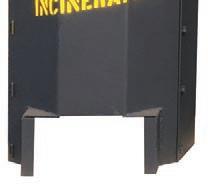

TO BUY
SAWN SHED TIMBER including Black Maire. Matai, Totara and Rimu etc. Also buying salvaged native logs. Phone Richard Uren. NZ Native Timber Supplies. Phone 027 688 2954.
$160* $150* valued at $320 valued at $280 New Zealand owned & operated NEW - WIDER TOE BOX for improved downhill comfort NEW - WIDER STEEL CAP ** for improved toe comfort NEW - KEVLAR PENETRATION RESISTANT SOLE ** for lightweight safety NEW - 250 DEGREE HEAT RESISTANT OUTSOLE NEW - BALL BEARING SPEED LACING for greater comfort & adjustability NEW - FLEXIBLE RAND for less stress on the instep & leather NEW - STRONGER OUTSOLE STITCHING for strong rand to midsole connection NEW - STRONGER MIDSOLE NEW - STRONGER FORESTRY GRADE SHANK for greater support & overall strength (**safety models) New boots arrive December $109 $99 $88 BUY valued at $230 JACKET valued at $160 valued at $140 BIB OVERALLS LEGGINGS 100% Waterproof Flexible Fleece Collar Hood Visor Acid Resistant Durable Seams Stitched On Soles Plain Toe* or Steel Toe 175% more crack resistant than normal leather Buffalo Leather earthwalk.co.nz free shipping 0800 16 00 24 sizes: BOOTS 5 - 13 (NZ) RAINWEAR XS - 4XL 9am-5pm PHONE 175% more crack resistant NEW! BUFFALO BOOTS RAINWEAR SALE ends soon Nguturoa Catchment Field Day 6th December 2022 – 10.00-10.30am start 179 Millricks Line, Linton, Manawatū PROGRAMME INCLUDES: Opening by MP Barbara Kuriger Catchment monitoring results Farm planning and environmental monitoring Stream walk and ecological assessment Horizons and Fonterra rural community support Come and hear from livestock farmers monitoring and self-managing water quality and what they have discovered in their catchment. LK0113696© Heavy duty, long lasting incinerators Three sizes available Phone 021 047 9299 irontreeproducts.co.nz LK0112754© STOP BIRDS NOW! ZON BIRDSCARER EARMARKERS HOOF TRIMMER LK0112867© FOR SALE Sheep or Goat Milking Plant 40 ASIDE SWING-OVER HERRING-BONE • Includes stalls feed system milk line • Milk silo 11000 litre with refrigeration • Plate cooler • Snap chill • Vacuum pump • Auto cleaning system • Gas hot water heater PHONE 027 443 0311 Price does not include dismantling Pick up available from Palmerston North, Manawatu HALF NEW PRICE $160,000 PLUS GST JW0113947© Check out our website for farm gear: www.squires.co.nz Or phone Shane: 06 388 1201 Manufactured to the highest standards, Squires clothing & accessories stand the test of time. For Farming & Shearing Clothing and Accessories LK0113949© 54 FARMERS WEEKLY – farmersweekly.co.nz – November 21, 2022 Marketplace 54 DOLOMITE For a delivered price call .... NZ’s finest BioGro certified Mg fertiliser 0800 436 566 ATTENTION FARMERS FLY OR LICE problem? Electrodip – the magic eye sheepjetter since 1989 with unique self adjusting sides. Incredible chemical and time savings with proven e ectiveness. Phone 07 573 8512 www.electrodip.com ANIMAL HANDLING CRAIGCO SHEEP JETTERS. Sensor Jet. Deal to y and Lice now. Guaranteed performance. Unbeatable pricing. Phone 06 835 6863. www.craigcojetters.com www.drench.co.nz farmer owned, very competitive prices. Phone 0800 4 DRENCH (437 362). ANIMAL HEALTH PULLETS HY-LINE brown, great layers. 07 824 1762. Website: eurekapoultryfarm. weebly.com – Have fresh eggs each day!!! BIRDS/POULTRY DOGS FOR SALE HUNTAWAY AND HEADING dogs. Deliver NZ wide. www.youtube.com/user/ mikehughesworkingdog/ videos - 07 315 5553. WAIKATO CENTRE and North Island final of Tux yarding and Handy dog challenge/TransTasman course. Aratiatia Station, View Rd,Taupō. Starting Thursday, 15th to Saturday 17th December 2022. Runoff, Sunday 18th. Handy dog, Friday and Saturday only. Entry forms available from Laura Geering: lgeering76@ gmail.com. Phone 021 022 97909. Entries close: Wednesday, November 30th. 12 MONTHS TO 5½-yearold Heading dogs and Huntaways wanted. Phone 022 698 8195. DOGS WANTED ACCURATE AND PRACTICAL farm maps showing area sizes of paddocks and vegetation. Visit farmmapping.co.nz for a free quote. FARM MAPPING FOR ONLY $2.30 + gst per word you can book a word only ad in Farmers Weekly Classi eds. Phone Debbie on 0800 85 25 80. FOR ONLY $2.30 + gst per word you can book a word only ad in Farmers Weekly Classi eds. Phone Debbie on 0800 85 25 80. CHRISTMAS SPECIAL Buy $200 + grab a FREE 2pr Xmas socks $50 Worth www.thesocklady.co.nz FOR SALE GIBBERELLIC ACID growth promotant. Increase pasture growth and dry matter. From $5.50 per/ha. 0508 733 343, sales@vernado.co.nz GIBBOOST GOATS WANTED. All weights. All breeds. Prompt service. Payment on pick up. My on farm prices will not be beaten. Phone David Hutchings 07 895 8845 or 0274 519 249. Feral goats mustered on a 50/50 share basis. FERAL GOATS WANTED. All head counted, payment on pick-up, pick-up within 24 hours. Prices based on works schedule. Experienced musterers available. Phone Bill and Vicky Le Feuvre 07 893 8916. GOATS WANTED NORTH ISLAND. Last years large bales. Feed value doesn’t matter but needs to be dry to go through spreaders for erosion and dust control. Please contact Hamish 0274 744 246 or hamish@ evergreenlandcare.co.nz HAY WANTED NZ KELP. FRESH, wild ocean harvested giant kelp. The world’s richest source of natural iodine. Dried and milled for use in agriculture and horticulture. Growth promotant / stock health food. As seen on Country Calendar. Orders to: 03 322 6115 or info@nzkelp.co.nz
LEASE LAND AVAILABLE UP TO 65 HECTARES, 30 hectares mowable. Or will consider dairy grazing. Waikite Valley. Phone 0274 43 6565. LIVESTOCK
YEARLING
NI only.
06 762 8058. Stratford.
RELAXING
JERSEY BULLS.
Phone
MYSTERY CREEK
FULL BODY massage in rural Ohaupo. Unwind. De-stress. www. ruralmassage.co.nz or call
WORD ONLY ADVERTISING.
Debbie
Advertise with us Call Debbie 027 705 7181
WANTED
WHAT’S SITTING IN your barn? Don’t leave it to rust away! We pay cash for tractors, excavators, small crawler tractors and surplus farm machinery. Ford –Ferguson – Hitachi – Komatsu – John Deere and more. Tell us what you have no matter where it is in NZ. You never know.. what’s resting in your barn could be fattening up your wallet! Email admin@ loaderparts.co.nz or phone Colin on 0274 426 936 (No texts please)
Phone
on 0800 85 25 80. Grass Season
Dairy Herds For Sale

















Autumn and Spring calving herd, 90 autumn calving, 60 spring calving, complete herd, MA Ayrshire, Jersey and Crossbred cows, due to calve from 1/4/23 and 15/7/23 respectively, all in calf to Hereford bulls. Recorded, good production cows, will sell breeds and different calving lines to suit. Waikato.
Pick 250 from 300 MA recorded, Jersey, Ayrshire and Crossbred herd. Young cows, all older, unsound cows already taken out which vendor will retain, sale line indice averages BW 198, PW 264, RA 86%, 360/370 kgs ms average on OAD for last 6 seasons, milked through rotary cowshed, due to calve from 1/8/23, Upper South Island. 80 MA Crossbred cows, recorded with line average of BW 257, PW 299, LW 310 on October herd test. Crossbreds from within Jersey herd. Mated to calve July/August 2023. Northland For more
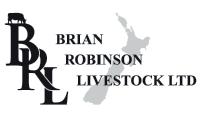
Quality Rams & Ewes for sale
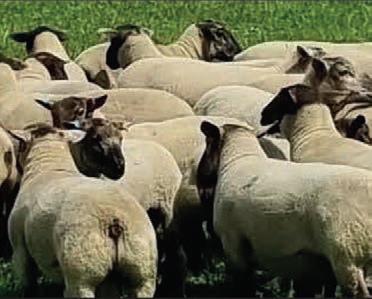
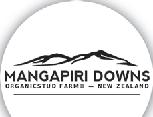


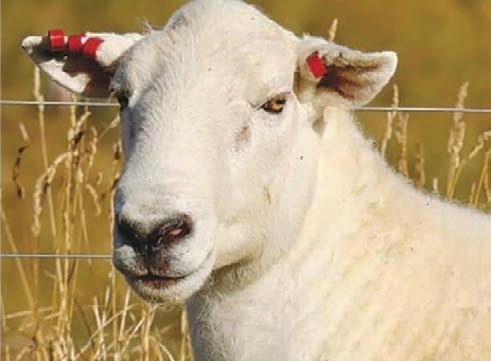
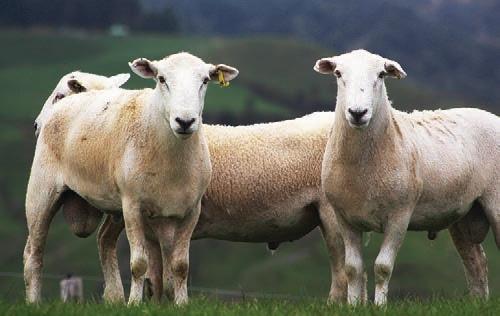
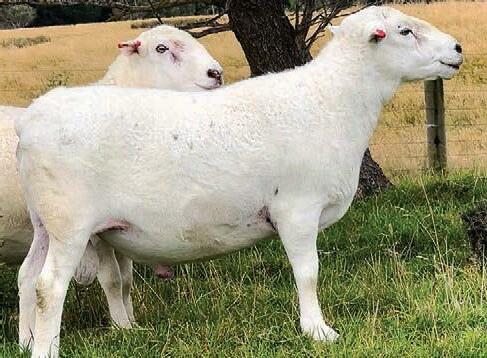
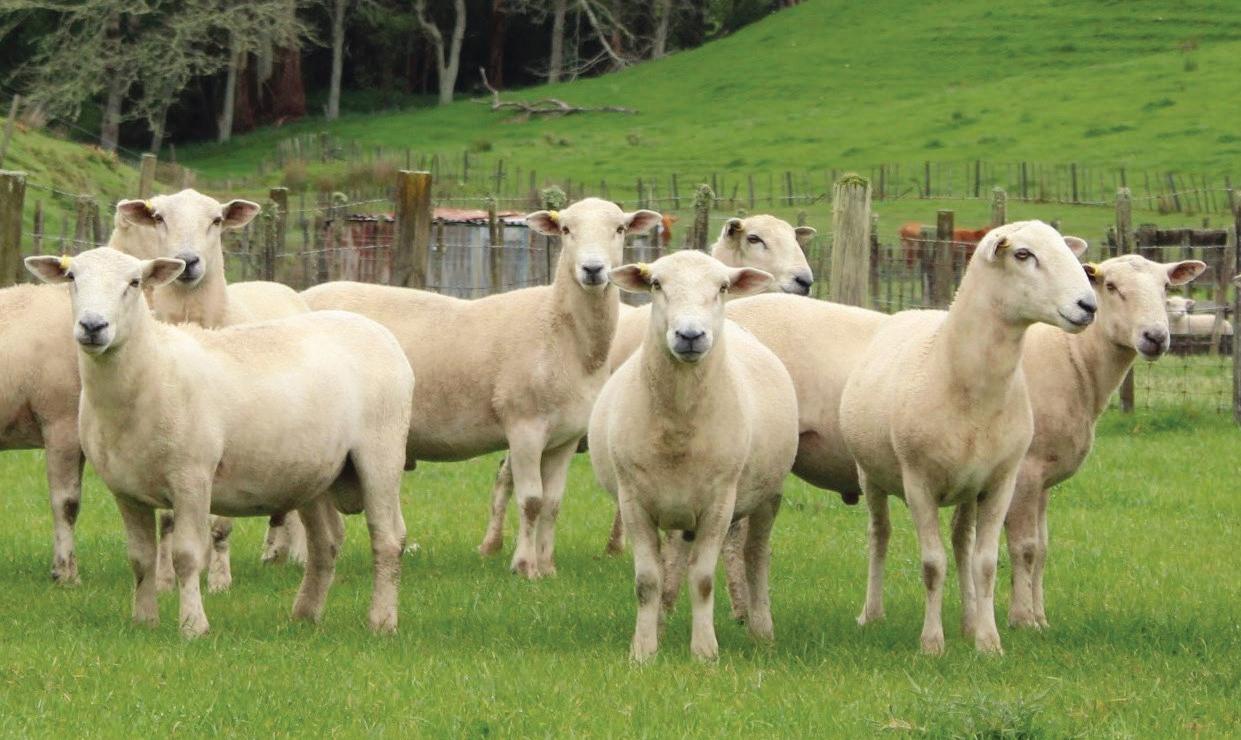
PAREORA DOWNS 4th Annual Ram Sale ¼ Beltex ¾ Suftex 100 2th Rams Tuesday 29th November 2022 Viewing from 1pm, Auction 2.30pm 68 Pareora Ford Road, Taiko or live on Rams selected on hind quarters, eye muscle and high yielding traits Grant Black 027 547 7616 Jonty Hyslop (PGW) 027 595 6450 LK0113844© NZ’s Top 200 FE Rams for Wiltshires Leading the development of Shedding Sheep in NZ. • First (1995) to performance select on Animalplan/SIL • First (2006) to Ramguard™ Facial Eczema Test, currently 0.53 • First (2012) to Carla™ antibody parasite test • Hoof Score (2016) every year, every toe, every hogget ram and ewe, scored in a roll over crate Viewing at Matamata. Private sales. Arvidson Wiltshires arvidsonz@gmail.com 027 2771 556 or 09 296 0597 Taupo Auction 100 Rams With – 29th November 12pm LK0113538© Cam Heggie Mobile 027 501 8182 Check out Poll Dorset NZ on Facebook LK0112874© Mataro Wiltshire’s have been breeding for eczema tolerance since 1989. On the eczema prone hills of Taranaki these Rams are breed tough and ready for any climate. For more information contact: Curtis Lockley 022 412 0660, 06 752 3084 LK0113417© ELITE RAM & EWE SALE 12.30PM Friday 25th November 2022 (Viewing from 9am) Canterbury Agricultural Park 102 Curletts Road, Christchurch Corriedale English Leicester Border Leicester Romney Texel Dorper Suffolk Shropshire South Suffolk Poll Dorset Southdown Dorset Down For more information, contact our Auctioneer Representatives: PGG Wrightson Ltd Simon Eddington, 027 590 8612 Rural Livestock Ltd, Anthony Cox, 027 208 3071 Carrfields Ltd, Robbie Kirkpatrick, 027 587 0131 Hazlett Rural Ltd, Callum Dunnett, 027 462 0126
BW 143/50 PW 161/67 RA 100% (in top 10 All Breeds for NZ ) • Many cows contracted to LIC for 2011 matings • Due to calve from 16-7-12, 6.5 weeks AB Jersey and Kiwi cross • Estimated to be 420 cows after non pregnant, culls, older cows & 5% rejection • Production last season 347kgs ms/cow, 1000kgs ms/ha, on rolling to steeper contoured farm, no meal, palm kernel or maize fed. • Young replacement stock also available Outstanding genetics & potential to be one of the countries leading suppliers of Genetics to the dairy industry for years to come. Full details available. Enquiries to the sole marketing agents: Brian Robinson BRLL PH: 0272 410051 or 07 8583132 Gary Falkner Jersey Marketing Service PH: 027 482 8771 or 07 846 4491 LK0113965© ✔ No dagging ✔ No dip, drench since 1989 ✔ No shearing Also Tufty® (polled Highland) bulls, cows and calves available. Mangapiri Downs Organic Stud TUFTY® Cow & Calf Sale http://bidr.co.nz/auction/1759 Mangapiri Downs Organic Stud SHIRE® Hair Ram Sale http://bidr.co.nz/auction/1756 HARDY, LOW INPUT EASY CARE MEAT SHEEP HAIR SHIRE® Stud Ram Sire “SILVER” progeny for sale HAIR SHIRE® Stud Ram Sire “GLADIATOR” progeny for sale Ph 027 225 5283 BOOK SHIRE® RAMS NOW LK0113958© LK0113736© LATE SPRING 15mth STEER FAIR Tuesday 29th November Kauri saleyards 12.00 Noon start 750 15mth STEERS COMPRISING: 120 Angus Steers 300 Angus/FrsnX Steers 300 Here/FrsnX Steers 30 Xbred Steers For more information please contact: CARRFIELDS LIVESTOCK AGENT: Paul Chapman 021 242 7799 Advertise with us Last issue for 2022 December 19 First issue for 2023 January 16 Contact your partnership manager for deadlines Office close dates December 20 to January 8 55 Livestock FARMERS WEEKLY – farmersweekly.co.nz – November 21, 2022 Livestock 55 IN CONJUNCTION WITH Waterfields Wiltshires Peter & Caroline Foss 495 Potaka Road, Aria (07) 8777 881 pcfossy@xtra.co.nz ✓ No shearing ✓ No dipping ✓ No dagging ✓ SIL Recorded ✓ FE dosing ✓ Live streamed sale Anna Martyn • 021 247 2278 akmartyn@yahoo.com.au SALE DAY THURSDAY 24TH NOVEMBER, 2PM ON FARM AT 495 POTAKA RD, ARIA ON OFFER 70 Full Shed 2T Wiltshire Rams Live streamed on
information contact Brian Robinson Phone 0272 410 051
SALE TALK



Two pieces of black tarmac are sitting at a bar, bragging to the barman how hard they are..
They are drinking the strongest beer and eating the crustiest pies just to show how ‘hard’ they are...
The bar room door is flung open and a piece of red tarmac is standing in the doorway.
The two pieces of black tarmac run to the corner of the bar and cower in fright as the red tarmac orders a beer, drinks it and then leaves.

When the two pieces of black tarmac eventually return to their seats, the barman asks why they were so frightened of the red tarmac if they claimed to be so hard..





“He is red tarmac... a cyclepath!”

Here at Farmers Weekly we get some pretty funny contributions to our Sale Talk joke from you avid readers, and we’re keen to hear more!








If you’ve got a joke you want to share with the farming community (it must be something you’d share with your grandmother...) then email us at: saletalk@agrihq.co.nz with Sale Talk in the subject line and we’ll print it and credit it to you. Conditions apply
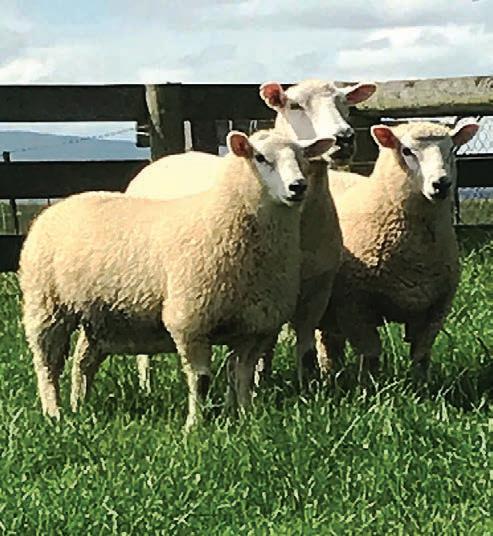
Romani Coopworths Ross Richards, Taumarunui • Phone 07 895 7144 romani@farmside.co.nz • Romani commercial hoggets winner of 2017 NZ Ewe Hogget Competition Large Flock Award, 2018 winner Coopworth section • Romani flock finalist for 2017 NZ Sheep Industry Awards Maternal Trait Leader Parasite Resistance LK0113778© Struggling with triple drench resistance? Facial Eczema damaging your sheep production? Barbers-poll sucking the life out of sheep performance? Flystike eating up your time and energy? Choose Romani sheep genetics for maximum disease tolerance and production with minimum inputs Romani rams are top performers in B+LNZ Genetics Low Input Progeny Test Fully SIL recorded under true commercial conditions Charollais Sheep Genetics NZ For further information on private ram sales contact participating flocks The breed that offers fast growth rate and high yielding carcasses. The Charollais wedge shape gives easy lambing and ideal for hogget mating. Peter Ponsonby, Lawrence 027 299 2871 Matt Ponsonby, Lawrence 0274 199 733 Scott Linklater, Feilding 0175 483 578 Chris Hampton, South Canterbury 0272 025 679 Murray Smith, Rangiora 0274 140 308 Alastair Brown, Pleasant Point 022 188 6601 Duncan & Casey MacKintosh, Rangiora 03 312 8192 Mitch Taylor, Fairlie 0274 054 527 Nigel Jay, Rangiora 021 140 7827 Martina & Shaun Lawlor, Gore 0274 445 379 LK0113313© FEILDING ELITE RAM & EWE SALES MANFEILD PARK, FEILDING Auctioneers: TUESDAY DECEMBER 13, 2022 Start time 10.30am SALE CANCELLED Due to insufficient entries, the Feilding Elite Ram and Ewe Fair will not be held this year For further enquiries please contact any of the following: Brent Bougen: NZFLL 027 210 4698 Robbie Kirkpatrick: Carrfields 027 587 0131 Anthony Cox: Rural Livestock 027 208 3071 Callum Dunnett: Hazlett Rural 027 462 0126 LK0113846© For Sale – 300 Maternal and Terminal Rams proven to increase growth rate and meat yield of export lambs. Maternals Terminals Texel Meatmaker Wharetoa Maternal Suftex Meatmaker x Suftex Open Day: Friday 25 Nov 10am – 3pm On Farm Auction: Friday 16 Dec at 12 midday, Inspection from 10am. Superior Genetics for Greater Profitability LK0108979© Garth Shaw: 027 273 7037 Warwick Howie (PGGW): 027 437 5276 e: wharetoa@farmside.co.nz LK0113495© www.wharetoagenetics.co.nz Andy 027 238 4961 • halfy490@gmail.com Stewart 06 372 2770 • texels4u@gmail.com WAIRARAPA TEXEL DEVELOPMENTS Tried, tested, proven and matched perfectly to New Zealand conditions for efficient, cost effective lamb production. WTD STORE LAMB DIRECT BUY-BACK PLAN After a very positive start to our store lamb direct buy back plan Wairarapa Texel Developments will again offer this exciting option to our genetic user clients to sell surplus Texel cross store lambs directly back to us. For further details regarding this program please contact Andy 027 238 4961. WAIRARAPA TEXEL DEVELOPMENTS THE TERMINATOR -PACKING MEAT “Meating the Market” With 100 plus Texel 2th rams and 80 plus Suftex 2th rams All fully SIL recorded for sale 2022 Plus – 130 plus ram hoggets available for 2023 ewe hogget mating. Inspection and enquiry are always welcome, or visit our Facebook page wairarapa texel development Texel Flock No 10 SIL No. 2960 Suftex Flock SIL No 5044 LK0113552© RAM BUYERS See ewe Noon Friday, 25th at THE RAM SALE 40+ Stud and Commercial SUFFOLK RAMS for sale, Canterbury A&P Ram Sale, Friday 25th November Meaty, early maturing and easy identi able rams. LK0113607© SOUTHDOWNS 4 Carcase uniformity www.southdownsheep.org.nz LK0112873© www.dyerlivestock.co.nz Ross Dyer 0274 333 381 STOCK FOR SALE 1YR ANGUS STEERS Lines of 340, 380 & 420kg 420 1YR ANG/AH & EX DAIRY X TBD 300kg 1YR FRSN BULLS 370 440kg STOCK REQUIRED 1YR BEEF HEIFERS 280 330kg 2YR BEEF BRED HEIFERS 400 450kg E info@rdlfinance.co.nz A Financing Solution For Your Farm 56 FARMERS WEEKLY – farmersweekly.co.nz – November 21, 2022 Livestock 56
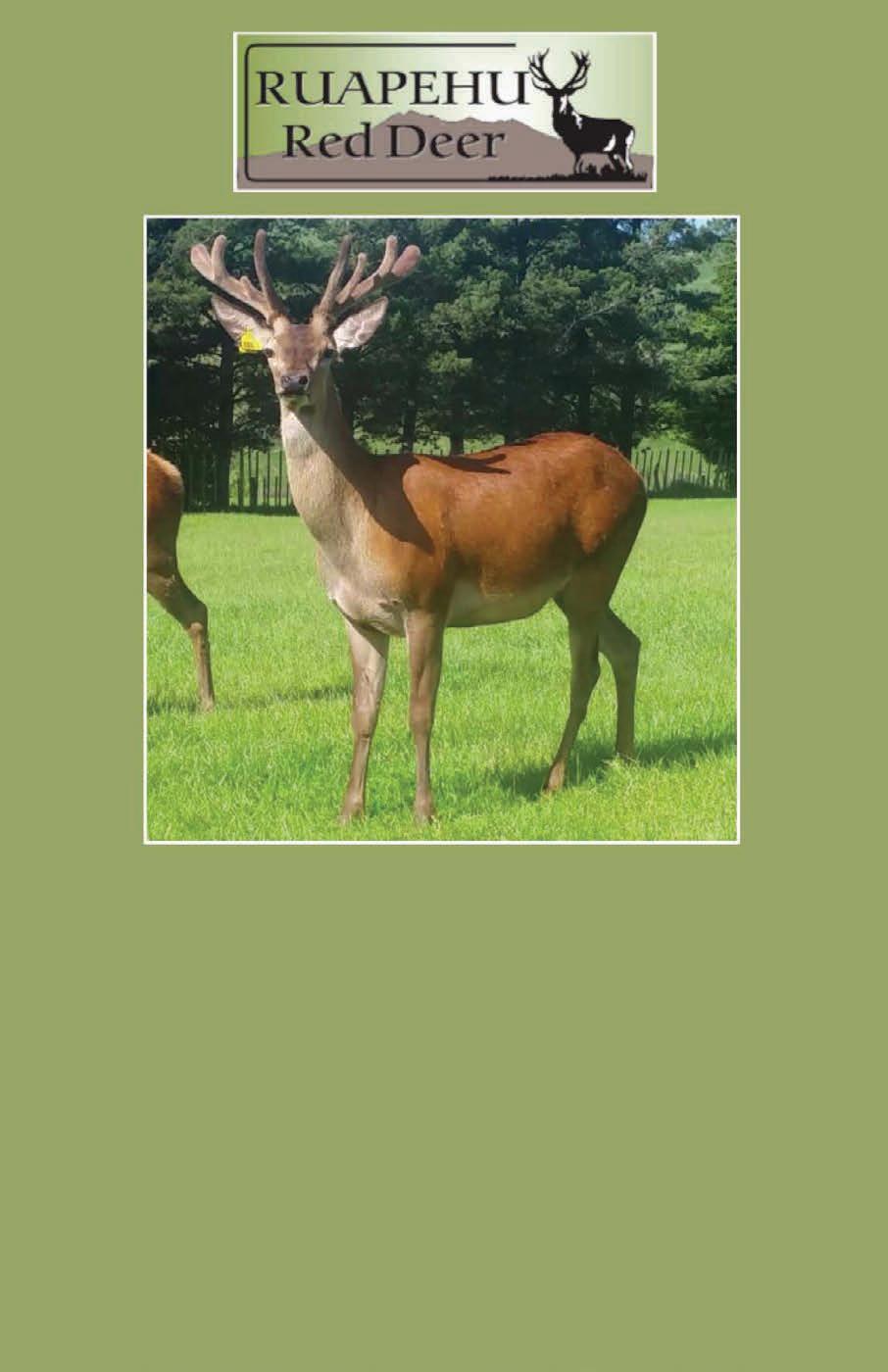




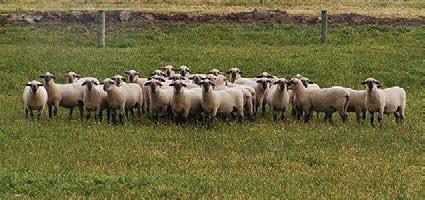




Annual 2yr sire stag sale Wednesday 7 December 1:30pm at 37 Pukenaua Rd, Taihape • 33 stags with 12mth BVs +26 to +33kg • Highest average 12mth BV stag auction in NZ since 2011 • Maternal reds selected on temperament and fully guaranteed • Transport of two or more stags offered at vendor’s expense For further information contact Paul Hughes 027 446 6309 • www.deerstud.nz Gareth Williams 0275 264 613 0109332 130.71x180 Glengarry Poll Dorset Rams 2021 Why you should buy a Glengarry ram: • 46 years performance recording • Major emphasis on growth, survival and muscling • All sires DNA tested for footrot and muscling genes • No. 1 ranked Terminal Sire 2004, 2005, 2009, 2010 & 2017 (SIL ACE list) • 550 stud ewes means only the best rams are sold • Six rams in Top 20 2022 SIL Terminal Lamb Growth • 1st Ranked Ram 2020/21 SIL Terminal Sire Lamb Growth Callum Stewart 0272 802 688 Maurice Stewart 0272 469 255 Ryan Shannon 027 565 0979 GLENGARRY POLL DORSET 56TH ANNUAL SALE Monday, December 5th, 2022 – 1pm Feilding Saleyards, Manchester Street, Feilding For ram and semen enquiries contact Ross & Ben Pratt today: Ross 06 323 3827 • RD 5, Feilding Ben 027 2356 577 • RD 2, Kimbolton • benpratt@xtra.co.nz 110 Rams up for Auction LK0113775© MANU POLL DORSET Monday 28th November 2022, 1pm start 34th Annual Ram Sale A/C AA & DJ Clements To be held on the property of Alex & Delwyn Clements 201 Drake Road, Purua, Whangarei 49 One Shear Poll Dorset Rams All Rams Ovine Brucellosis Accredited All Rams Eye Muscle Scanned All Manu Rams Performance Recorded (SIL) Contact: Alex Clements 09 433 5871 aadjclements@gmail.com Auctioneers: PGG Wrightson & Carfields Manu 86/17 CRAIGNEUK Annual on Farm Sale Friday 13th January 2023 On offer 280 Rams Made up of 200 Terminal Rams • Dorset Down X lambs growing 500 to 600 grams a day from birth to weaning • South Dorset Rams for quick maturity • SIL Recorded and Studfax • Autumn Scan 80 Maternal Halfbred and Quarterbred Rams Merino Ram/Romney Ewe MILK • WOOL • MEAT Bred to fit the Smartwool Contract 20-25 micron Grown in the harsh Maniototo climate Enquiries to: Johnny Duncan 027 327 2372 or email: JDuncan.Craigneuk@xtra.co.nz LK0113881© Upcoming Auctions TUESDAY 22 NOVEMBER 12pm Goldstream Suffolk & Polled Dorset Ram Sale 1pm Clearing Sale- A/C Mrs JA & Estate of SB Clearwater 1pm Clearing Sale- A/C Avonlea Farming- MJ & SM McManus WEDNESDAY 23 NOVEMBER 1.30pm Hermiston Ram Sale THURSDAY 24 NOVEMBER 2pm Ipurua Wiltshire Ram Sale FRIDAY 25 NOVEMBER 11am Rolling Rock Ram Sale 12.30pm Canterbury Elite Ram and Ewe Fair MONDAY 28 NOVEMBER 1pm Manu Poll Dorset Ram Sale 2pm FA Fletcher Coopworth & Dorset Down Ram Sale Regular Livestream coverage of eight North Island Saleyards. bidr.co.nz BEEFGEN is currently purchasing animals for live export for December delivery: 2021 Holstein Friesian Heifers (chance mated) F12 and above $2150 F8-F11 $2050 2022 Autumn Born Holstein Friesian Heifers F12 and above $2300 F8-F11 $1800 Please contact your local agent for further information. BEEFGEN : Brian Pearson : 021 0907 1688 BEEFGEN : Jess Crow : 021 058 5168 BEEFGEN Office : 06 927 7154 100% NZ OWNED AND OPERATED LK0113725© 57 FARMERS WEEKLY – farmersweekly.co.nz – November 21, 2022 Livestock 57
Markets Proudly sponsored by
Lamb prices react to global pullback
Slaughter prices for lamb are tumbling at a rate not seen before at this time of year and exporters are facing a very challenging period. Those that tough it out, however, will find that global prices will reach a point where they lure buyers back to lamb.
pushed prices to record levels is quickly evaporating.
AFTER pushing to near record heights, lamb prices have very quickly spiralled downwards and unfortunately mutton is also following suit.
The pullback in prices has been global and has occurred almost simultaneously.
Key markets such as Europe, the United Kingdom, the United States and China are all displaying similar trends. This is the core issue driving prices lower.
In other years at least one market could be called upon to move product to, balancing out the downside elsewhere.
That market was usually China, but it can’t be relied on as a backstop this time around.
Its staunch position on eradicating covid has weakened its economy, causing restaurants to close as the country yo-yos in and out of lockdowns.
This reduced consumption means stockpiles of lamb cuts are building.
Yet in the 12 months to September 30, New Zealand’s shipments of lamb to China had fallen by 40,000t year-on-year.
There is a sense that we are returning to the pre-covid days, when the bubble of demand that
After being cleaned out through the early covid lockdown days, global markets scurried to rebuild pipeline supplies to establish greater food security.
This helped drive prices significantly higher. But now consumers aren’t absorbing the supplies like they were.
Cost of living and inflation have seen consumer spending reeled in, especially on high-priced cuts such as lamb.
The economic pain in China due to its covid-zero policy is also reducing demand for lamb but hitting lower priced mutton equally hard.
Only eight weeks ago, export markets for lamb and mutton were still okay.
There had been indications that prices were starting to struggle against falling demand but that hadn’t been reflected in any pricing downside.
But since then, the pressure has really come on and the speed at which in-market prices have unravelled has caught many by surprise.
This has seen slaughter prices for lamb plummet. Since peaking in early October at $9.60/kg across both islands, prices are currently almost $1/kg lower. This is the result of widespread weekly downside of at least 20c/kg for
lamb and up to 30c/kg for mutton. According to AgriHQ’s November Livestock Outlook, that downside is far from over. By Christmas, lamb prices are forecast to be under $8/kg. Even that figure is subject to change, depending on if we see a further deterioration of export demand and pricing.
We haven’t ever seen prices fall this hard and fast at this time of the year before. In 2015 we got close with slaughter prices falling at least $1/kg between October and December.
Weak demand from key markets, including limited interest from China, drove export prices lower, which immediately flowed back to the farmgate.
Back then, however, prices started falling from a much lower
October peak of $6.10-$6.25/ kg. They bottomed out through March/April the following year at between $4.65-$4.85/kg.
There is a sense that we are returning to the pre-covid days, when the bubble of demand that pushed prices to record levels is quickly evaporating.
The message then was to not write the lamb job off and after bottoming out in early 2016, lamb prices did recover and continued to do so until global covid-19 lockdowns stepped in the way.
Interestingly, we are facing many of the similar drivers now as we were back then. Christmas chilled trade and Chinese New Year buying are barely registering a mention. Exporters face a very challenging period as deteriorating market conditions mean some deals are being renegotiated just as production seasonally ramps up.

While the current downside is a real blow to the bottom line, those that tough it out will find global lamb prices will reach a point where they encourage buyers back to lamb, allowing demand to build and prices to recover. AgriHQ’s current outlook points to further pricing downside into early 2023 but at levels that still remain historically strong.

58 Markets
See what sold today REPORTS EYE LIVESTOCK Results from the saleyards, including per kilo prices for store lambs, delivered straight to your inbox. Subscribe from only $35* per month agrihq.co.nz/livestock-reports * Prices are GST exclusive
Mel Croad MARKETS Sheep and beef
NO SEASON’S GREETINGS: The Christmas chilled trade and Chinese New Year buying are barely registering a mention.
Weekly saleyards
Over the past four weeks prime ewe volume at Feilding has been tracking well below last year and the five-year average. A slow growth season that has delayed weaning has affected the flow, yet throughput has tracked at just 37%-66% of the volume offered last year, and 25%-62% of the five-year average, indicating more factors at play. Values have fallen away over the past few weeks, in line with schedules and a lack of processor space, but a smaller national ewe flock due to farm sales and changes in policies is also now showing in the numbers. Supply peaked at 5245 head last year. To date the biggest weekly offering has been 2327 head.
Wellsford | November 14 | 502 cattle
$/kg or $/hd
2-year Hereford-Friesian steers, 432-447kg 3.26-3.27
2-year Hereford-Friesian steers, 479-526kg 3.04-3.15
2-year Hereford-Friesian heifers, 385-433kg 3.08-3.19
Yearling Hereford-Friesian steers, 224-253kg 3.48-3.57
Yearling Hereford-dairy steers, 303-397kg 2.97-3.00
Yearling Murray Grey-Friesian steers, 268-325kg 3.17-3.25
Yearling Hereford-Friesian heifers, 242-275kg 3.02-3.14
Yearling Hereford-dairy heifers, 284-285kg 2.86-2.90
Yearling Charolais heifers, 297kg 3.13
Aut-born weaner Hereford-Friesian steers, 160-164kg 640-740
Aut-born weaner Charolais-Friesian heifers, 136kg 545
Pukekohe | November 12
$/kg or $/hd
Mixed-age cows & calves 1240
Aut-born yearling heifers 2.96
Yearling dairy-beef steers 790-860
Weaner steers 440-600
Weaner heifers 370-505
Prime steers 3.03-3.29
Prime heifers 3.00-3.21
Boner cows 1.72-1.98
Store ewes 45-124
Store ram hoggets 150-181
Store hoggets 50-120
Prime lambs 134-160
Tuakau | November 10 | 600 cattle $/kg or $/hd
2-year steers, 400-550kg 3.10-3.40
2-year heifers, 350-420kg 2.90-3.15
Yearling Hereford-Friesian steers, 250-350kg 3.30-3.59
Yearling heifers, 250-350kg 2.90-3.20
Tuakau | November 14 | 1200 sheep $/kg or $/hd
Store lambs, all 65-101
Prime ewes, all 90-120
Prime hoggets, all 131-187
Tuakau | November 16 | 440 cattle
$/kg or $/hd
Prime steers, 500-750kg 3.00-3.16
Prime heifers, 420-550kg 2.90-3.16
Boner cows, 420-600kg 2.00-2.44
Te Kuiti | November 11 | approx 1000 cattle
$/kg or $/hd
2-year Hereford-Friesian steers, 317-570kg, tops 3.22-3.36
2-year dairy-beef steers, 348-531kg 3.10-3.24
2-year dairy-beef heifers, 382-538kg 2.85-3.11
Aut-born yearling Hereford-Friesian steers, 397-448kg 1270-1505
Yearling Angus steers, 310-381kg, tops 3.38-3.73
Yearling exotic & dairy-beef steers, 368-406kg 3.33-3.66
Yearling Angus heifers, 232-256kg 3.44-3.49
Yearling exotic heifers, 232-360kg, tops 3.19-3.29
Yearling exotic heifers, 265-353kg 2.98-3.13
Frankton | November 15 | 660 cattle
$/kg or $/hd
2-year dairy-beef steers, 420kg average 3.17
2-year Hereford-Friesian heifers, 406-425kg 2.91-3.06
2-year Friesian heifers, 392-413kg 2.54-2.58
Yearling dairy-beef steers, 304-379kg 3.18-3.35
Yearling Hereford-Friesian (black and red) steers, 269-298kg 3.15-3.22
Yearling Hereford bulls, 348-407kg 1305-1400
Yearling Friesian bulls, 263-374kg 3.00-3.21
Yearling Hereford heifers, 297-364kg 950-1115
Yearling Hereford-Friesian heifers, 278-337kg 3.19-3.27
Yearling dairy-beef heifers, 204-283kg 2.79-2.99
Prime dairy-beef steers, 590kg 3.17
Prime Hereford bulls, 453-646kg 3.27-3.36
Prime Hereford-Friesian (red) heifers, 430-479kg 3.10-3.18
Frankton | November 16 | 619 cattle
$/kg or $/hd
2-year dairy-beef heifers, 382-448kg 2.98-3.04
Aut-born yearling dairy-beef steers, 373-427kg 3.04-3.08
Aut-born yearling dairy-beef heifers, 326-373kg 2.76-3.00
Yearling Angus-Hereford steers, 350kg, one line 3.27
Yearling dairy-beef steers, 273-347kg 3.09-3.18
Yearling dairy-beef steers, 210-310kg 3.35-3.57
Yearling dairy-beef heifers, 242-302kg 2.81-3.02
Yearling dairy-beef heifers, 289-349kg, second cuts 2.54-2.77
Prime steers, 530-585kg 3.21-3.25
Prime dairy-beef heifers, 453-506kg 2.98-3.16
Rangiuru | November 16 | 579 cattle, 9 sheep
$/kg or $/hd
2-year dairy-beef heifers, 360-460kg 2.72-2.97
Yearling Hereford-Friesian steers, 275-356kg 1010-1110
Yearling Hereford-Friesian heifers, 290-372kg 2.89-3.15
Yearling Angus steers & heifers, 288-326kg 3.33-3.34
Prime steers, 500-716kg 3.16-3.29
Boner cows, 462-555kg 2.06-2.29
Matawhero | November 11 | 1093 sheep
$/kg or $/hd
Store terminal-cross ram lambs, medium 100
Store terminal-cross ewe lambs, light 61-87
Prime hoggets, all 140-218
59
FARMERS WEEKLY – farmersweekly.co.nz – November 21, 2022 Markets 59
Taranaki | November 16 | 536 cattle
$/kg or $/hd
2-year Hereford-Friesian steers, 494-502kg 3.25-3.34
2-year Hereford-Friesian heifers, 400-409kg 2.93-2.96
Yearling exotic steers, 447kg 1330-1460
Yearling Hereford-Friesian steers, 335-336kg 3.10-3.15
Yearling dairy-beef heifers, 245kg average 2.17
Prime steers, 548-610kg 3.18-3.28
Stortford Lodge | November 14 | 2581 sheep $/kg or $/hd
Prime ewes, very good to very heavy 140-159
Prime ewes, light-medium to good 92-135
Prime 2-4-tooth ewes, very good 141
Prime ram lambs, heavy 156-179
Prime mixed-sex lambs, good to heavy 133-159
Prime ewe lambs, heavy 146-194
Stortford Lodge | November 16 | 442 cattle, 2378 sheep $/kg or $/hd
Mixed-age Angus cows, VIC Angus bull, 624kg 1370
2-year traditional steers, 448-485kg 3.51-3.57
2-year Angus & Angus-Hereford steers, 415-434kg 3.69-3.80
2-year Hereford-Friesian steers, 448kg, one line 3.15
2-year beef-cross heifers, 327-367kg 2.75-2.85
Yearling traditional steers, 316-325kg 3.88-3.91
Hogget ewes & lambs, all 81-90
Store blackface mixed-sex lambs, good 112-133.50
Store blackface mixed-sex lambs, medium 91-107.50
Store Romney cryptorchid lambs, light to good 79-111
Store Romney ewe lambs, light to medium 71-95
Dannevirke | November 10 | 285 sheep $/kg or $/hd
2-tooth ewes 70-230
Store lambs, all 125-134
Prime ewes, all 84-169
Prime hoggets, all 122-200
Feilding | November 11 | 1528 cattle, 1337 sheep $/kg or $/hd
3-year Hereford-Friesian steers, 732-780kg 3.25-3.33
2-year Angus steers, 449-558kg 3.50-3.59
2-year Friesian bulls, 449-458kg 3.21-3.25
Yearling Angus steers, 303-430kg 3.28-3.56
Yearling Hereford-Friesian steers, 326-392kg
3.09-3.30
Yearling Friesian bulls, 285kg average 3.33
Yearling Hereford-Friesian heifers, 278-326kg 3.04-3.34
Yearling traditional heifers, 221-272kg 3.01-3.29
Aut-born weaner Bel. Blue-Simmental steers, 291-337kg 3.30-3.33
Aut-born weaner Bel. Blue-Simmental heifers, 269-314kg 3.01-3.19
Store terminal-cross mixed-sex lambs, heavy 142-147
Store terminal-cross mixed-sex lambs, good 108-130
Hogget ewes & lambs 80-85
Feilding | November 14 | 61 cattle, 3578 sheep $/kg or $/hd
Prime dairy-beef heifers, 555kg 3.25
Boner Friesian cows, 467-610kg 2.11-2.20
Prime ewes, good to heavy 125-155
Prime ewes, medium good 71-126
Prime mixed-sex hoggets, heavy 181
Prime mixed-sex hoggets, medium good 129-135
Prime mixed-sex lambs, very heavy 185-192
Prime mixed-sex lambs, heavy 146-166
Rongotea | November 15 | 220 cattle
$/kg or $/hd
Mixed-age Hereford cows & calves 1510
Mixed-age Angus-cross cows & calves 650-900
2-year Shorthorn-cross steers, 455-540kg 2.81-2.89
2-year Hereford bulls, 685kg 3.00
Yearling beef-cross steers, 214-385kg 2.60-3.50
Yearling Friesian bulls, 197-292kg 3.05-3.15
Yearling crossbred bulls, 220-240kg 1.71-1.82
Yearling beef-cross heifers, 229-372kg 2.41-2.97
Weaner Friesian bulls, 140kg 570
Weaner dairy-beef bulls, 160-240kg 410-600
Boner Friesian cows, 447-576kg 2.06-2.17
Coalgate | November 8 | 408 cattle, 1051 sheep $/kg or $/hd
Yearling traditional steers, 247-334kg 860-1140
Yearling dairy-beef heifers, 285-351kg 2.54-2.73
60 FARMERS WEEKLY – farmersweekly.co.nz – November 21, 2022 Markets 60
MARKET REPORT Subscribe from only $100* per month
Know the market A comprehensive, easy-to-read, weekly summary of NZ’s agricultural markets including sheep, beef, venison, dairy, grain, and wool. * Prices are GST exclusive
agrihq.co.nz/our-industry-reports
Prime dairy-beef steers, 490-709kg 3.00-3.26
Prime traditional bulls, 575-705kg 3.18-3.22
Prime heifers, 500-600kg 3.01-3.20
Store mixed-sex lambs, all 77-97
Prime ewes, most 88-174
Prime hoggets, most 146-178
Prime mixed-sex lambs, most 135-166
Canterbury Park | November 15 | 700 cattle, 3045 sheep $/kg or $/hd
2-year dairy-beef steers, 383-479kg 2.58-2.85
2-year dairy-beef heifers, 348-439kg 2.56-2.87
Yearling Angus steers, 353-399kg 3.18-3.26
Prime traditional cows, 515-850kg 2.30-2.34
Prime traditional steers, 498-655kg 2.97-3.15
Prime dairy-beef heifers, 435-690kg 2.81-3.10
Hogget ewes & lambs, all 54-74
Store mixed-sex lambs, good 67-100
Prime ewes, medium 80-126
Prime lambs, good 114-145
Temuka | November 14 | 388 cattle, 1685 sheep $/kg or $/hd
Prime Hereford-Friesian steers, 460-706kg 3.10-3.26
Prime Hereford-Friesian heifers, 465-643kg 2.99-3.14
Prime traditional heifers, 460-555kg 2.88-3.11
Hogget ewes & lambs, all 69-97
Store mixed-sex lambs, all 110
Prime ewes, heavy 120-157
Prime mixed-sex hoggets, medium 105-130
Prime mixed-sex lambs, medium 130-145
Balclutha | November 16 | 153 cattle, 265 sheep $/kg or $/hd
2-year steers, 401-480kg 3.21-3.46
2-year bulls, 351-400kg 2.95-3.22
Yearling steers, 251-350kg 2.96-3.03
Yearling bulls, 251-350kg 3.42
Yearling heifers, 251-350kg 3.17 average
Prime ewes 97 average
Prime hoggets & lambs 129 average
Charlton | November 10
$/kg or $/hd
Store ewes & lambs 110-130
Prime ewes 95-170
Prime ram hoggets 65
Prime hoggets 93-204
Lorneville | November 15
$/kg or $/hd
Yearling beef-cross steers, 387kg 1250
Yearling Friesian steers, 260kg 600
Yearling beef-cross heifers, 300kg 800
Prime cows, 450-500kg 1.80-2.10
Prime steers, 520kg 3.02
Prime bulls, 550-680kg 2.70-2.92
Prime heifers, 485kg 2.96
Prime heifers, 360kg 2.00-2.20
Hogget ewes & lambs 95-107
Store lambs 108
Prime ewes, all 50-146
Prime hoggets, all 80-217
Prime lambs 140-160
Lorneville | November 16
$/kg or $/hd
Yearling beef-cross steers, 220-350kg 3.00-3.20
Yearling beef-cross heifers, 200-380kg 2.80-3.00
Dairy-Beef Weaner Fairs | November 10
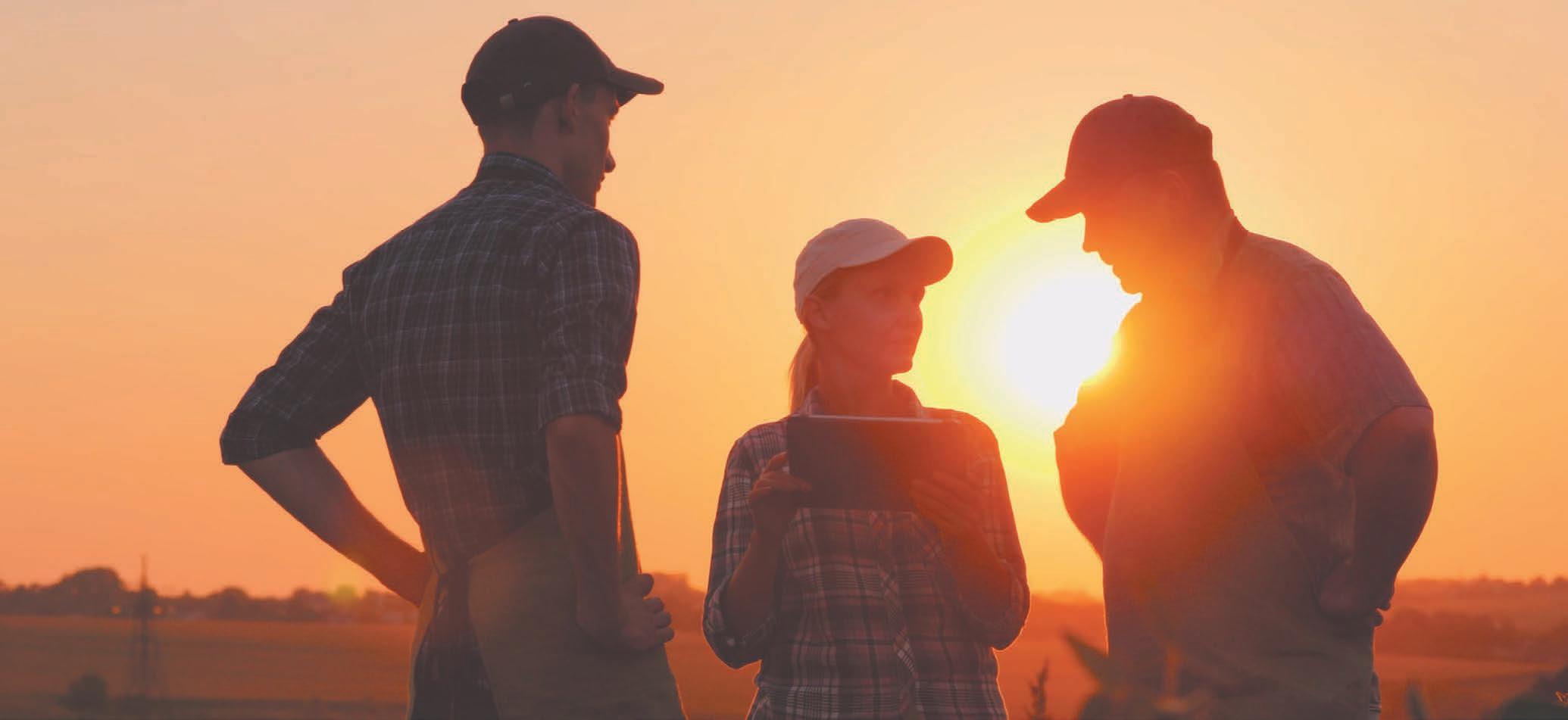
Frankton | November 10 | 944 cattle
$/kg or $/hd
Aut-born weaner dairy-beef heifers, 154-211kg 520-720
Weaner Hereford-Friesian heifers, 91-132kg 320-545
Weaner Hereford-Friesian bulls, 86-153kg 300-695
Weaner Friesian bulls, 92-140kg 340-575
61
FARMERS WEEKLY – farmersweekly.co.nz – November 21, 2022 Markets 61 Subscribe on YouTube Meet the people behind the farm gate On Farm Story is a celebration of farmers and farming - told in under five minutes.





Lenta | Te Pari’s NEW Crush Range We’re excited to release our new Lenta Crush range that is based on the well-known, tried and tested Classic Crush range with many new features and improvements to make your cattle handling easy! BUILT TOUGH TO WORK EASY! 62 FARMERS WEEKLY – farmersweekly.co.nz – November 21, 2022 Markets 62 AgriHQ market trends
Meat Slaughter price (NZ$/kgCW) Last week Last year North Island lamb (18kg) 8.65 9.50 North Island mutton (25kg) 5.30 6.75 South Island lamb (18kg) 8.65 9.20 South Island mutton (25kg) 5.30 6.70 Export markets (NZ$/kg) China lamb flaps 10.47 13.45 Wool (NZ$/kg clean) Two weeks ago Last year Coarse crossbred ind. 2.66 2.63 37 micron ewe 2.55 30 micron lamb Beef Slaughter price (NZ$/kgCW) Last week Last year North Island P2 steer (300kg) 6.60 6.60 North Island M2 bull (300kg) 6.30 6.60 North Island M cow (200kg) 4.75 5.00 South Island P2 steer (300kg) 6.35 6.30 South Island M2 bull (300kg) 6.05 6.15 South Island M cow (200kg) 4.70 4.80 Export markets (NZ$/kg) US imported 95CL bull 8.55 9.92 US domestic 90CL cow 8.77 8.66 Venison Slaughter price (NZ$/kgCW) Last week Last year North Island AP stag (60kg) 8.90 6.95 South Island AP stag (60kg) 8.95 6.95 Fertiliser NZ average (NZ$/tonne) Last week Last year DAP 1794 1135 Super 509 342 Urea 1340 955 Urea (Coated) 1289 Exports NZ Log Exports (thous. Tonnes) Sep Last year China 1,683,156 1,147,424 Rest of world 213,832 107,519 Carbon price (NZ$/tonne) Last week Last year NZU 88.3 64.9 Cattle Sheep Deer Fertiliser Forestry Steer slaughter price ($/kgCW) Lamb slaughter price ($/kgCW) NZ lamb and mutton slaughter (thous. head) Stag Slaughter price ($/kgCW) NZ cattle slaughter (thous. head) Data provided by 5.5 6.0 6.5 7.0 Nov Jan Mar May Jul Sep North Island South Island 0 10 20 30 40 50 60 70 06-Aug 06-Sep 06-Oct 06-Nov 06-Dec 06-Jan 5-yr ave This year Last year 7.5 8.0 8.5 9.0 9.5 10.0 Nov Jan Mar May Jul Sep North Island South Island 6.5 7.0 7.5 8.0 8.5 9.0 9.5 Nov Jan Mar May Jul Sep North Island South Island 0 200 400 600 800 06-Aug 06-Sep 06-Oct 06-Nov 06-Dec 06-Jan 5-yr Ave This year Last year
Sheep
Company
ArborGen Holdings Limited 0.220.270.199
The a2 Milk Company Limited 6.596.74.2
Comvita Limited 3.243.782.98
Delegat Group Limited 10.114.459.93


Fonterra Shareholders' Fund (NS) 3.043.782.75


Foley Wines Limited 1.381.571.32
Greenfern Industries Limited 0.0970.250.089
Livestock Improvement Corporation Ltd (NS) 1.351.731.3
Marlborough Wine Estates Group Limited 0.1850.260.155
NZ King Salmon Investments Limited 0.251.380.187
PGG Wrightson Limited 4.235.763.9
Rua Bioscience Limited 0.2450.530.23

Sanford Limited (NS) 4.275.074.03
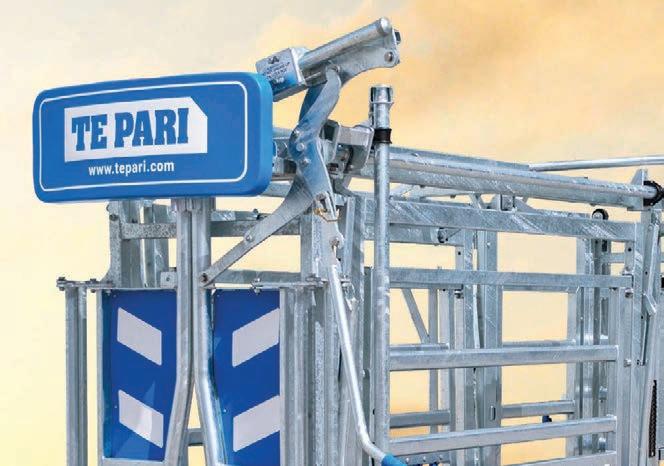
Scales Corporation Limited 4.585.594.07
Seeka Limited 3.55.363.5
Synlait Milk Limited (NS) 2.973.582.9
T&G Global Limited 2.583.012.58
Call us direct on 0800 837 274 Visit us online at www.tepari.com Explore the NEW Lenta Crush range! Scan the QR Code to see more about the Lenta Range on our website 63 FARMERS WEEKLY – farmersweekly.co.nz – November 21, 2022 Markets 63 7.00 7.50 8.00 8.50 9.00 9.50 10.00 May-21 Jul-21 Sep-21 Nov-21 Jan-22 Mar-22 May-22 $/kg MS Sept. 2021 Sept. 2022
market
NZX
trends
Close YTD HighYTD Low
S&P/NZX Primary Sector Equity Index 124911429311724 S&P/NZX 50 Index 112311315010588 S&P/NZX 10 Index 109361272510291 Close of market Listed Agri shares Grain Dairy Dairy Futures (US$/t) Nearest contract Last price* Prior week4 weeks prior WMP 335533003635 SMP 322530903475 AMF 565055005820 Butter 483548355000 Milk Price 9.028.999.80 * price as at close of business on Wednesday Data provided by Canterbury feed wheat ($/tonne) 5pm, Wednesday Milk price futures ($/kgMS) Canterbury feed barley ($/tonne) Waikato palm kernel ($/tonne) WMP futures - vs four weeks ago (US$/tonne) 7.00 7.50 8.00 8.50 9.00 9.50 10.00 May-21 Jul-21 Sep-21 Nov-21 Jan-22 Mar-22 May-22 $/kg MS Sept. 2021 Sept. 2022 S&P/NZX 10 INDEX 10936 S&P/FW PRIMARY SECTOR EQUITY 12491 S&P/NZX 50 INDEX 11231 7.0 8.0 9.0 10.0 11.0 Nov Jan MarMay Jul Sep Nov Sep-2023 Sep-2024 350 400 450 500 550 600 650 700 Nov Jan MarMay Jul Sep Nov 350 400 450 500 550 600 650 700 Nov Jan MarMay Jul Sep Nov 3100 3200 3300 3400 3500 3600 3700 3800 Dec Jan Feb Mar Apr May Latest price 4 weeks ago 300 350 400 450 500 550 Nov Jan MarMay Jul Sep Nov
Weather
Chance of rain best in west
TEMPERATURES have definitely warmed up lately with most regions around New Zealand warmer than average over the past week.
Soil moisture deficits are increasing for the eastern South Island and parts of the lower North Island.



While there were some convective showers for Canterbury on Saturday last weekend (November 12) they may have been a bit hit and miss.
Last week started off dry and settled. A front we were looking at in the previous outlook to be moving northwards mid last week didn’t really eventuate in the end but more convective afternoon showers did.
This was especially true for the North Island. Inland parts of Canterbury may have seen some too but once again a bit hit and miss so not the silver bullet needed.
A front pushing in from the west on Friday, however, brought rain into the upper South Island then eastern South Island later in the day and into Saturday morning, so perhaps some relief there. The weekend saw unstable afternoon showers, more so in the west but hopefully some eastern areas picked up on a few of these.


The overall summary for the week ahead is more dry weather on the way for eastern regions with wet weather in the west.
ruralweather.co.nz
Soil moisture Temperature
Deficit 9am 15/11/2022
Monday looks to start off dry in the east and wet in the west thanks to a front moving in from the Tasman in a northwesterly airflow. More of the same on Tuesday with some scattered rain spreading into the eastern North Island. Both days see a chance of
Last 15 days rain
Observed rainfall 9am 31/10/2022 to 9am 15/11/2022
thunderstorms in the west, Tuesday has a higher chance.
Wednesday and Thursday expect a few showers in the west, rain for Fiordland and dry weather in the east as northwesterlies continue. Friday and Saturday are looking
Observed mean temperature 9am 31/10/2022 to 9am 15/11/2022
quite settled with high pressure, perhaps just Fiordland continues to have a few showers. On Sunday a front moves onto the lower South Island bringing rain or showers but this looks to weaken as it moves northwards.
Bring a mate and catch a break


Get along to your local Surfing for Farmers and be in to win a Barron Woolight sustainable surfboard.
Never surfed? No problem. Lessons are free, surfboards and wetsuits are provided, and there’s a BBQ after.
Getting off the farm and into the waves can help balance the stresses and strains of farming and you could win a Barron surfboard, we’ve got 10 to give away.
For more details and to find a surf spot near you visit www.rabobank.co.nz/surfing-for-farmers
64
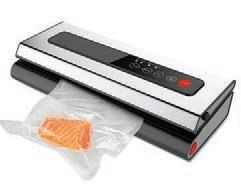








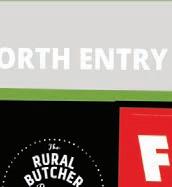

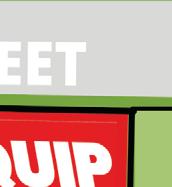


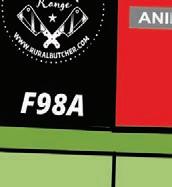







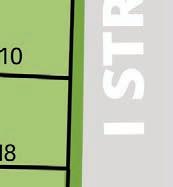


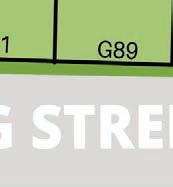


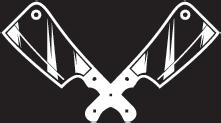






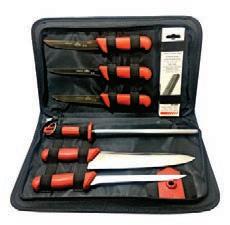

1 CRUSHES CATTLE CATTLE & SHEEP YARDS WEIGHING & SHEEP HANDLING FOR THE FARM MYSTERY CREEK, HAMILTON 30 NOVEMBER-3 DECEMBER SITE #F94-98 COME & SEE THE FARMQUIP TEAM AT THE 0800 843 024 843024 FARMING SOLUTIONS FOR CATTLE, SHEEP, DEER,EQUINE AND ON THE FARM THE RURAL BUTCHER F98,96,94 THE RURAL BUTCHER F98A Promotional offers valid until 31st December 2022. All prices exclude freight & GST unless speci ed.




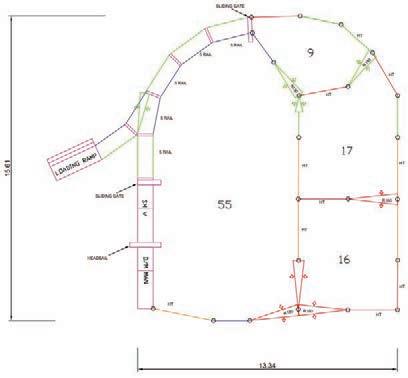
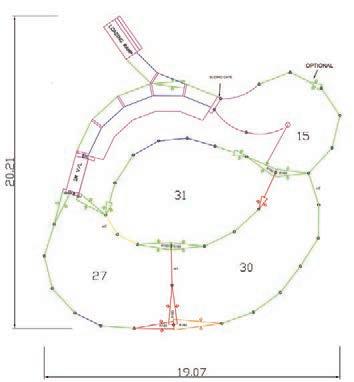
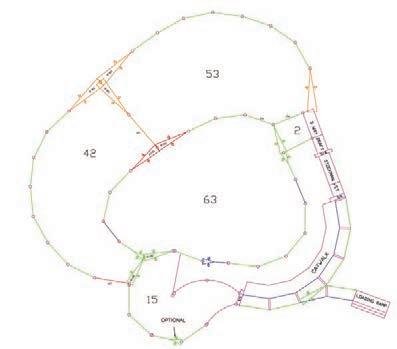
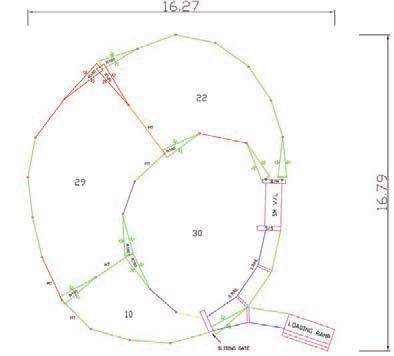

CATTLE HANDLING 36 Head Loading Ramp 10 Head 46 Head Yard - with curved force tub • Large curved tub with alloy sheeted sides • Heavy duty anti backing gate for operator safety • Headbail & sliding gate in race • Drafting gates • 97 x 42mm heavy duty cattle rail • Optional loading ramp 84 Head Yard - with 5 section race 48 Head 27 Head 9 Head • Large, spacious yard with good animal ow • 97 x 42mm heavy duty cattle rail which minimises animal bruising • Optional cattle crush available • Optional loading ramp POPULAR YARD DESIGN #1 130 Head Yard - with cattle free area 40 Head 36 Head 37 Head 15 Head Catwalk LoadingRamp • Popular Mid-Large scale yard • 4 working pens with curved ow • Circular force pen & gate for operator safety • Cattle free area - allows complete operator safety • Optional catwalk available • Optional cattle crush and loading ramps available POPULAR YARD DESIGN #3 POPULAR YARD DESIGN #2 843024 27 Head Plan 160 Head Plan 500 Head Plan 89 Head Plan 100 Head Plan 102 Head Plan Not all cattle yards are the same. Stockman cattle yards are designed to give the farmer the best quality product combined with the best working design. MORE STEEL MORE STRENGH MORE SPACE PER ANIMAL MORE DESIGNS 2 0800 843 024 Mystery Creek, Hamilton | 30 Nov-3 Dec | F94-F98 ORDER CATTLESTOCKMANYARDS BEFORE DEC 31ST & RECEIVE A FREEUPGRADE*CATWALK *Terms & Conditions apply, FREE catwalk upgrade includes supply of FRP cat walk grating & xings on yard designs over $25,000.00 +gst Promotional offers valid until 31st December 2022. All prices exclude freight & GST unless speci ed.




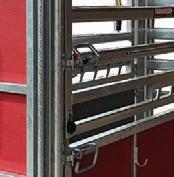



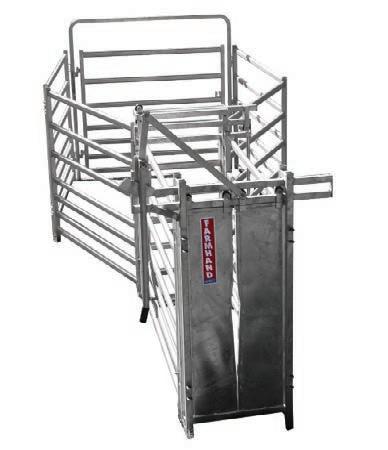
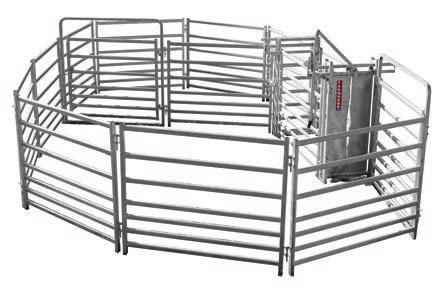

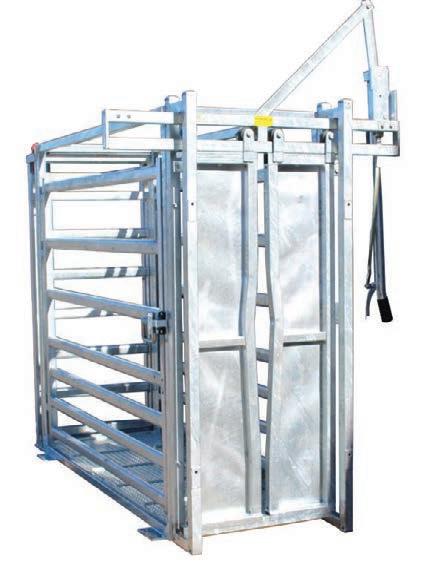

CATTLE HANDLING 3 0800 843 024 COST EFFECTIVE YARDS FOR LIFEST YLE TO L ARGE FARMS Farmhand 20 Head Yard Farmhand 10 Head Yard Farmhand 32 Head Yard BLUE 1800 GREEN 2100 A3 N T S 1 OF 1 FH 32 R Farmhand Curved Force Tub Farmhand Farmhand Farmhand Yard Panels Bundle of 10 Farmhand 20 Head Yard Farmhand 5 Head Yard • 7-rail multi-purpose for cattle and sheep • Farmhand walkthrough headbail • Farmhand sliding gate • Hot dipped galvanised • Kit set delivered to main depot (Approximately 20 head yard size, depending on animal size) $7,990.00 +GST (Approximately 5 head yard size, depending on animal size) • 7-rail multi-purpose for cattle and sheep • Farmhand walkthrough headbail • Farmhand sliding gate • Hot dipped galvanised • Kit set delivered to main depot $ 5,490.00 +GST Loading Ramp 20 Head 12 Head Farmhand 32 Head Yard • 7-rail multi-purpose for cattle and sheep • Farmhand walkthrough headbail • Farmhand sliding gate • Hot dipped galvanised • Kit set delivered to main depot $11,990 .00 +GST Add loading ramp for $3,695.00 + GST Excludes loading ramp Loading Ramp 15 Head 25 Head 9 Head Farmhand 49 Head Yard • 7-rail multi-purpose for cattle and sheep • Farmhand walkthrough headbail • Farmhand sliding gate • Hot dipped galvanised • Kit set delivered to main depot $16,990 .00 +GST Add loading ramp for $3695.00 + GST Excludes loading ramp Mystery Creek, Hamilton | 30 Nov-3 Dec | F94-F98 Stockmaster Vetless Crush $ 8,990 .00 $ 5,995.00 +GST Farmhand Vetless Crush Farmhand Slam Latches Farmhand Cattle Yard Gates Farmhand Vetless Cattle Crush Farmhand Farmhand Headbail Farmhand Headbail Swingbail Stockman Farmhand Curved Force Tub Farmhand $ 9,990.00 +GST Stockmaster Vet Crush • Economical crush for weighing and handling • Stockmaster walkthrough headbail • 75 x 50 base frame • Split gates on both sides • Hot dip galvanised • Heavy duty steel oor • Single sliding entry door • Vet access gates • Made in New Zealand Optional offside draft handle $590.00+ GST Optional offside draft handle $495.00+ GST • • • • • Economical crush for weighing and handling Farmhand walkthrough headbail 50 x 50 base frame One piece gates on both sides • Hot dip galvanised • Heavy duty steel oor Single sliding entry door • Includes Antibacking ratchets Optional offside draft handle $590.00+ GST +GST • Economical crush for weighing and handling • Stockmaster walkthrough headbail • 75 x 50 base frame • Split gates on both sides • Hot dip galvanised • Heavy duty steel oor • Single sliding entry door Made in New Zealand • FREE OFFSIDE DRAFT HANDLE Promotional offers valid until 31st December 2022. All prices exclude freight & GST unless speci ed.




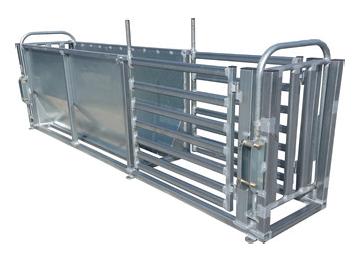





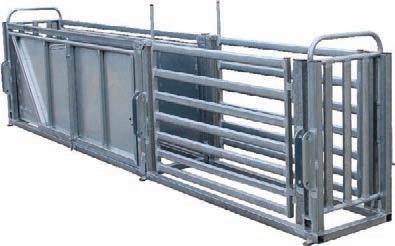
Crutch and Weigh Combo Sheep Handler Daggers Mate Sheep Handler • The ultimate machine for fast and ef cient dagging and crutching • Air controlled on skids • T ips sheep on their sides for dagging and crutching • Adjustable overhead clamp • Made in New Zealand The only automated sheep handler giving full access to belly and feet. T ips sheep on their sides for dagging & crutching • Made in New Zealand • • Auto Weigh Sheep Handler Fast and ef cient weighing, drafting and dagging 3-way and 5-way drafting options Made in New Zealand • • • 3-way and 5-way drafting options • • Fully automated weighing • Compatible with Gallagher & TruTest Scales 3-way drafting Tips sheep on side for crutching and dagging Adjustable overhead clamp Entry shut o gate Auto Catch Automatic ramp clamp Entry ramp (adjustable) Made in New Zealand Open access to feet and belly Air controlled Hot dip galvanised Rubber lined oor and slides THE ONLY AUTOMATED SHEEP HANDLER AVAILABLE THAT GIVES FULL ACCESS TO FEET & BELLY SHEEP HANDLING 25 Head Yard Farmhand 12mtr Horse Pen Farmhand Loading Ramp Mystery Creek, Hamilton | 30 Nov-3 Dec | F94-F98 FREE GALLAGHER LOADBARS VALUED AT $1500 +GST Sheep Weigh Crate • Manua weighing and 3 way drafting • Alloy lightweight transportable • Mounts on to any ex sting loadbars $ 2,595.00 +GST Sheep Draft Module V-Sides $ 3,495.00 +GST • 3-way draft • 3110mm L x 600mm W (ext) • Fixed sided V 0800 843 024 4 Promotional offers valid until 31st December 2022. All prices exclude freight & GST unless speci ed. Farmhand Yard Panels - Bundle of 10 Farmhand Vet Crush Stockman Sliding Gate Farmhand Loading Ramp Stockman Headbail 150 Head Sheep Yard • Includes adjustable sides draft module • Heavy duty semi permanent sheep yards • Hot dip galvanised • No overhead frames on gates • Delivered as kitset 710 Head Sheep Yard $ 24,990 S-SHEETED PANEL S S GATE FREEPHONE 0800 843 024 FARMQUIP AND SHALL NOT BE .00 .00 $14,595 +GST Adjustable Sides Draft Module 3 Way Draft Module $ 4,395 .00 +GST • Fit into any existing sheep yard • 3 way draft • 4500 x 1000 x 600 (ext) $ 1,795.00 +GST • Fit into any existing sheep yard +GST FREE TRANSPORT KIT • Includes adjustable sides draft module • Heavy duty semi permanent sheep yards • Hot dip galvanised • No overhead frames on gates • Delivered as kitset


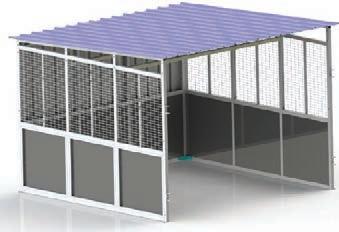

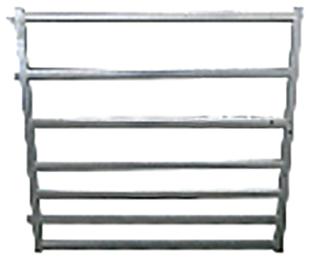













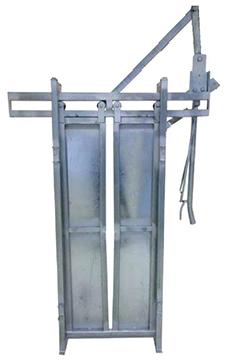



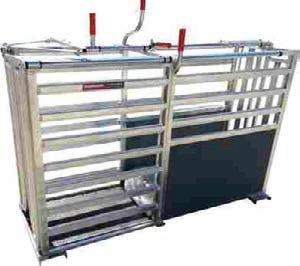









FOR THE FARM 2,990 • Shelter for: • Calves, horses, sheep, lambs, alpacas • Storage for: • Hay, farm implements, bikes and more! ShelterShed 3m x 3m Sheep/Calf Panels • Railed - 3m W x 1m H • Quick, easy pin together yard panel for a variety of uses • Use for sheep/calves/goats 195 EACH 3,595 Calf Weigh Crate Cattle Yard Gates • Height 1690mm 7 rail • 70 x 41mm cattle rail • Standard sizes only Sizes 750,1800,2100,2500,2700, 3100 mm wide. Hanging Hay Feeder Farmhand Loading Ramp 3,695 • Adjustable height platform $ .00 +GST PLUS FREIGHT 5 0800 843 024 .00 +GST PLUS FREIGHT .00 +GST PLUS FREIGHT .00 +GST PLUS FREIGHT Mystery Creek, Hamilton | 30 Nov-3 Dec | F94-F98 Lifestyle Hay Feeder $ 79 .00 +GST PLUS FREIGHT A3 1:100 Sam R 17/07/18 1 OF 1 SHEEPYARD SYSTEMS $ 2,895 Stockmaster Headbail .00 +GST PLUS $ 3,595 Stockman Headbail .00 PLUS +GST FREIGHT $ 895 .00 +GST PLUS FREIGHT Farmhand Swingbail Farmhand Gate Latches 20MM $ 69 PLUS +GST .00 FREIGHT $ 1,495 .00 +GST PLUS FREIGHT Farmhand Walkthrough Headbail Farmhand Yard Panels $ 2,990 .00 +GST PLUS FREIGHT • Pack of 10 panels and pins • 2100 L x 1800 H panels Sliding Yard Gate $ 895 .00 +GST PLUS FREIGHT - Including mounting brackets Stockman Dairy Drafter $ 8,995 .00 +GST PLUS FREIGHT • Draft 3 ways • Activated manually from remote control • Affordable system with no expensive software • Weighs calves up to 120kg 10% OFF ALL STANDARD GATES RRP $ $ $ $ 169 .00 +GST PLUS FREIGHT Round Horse Pens • 12 meter round pens • Kitset easy pin together system • 5 rail $ 3,990.00 +GST Optional ground spikes $15.00 each • 15,18, 20 metre also available - Includes striker plate Promotional offers valid until 31st December 2022. All prices exclude freight & GST unless speci ed.


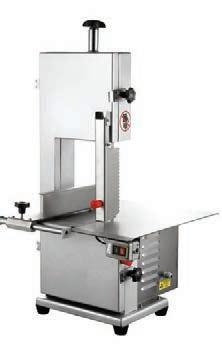












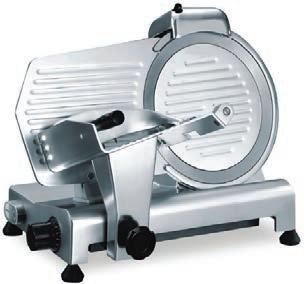

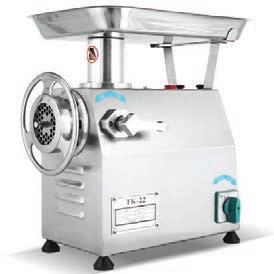



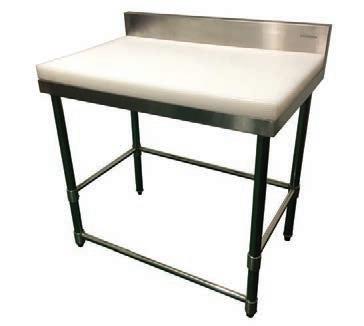
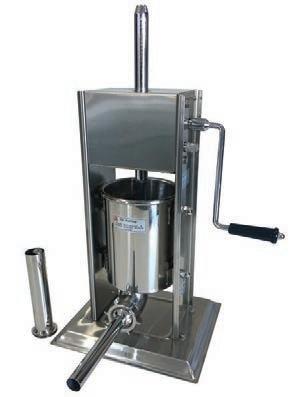






0800 843 024 WWW.RURALBUTCHER.COM 6 Mystery Creek, Hamilton | 30 Nov-3 Dec | F98A Rural Meat Saw .00 $ 1,090 BU91 $ BU93 BU01 $ 2,895 • • Throat size 270mm H x 200mm W 1.1kW motor 210mm alloy pulley wheels Table 500 x 600mm • • • • Throat size 320 x 250mm 3/4HP enclosed motor 250mm alloy pulleys Cutting guides • • Medium Meat Saw Large Meat Saw 2,250 BU92 $ 3,199 • • Throat size 460mm H x 285mm W 1.5kW motor 300mm alloy pulley wheels Table 700 x 550mm • • • The orginal farmers meatsaw • • Throat size 380mm H x 250mm W 1.5kW motor 260mm alloy pulley wheels Table 700 x 550mm • • .00 .00 .00 THE RURAL BUTCHER Stainless Steel Sink Bench •1200 L x 600 D BU82 559 .00 $ 799 BU94 $ 477 BU14 Rural Meat Mixer Rural Meat Slicer • Easy mixing handle and pivoting cradle with lid. Slice meat to perfection every time Suitable for home, to semi professional use • • Rural Mincer T22 • Make mince from home • Stainless steel body • 850W motor $ 999 BU09 Rural Mincer T12 • Make mince from home • Stainless steel body • 750W motor 599 BU08 • Capacity 150kg/h $ .00 .00 .00 $ .00 Corner Bench Unit • 900 x 900 BU83 459 .00 $ Stainless Steel Workbench 1200 L x 600 D 379 • BU80 .00 $ Butchers Block Workbench • 900 L x 600 D BU81 649 .00 $ Rural Sausage Filler 3L • Make sausages at home $ 256 BU13 $ 273 BU132 Burger Pattie Press • 130mm diameter Double Burger Pattie Press • 130mm diameter $ 26 .00 BU131 BU10 Rural Sausage Filler 7L $ 343 • Make sausages at home .00 .00 .00 +GST +GST +GST +GST +GST +GST +GST +GST +GST +GST +GST +GST +GST +GST Promotional offers valid until 31st December 2022. All prices exclude freight & GST unless speci ed. +GST +GST SEE US ONSITE FOR FIELDAY SPECIALS Small Meat Saw

















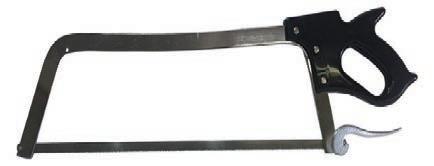




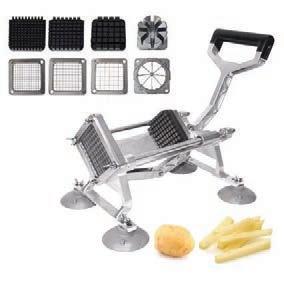
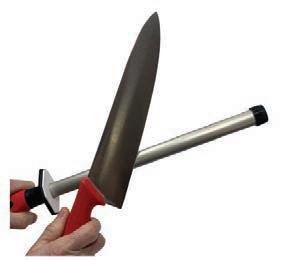


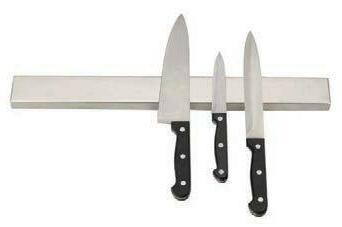






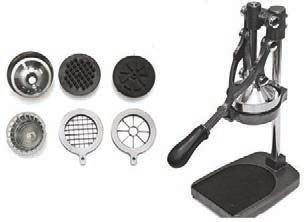



WWW.RURALBUTCHER.COM 0800 843 024 THE RURAL BUTCHER 7 BU58 8” Cleaver White Handle 6” Cleaver Red Handle 8.5” Cleaver Yellow Handle Ox Cleaver Red Handle BU59 BU144 BU145 $ 83 $ 68 $ 51 $ 35 Railed Wall Shelf 160 BU84 $ Chopping Board • 1200 L x 300 D • 600 L x 400 W 40 D 148 BU95 $ Poultry Scissors BU96 29 $ Meat Tenderiser Mallet BU202 $69 Butcher Saw • Stainless frame 18” 25” 96 22” BU50-52 $ 83 $ 71 .00 +GST .00 .00 $ Vacuum Sealer • Dual power mode for use at home, camping or on the boat • AC 240V & DC 12V plug BU71 $ 216 .00 .00 +GST .00 .00 .00 .00 .00 .00 .00 Sealer Bags - 3 x rolls 280 x 5000mm • 49 BU77 $ .00 Bug Zapper BU197 $ 169.00 +GST +GST +GST +GST +GST +GST +GST +GST +GST +GST +GST Chip/Vege Cutter BU302 165 Juice Press $ 47 BU110 Magnetic Knife Holder T-Meat Grab Hook 10 • 4” hook 11 • 5” hook $ $ BU60/61 Single Swivel Meat Hook 35 • 14mm x 270mm 27 • 10mm x 235mm BU62/63 Bacon Hanging Hook • 200mm long BU148 $ $ $ .00 .00 Double Carcass Swivel Hook BU67 47 330mm width hook to hook • .00 $ 27 .00 +GST $ .00 .00 BU300 Butchers Apron $ 36 BU105 • PPU .00 .00 .00 +GST BU164 $15 EasySharpe 3 Stage Sharpener .00 *Knife not inluded EasySharpe Diamond Rod BU167 $ 27.00 *Knife not inluded Plastic Knife Pouch 325mm L Hold up to 4 knives • • 30 BU139 .00 $ Butcher Chainmail Glove BU68,69,70 $ 153 .00 146 $ .00 +GST +GST +GST +GST +GST +GST +GST +GST +GST Mystery Creek, Hamilton | 30 Nov-3 Dec | F98A CHRISTMAS GIFT IDEAS FOR THE HOME Promotional offers valid until 31st December 2022. All prices exclude freight & GST unless speci ed. +GST +GST +GST +GST SEE US ONSITE FOR FIELDAY SPECIALS


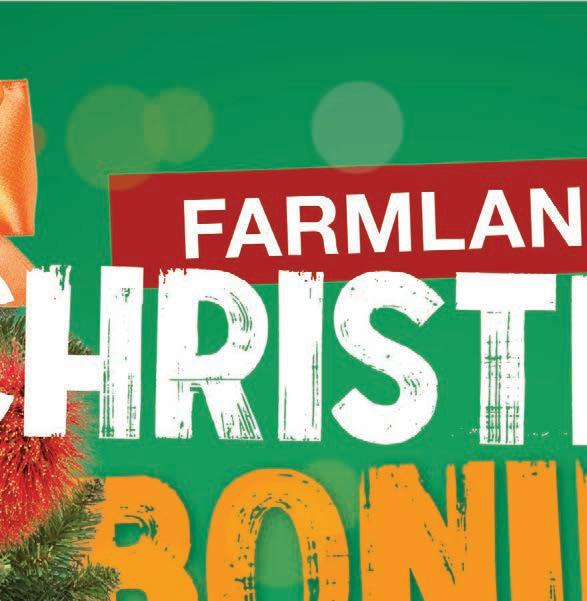
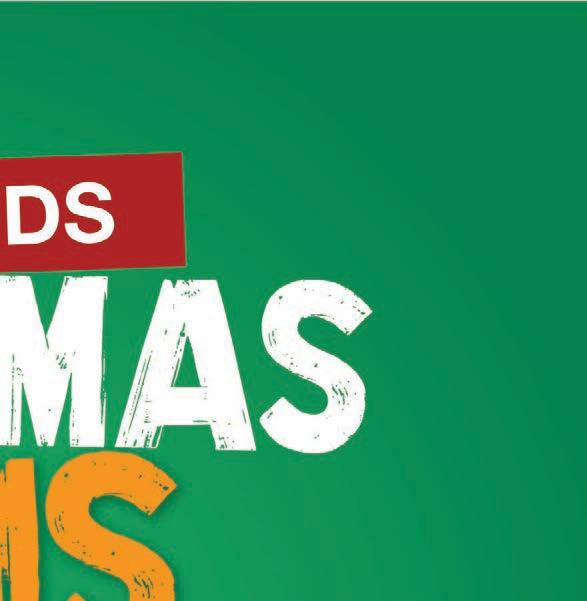


























See us on site F98A for great Fielday o ers! Perfect Christmas gifts for him & her. THE RURAL BUTCHER Mystery Creek, Hamilton | 30 Nov-3 Dec | F98A 11 pc Butcher Knife Set BU45 • Ergonomic polpropylene antimicrobial handles BU44 2 pc Filleting Knife Set • Ergonomic polpropylene antimicrobial handles $ 60 BU97 8 pc Butcher Knife Set • Ergonomic polpropylene antimicrobial handles .00 +GST CHRISTMAS GIFT IDEAS FOR THE HOME SEE US ONSITE HOT FIELDAY PRICE







































 Neal Wallace & BusinessDesk NEWS Environment
Neal Wallace & BusinessDesk NEWS Environment



























































































































































































































 Stringleman NEWS Fonterra
Stringleman NEWS Fonterra



























 Hugh Stringleman TECHNOLOGY
Hugh Stringleman TECHNOLOGY









































 Catherine Chidgey Novelist
Catherine Chidgey Novelist











































































 Fieldays
Fieldays















































































































































































































































































































































































































































































































































































